Set in the sunny south of Spain, Seville offers year round blue skies, making it an ideal city break destination. From tasty tapas and passionate flamenco to the charming old quarter and stunning Mudéjar architecture, there’s so much to see. Read about all the things to do in Seville, that we enjoyed on our trip.
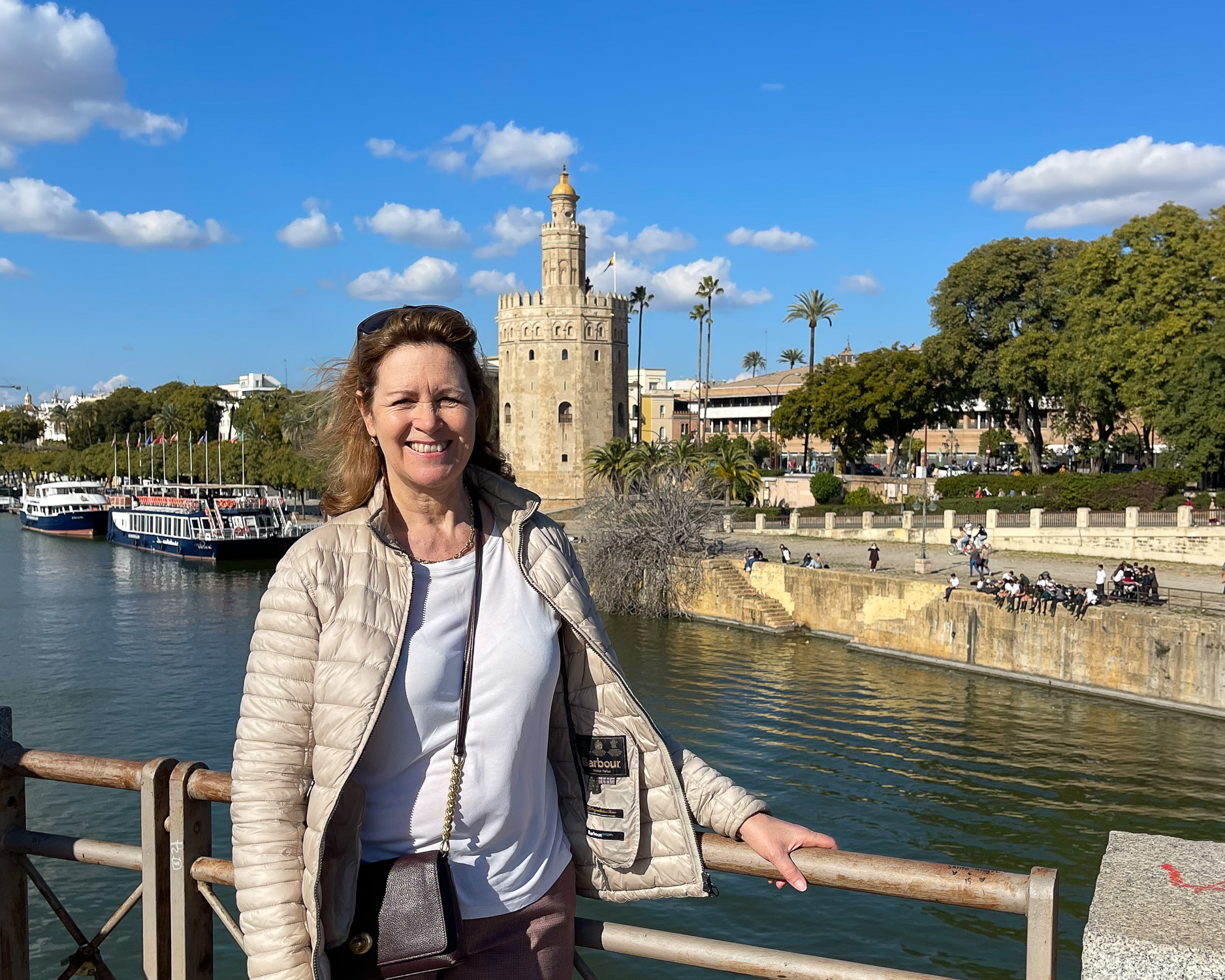
This article may contain affiliate links that provide commission on purchases you make at no extra cost to you. As an Amazon Associate I earn from qualifying purchases.
My 6 top things to do in Seville Spain
If you are short of time, or perhaps only have one day in Seville, here’s what you should see first.
- The Real Alcázar – Visit this gorgeous Mudéjar style palace and its gardens.
- Seville Cathedral – Wander around the huge cathedral and climb the Giralda bell tower.
- La Setas – Visit the rooftop walkway of this photogenic structure at sunset and stay on for the coloured light show.
- Plaza de España – Stroll through the semi circle plaza and ornate building that was built for the Ibero-American Exhibition of 1929.
- Take an evening Tapas Tour for a taste of Seville’s food and nightlife scene.
- Attend a Flamenco show to feel the passion of the dance and music.
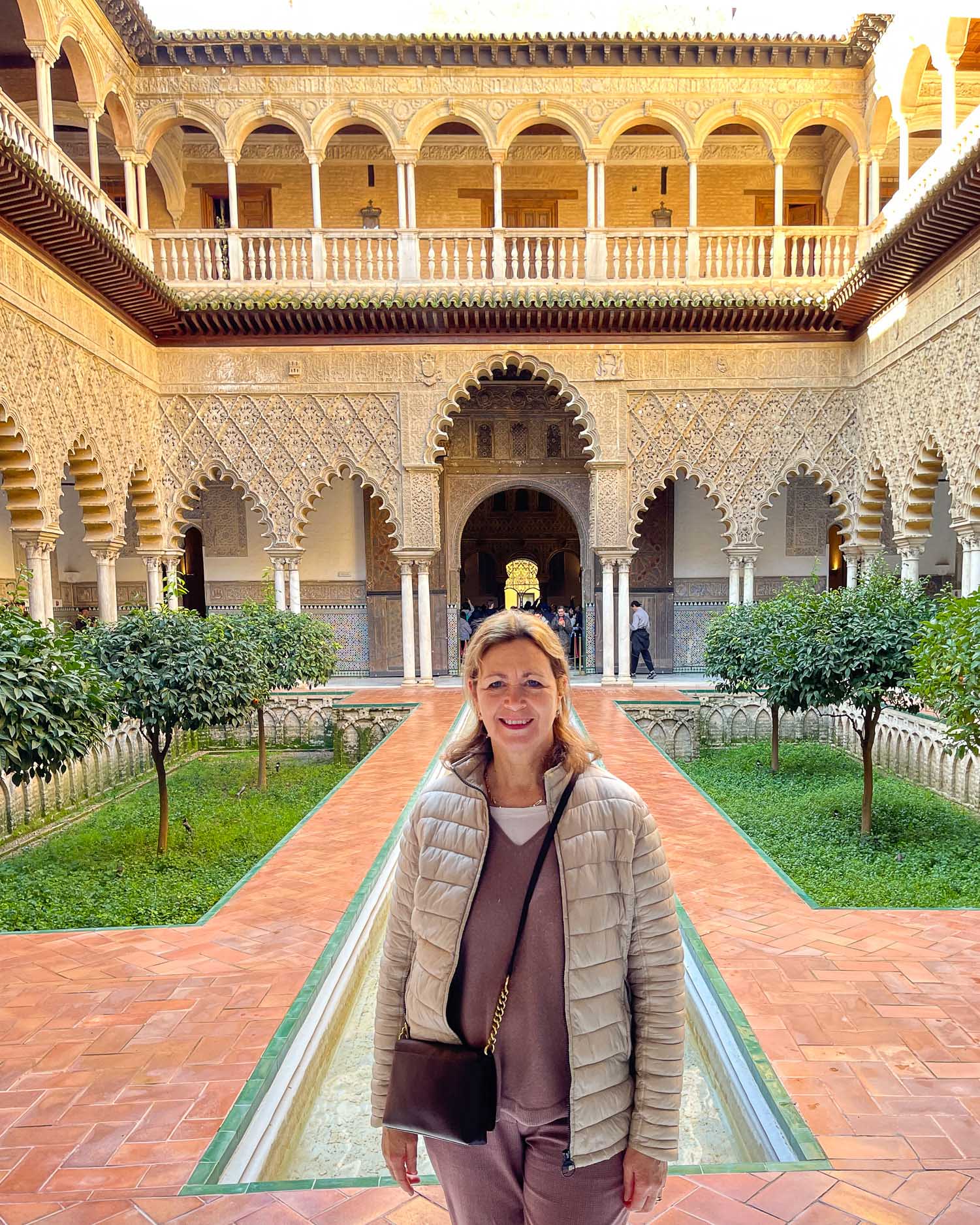
1. Alcázar Palace
Top of my list of things to do in Seville has to be the Real Alcázar or Royal Alcazar Palace. Set in the heart of old Seville, right opposite the cathedral, the palace was started in the 10th century and expanded by subsequent Almohad rulers of Seville.
In the 13th century, after Seville was reconquered by the Castilian kings, the Real Alcázar was rebuilt in Mudéjar style by King Pedro I, with later monarchs developing the palace.
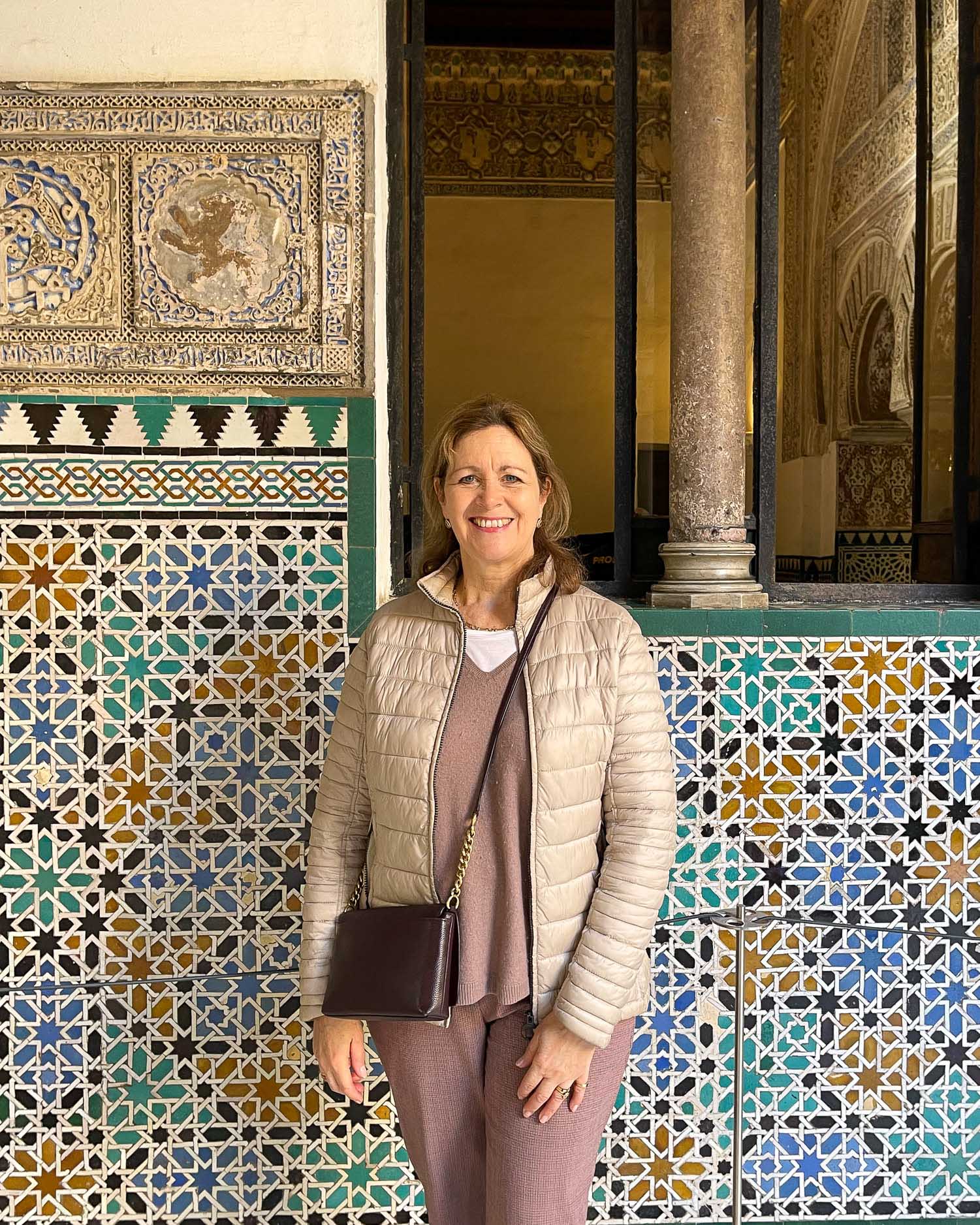
The Royal Alcazar Seville is richly embellished, with numerous courtyards decorated by Azulejo patterned tiles, intricate plasterwork and ornate archways. Internal courtyards are filled with orange trees, shallow pools and fountains, to provide cool and fragrant spaces during the heat of the Andalusian summer.
This UNESCO World Heritage Site offers a huge amount to see, so allow at least 2-3 hours for your visit. Since the Alcazar is such a popular attraction, we highly recommend booking your tickets in advance, so you can skip the long lines of those waiting to buy tickets on the day.
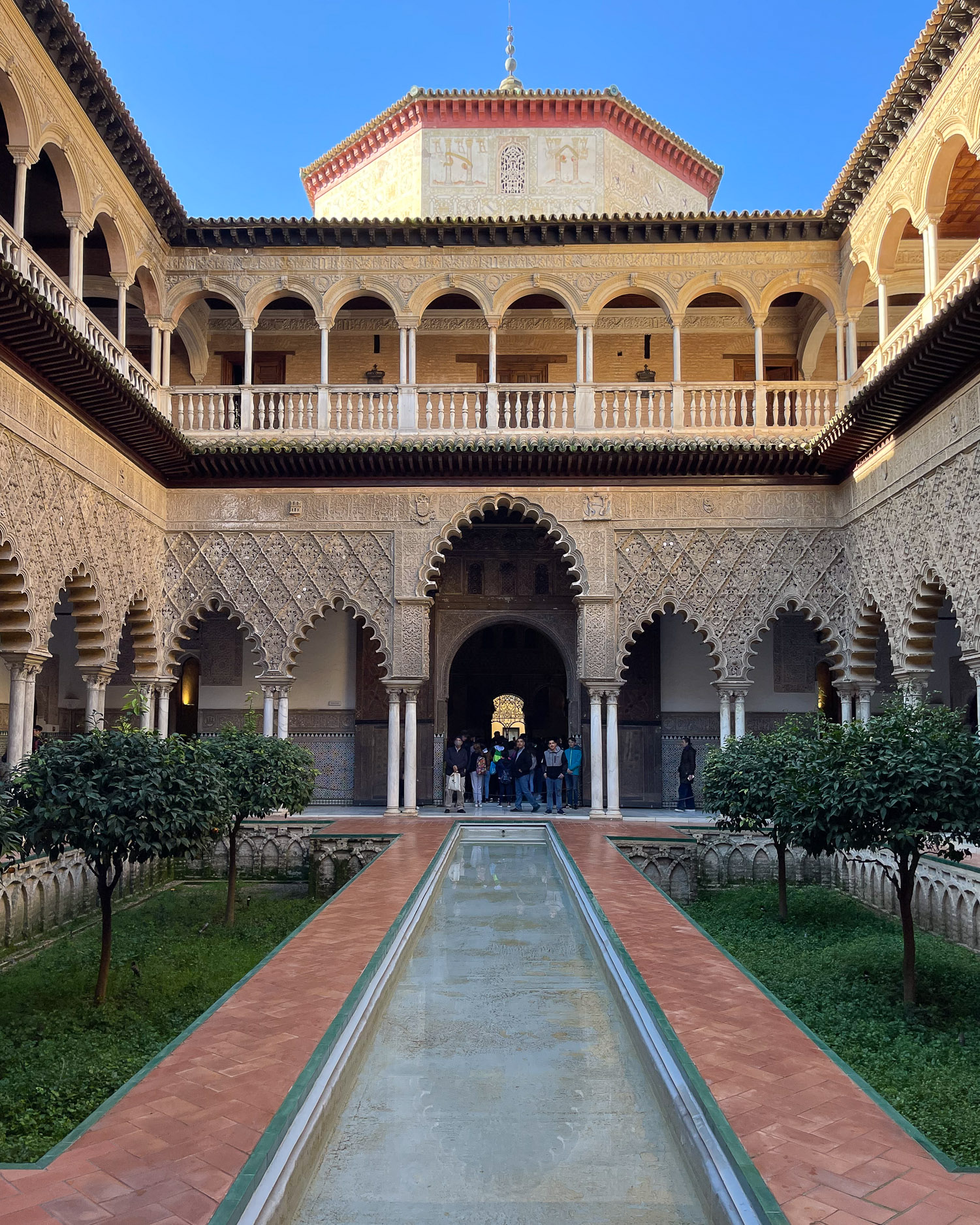
Highlights of the Réal Alcazar Seville
The highlights of the Alcazar Palace in Seville for us were;
Courtyard of the Maidens or Patio de las Doncellas. This enormous open patio has a sunken garden and shallow pool, designed to impress palace visitors as they were guided towards the Hall of the Ambassadors.
Hall of the Ambassadors or Salón de Embajadores is the throne room, the most magnificent of the reception rooms where monarchs received visiting dignitaries. Everything about the room, from the golden dome arching above, to the incredibly intricate plasterwork, was intended as a dazzling display of wealth and craftsmanship.
Palace of King Pedro I – The rooms and patios that surround the Hall of Ambassadors were constructed in the 14th century and are among the most beautiful and ornate in the palace, full of decorative tiles and carved plasterwork.
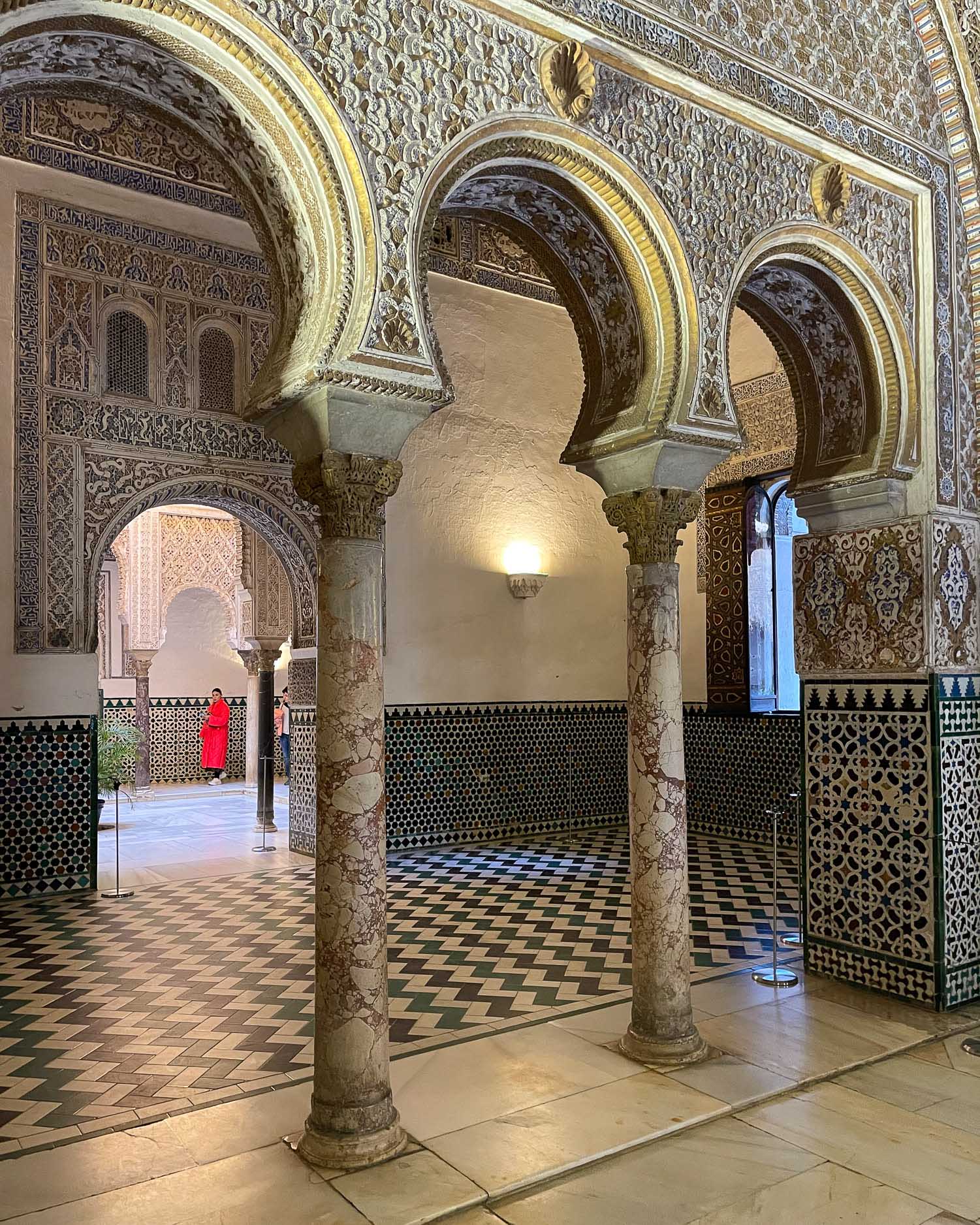
The Gardens of the Alcazar
In addition to the plantings within the palace’s internal courtyards, the Alcazar offers extensive gardens to visit. The area is divided into compartments in Moorish, Renaissance and English style.
Decorative pavilions are dotted around the gardens with places to rest and reflect. Thick planting offers shade from palms, citrus trees and other Mediterranean shrubs.
We enjoyed walking along the stone viewing terrace that overlooks the gardens to look down on the patterns of hedges and avenues of trees. Several scenes from Game of Thrones Season 5 were filmed at the Alcazar, featuring the gardens as the Water Gardens of Dorne.
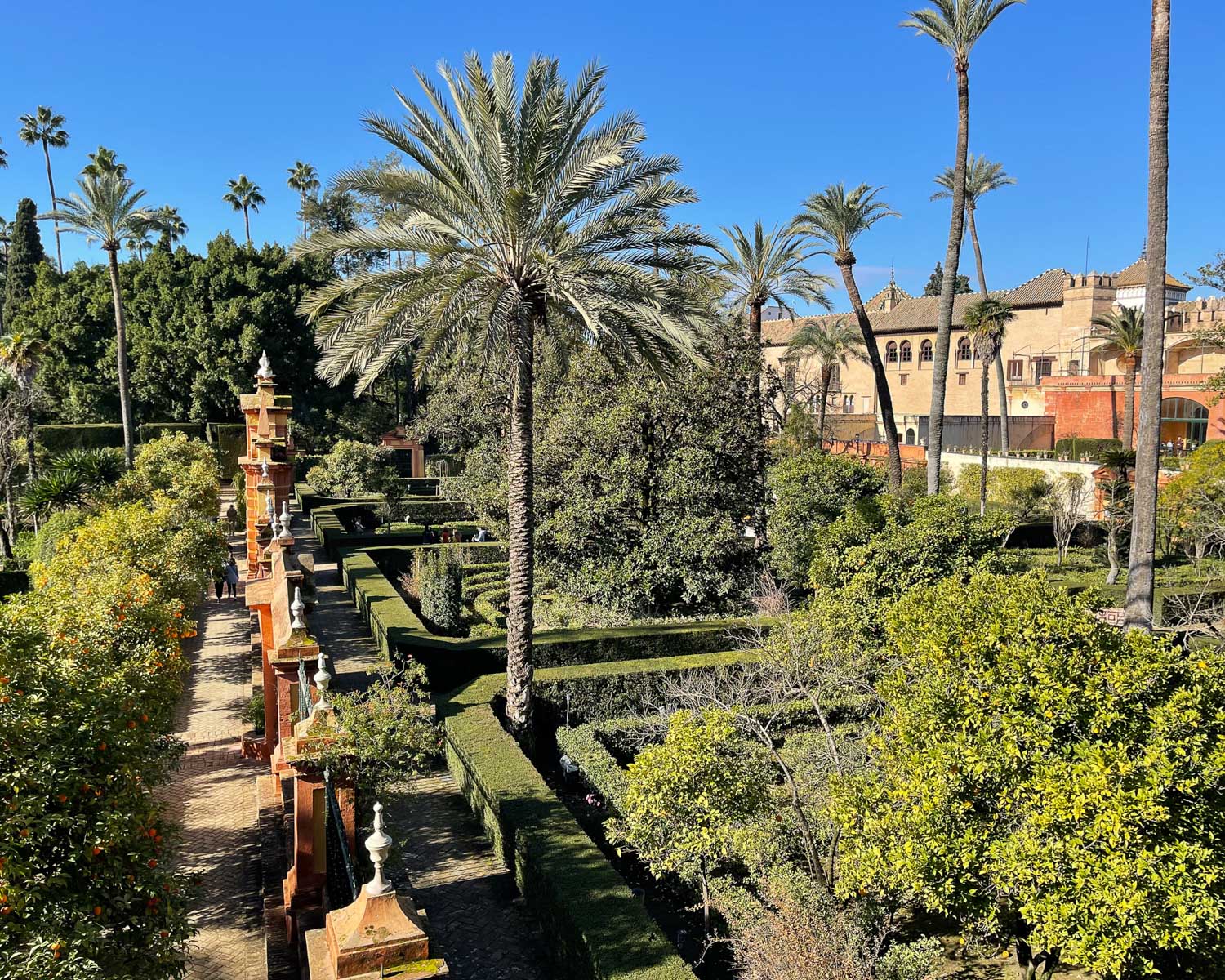
Options for Tours of the Alcazar of Seville
Royal Alcazar ticket. Skip the line tickets for timed entry.
Royal Alcazar ticket with audio tour. Skip the line tickets for timed entry plus audio tour to download on your smartphone (Android or IOS).
Royal Alcazar Ticket with a guided tour. Skip the line tickets with a guided tour (English, French or Spanish). The tour lasts 1.5 hours after which you can explore more of the palace and gardens on your own.
Royal Alcazar tickets and Seville Cathedral Tickets with guided tour. See both of Seville’s top attractions in a 3 hour guided tour with skip the line access.
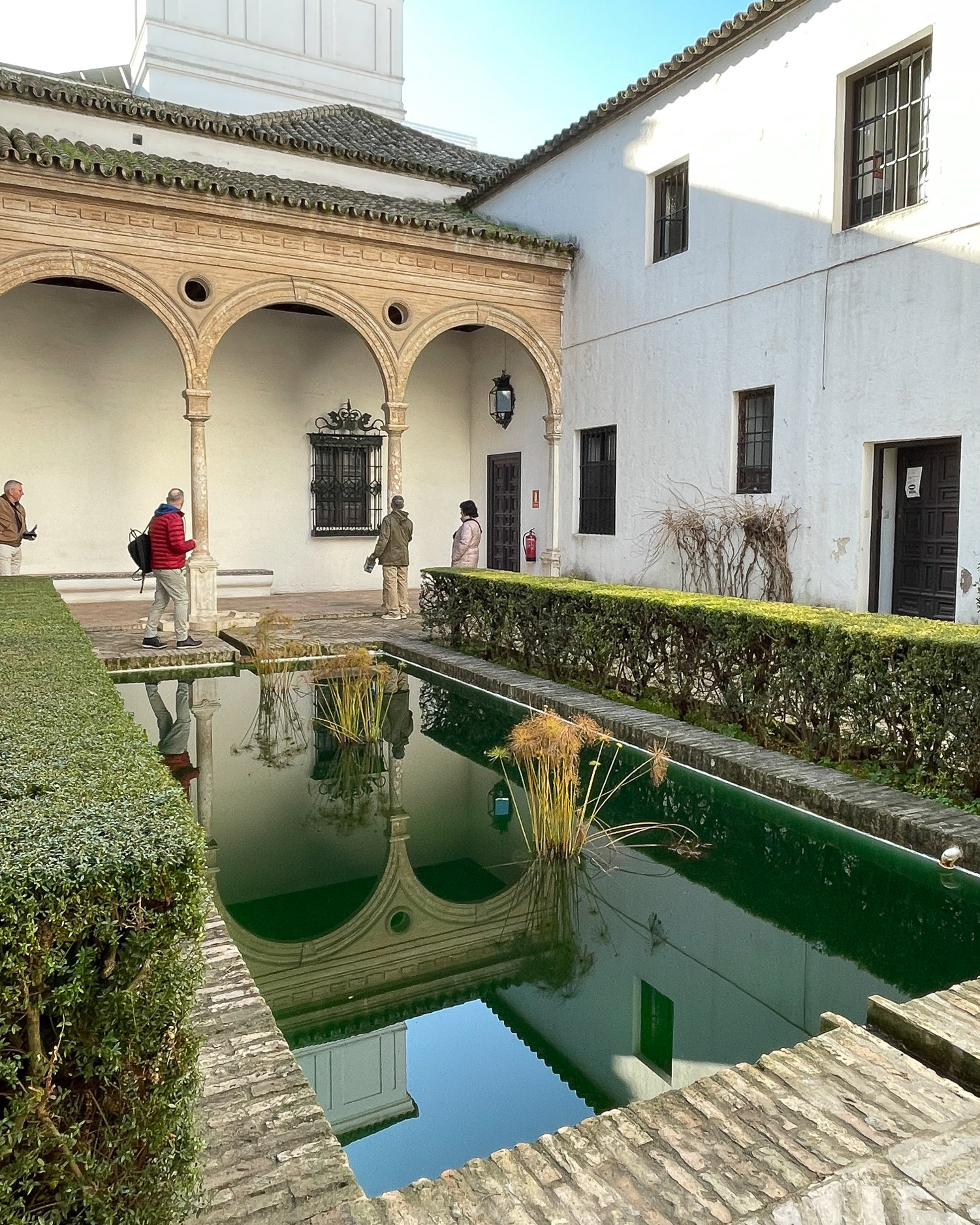
Alcazar Seville tickets and tips for visiting
As this is one of the most popular Seville attractions, we highly recommend booking tickets in advance, so that you can skip the line. Note there is a different entrance through the Lion Gate for those who have advance online tickets.
When entering with a pre-booked online ticket it is mandatory to show a passport or other photo ID – don’t forget to bring yours!
Book your online timed ticket to enter as early as possible in the morning – ideally before 10.30am. Later in the morning and afternoon, even the line for pre-booked tickets gets very long.
If you didn’t manage to prebook your timed ticket online, try to arrive by 9.30am to buy tickets as soon as the ticket office opens.
The Alcazar and Seville Cathedral are both big hitting cultural sights, each demanding a few hours to do them justice. I personally would not try to visit them both in one day, unless you are very short of time.
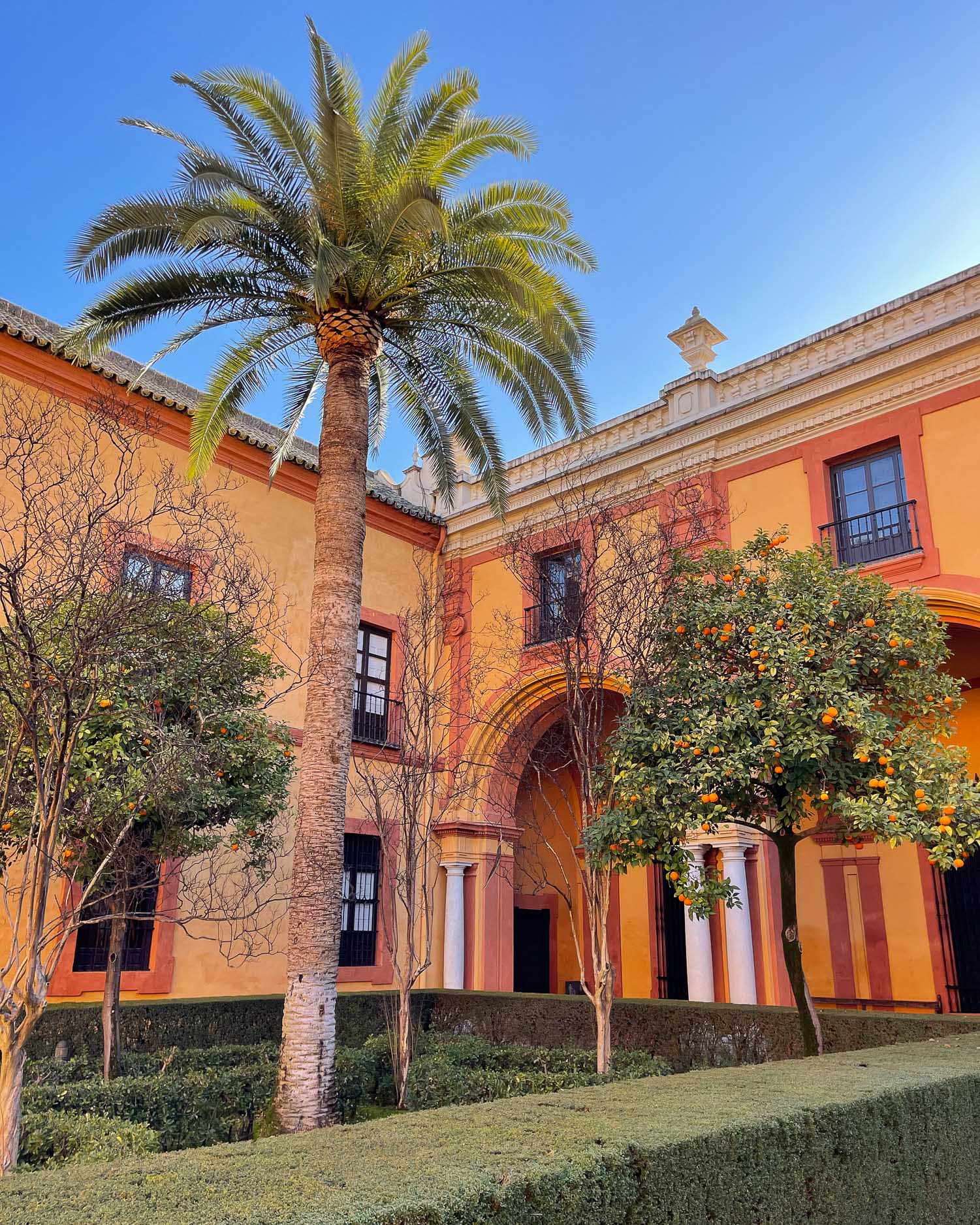
2. Seville Cathedral
Seville Cathedral dominates the old quarter of Seville, a huge construction that is the largest Gothic cathedral in the world. Plaza del Triunfo is the best place to appreciate the high walls and La Giralda Bell Tower.
The cathedral was built on the site of a 12th century Almohad Mosque, with work being completed over a hundred year period during the 15th century.
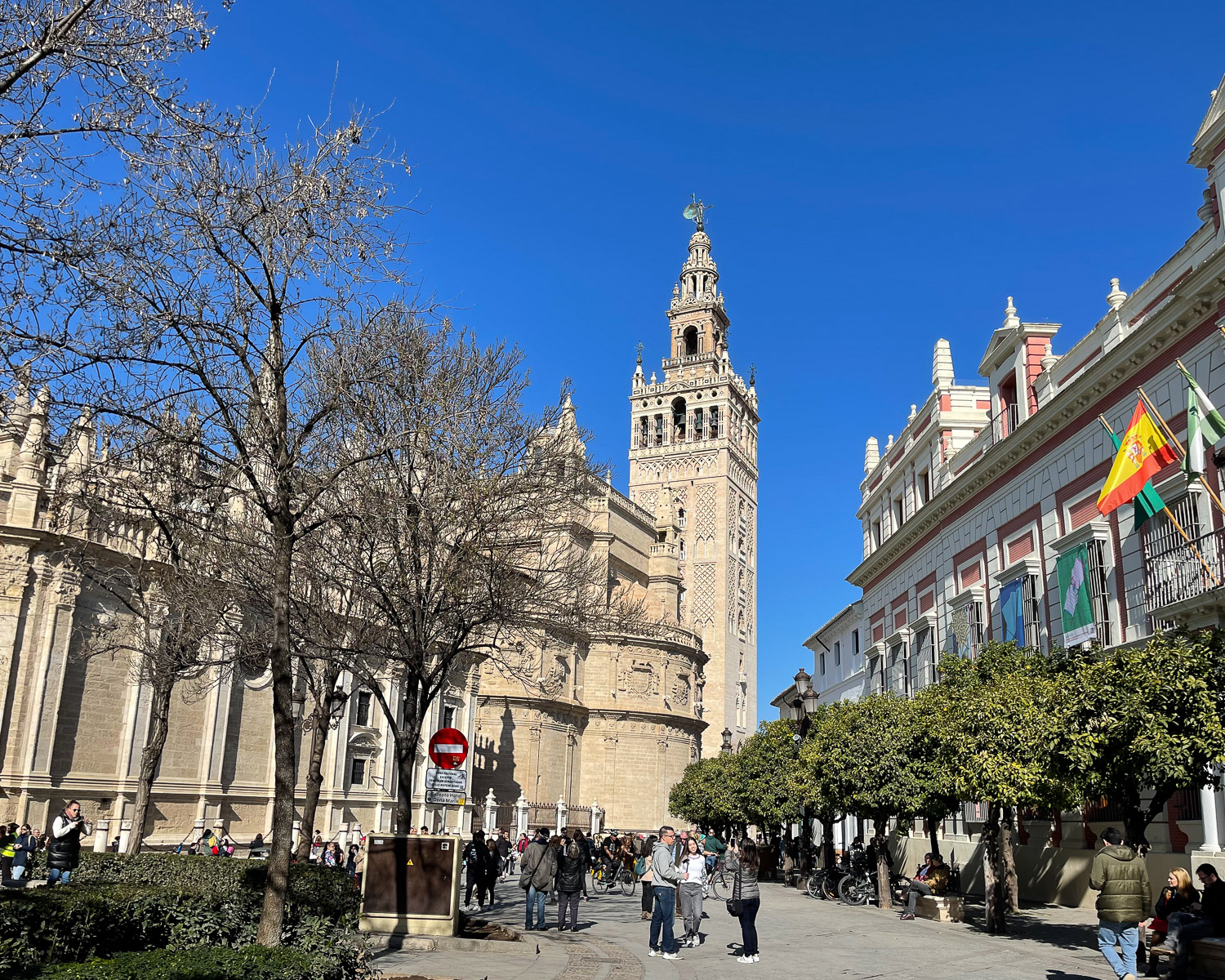
There’s plenty to see here, especially the views from the Giralda Tower, so allow at least 2 hours for your visit.
As one of the top city attractions, lines for Seville Cathedral tickets are often long, so we recommend that you book online tickets in advance.
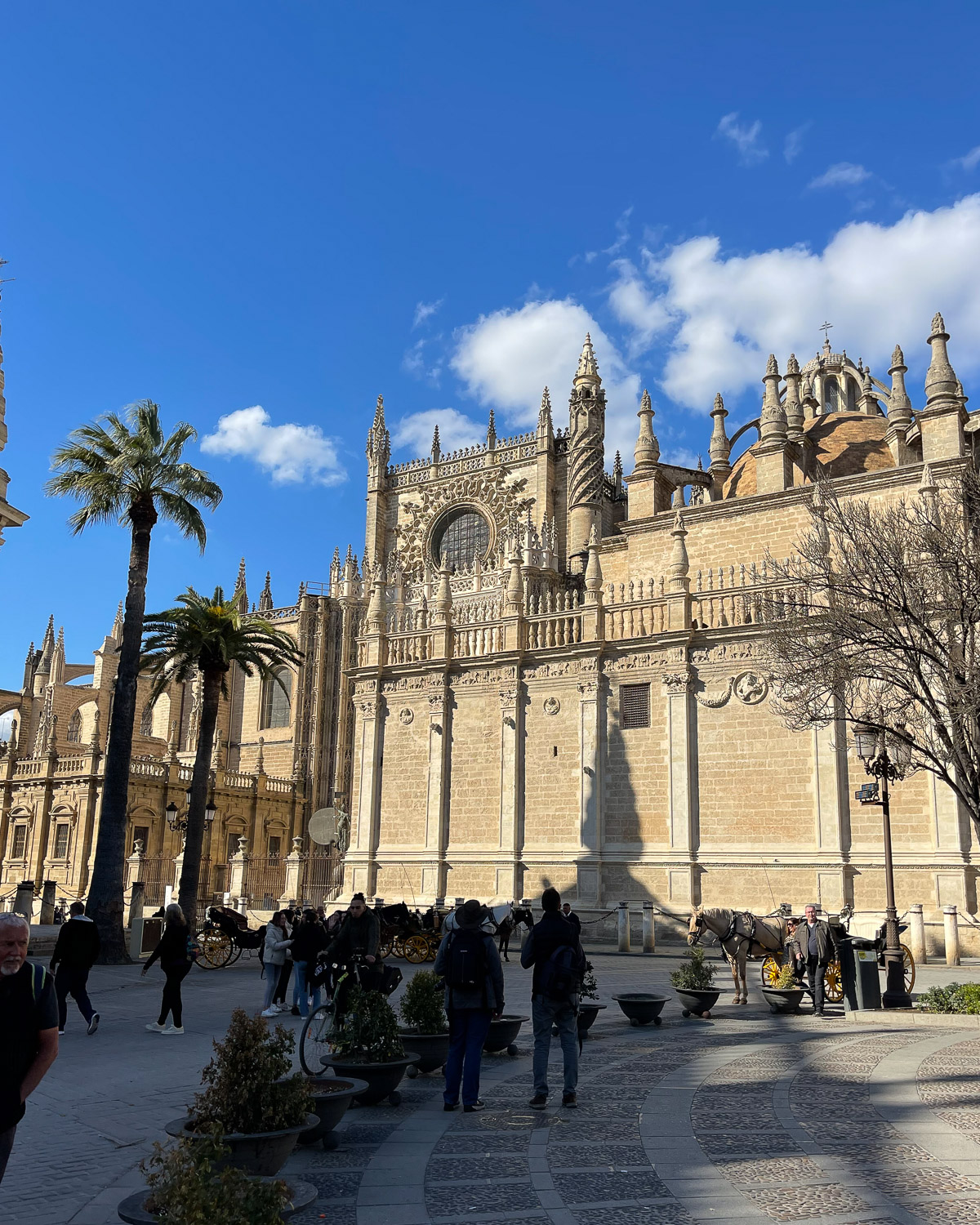
Highlights of Seville Cathedral
Once inside here are the highlights that we enjoyed.
Giralda belltower – Climb the tower for views over Seville. This was great fun and I’ve covered it in more detail in the next section.
Patio de los Naranjos – The court of the oranges is one of the few remaining elements of the old mosque. This patio full of fragrant orange trees was where the faithful would wash their hands and feet in the central fountain before entering the mosque.
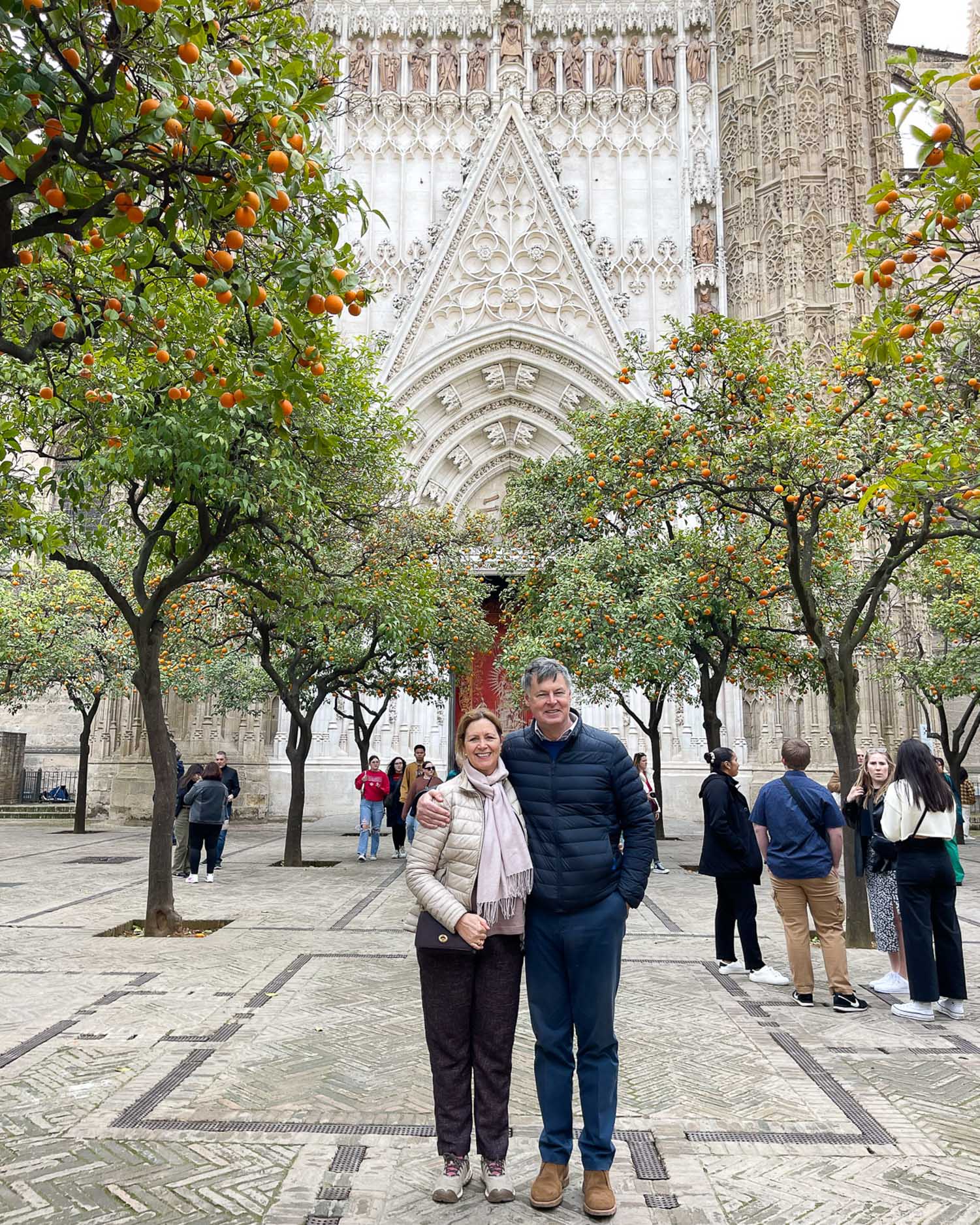
As lines can be long, we recommend that you book your Seville Cathedral tickets in advance.
The Capilla Major – The main chapel is surrounded by an iron grill, which makes it annoyingly difficult to photograph. Still the altarpiece of gilded wood (Retablo Major), carved with scenes from the life of Christ and dedicated to the cathedral’s patron, the Virgen de la Sede, is undeniably opulent.
The Chapter House – This jewel box space lined with crimson silk has a magnificent oval domed roof and paintings of the saints and Virgin by Seville’s favourite painter Murillo.
The Treasury – A collection of reliquaries and monstrances used in Catholic mass that are made of gold and silver encrusted with jewels. They are a reminder of the enormous power and wealth of the church in Seville.
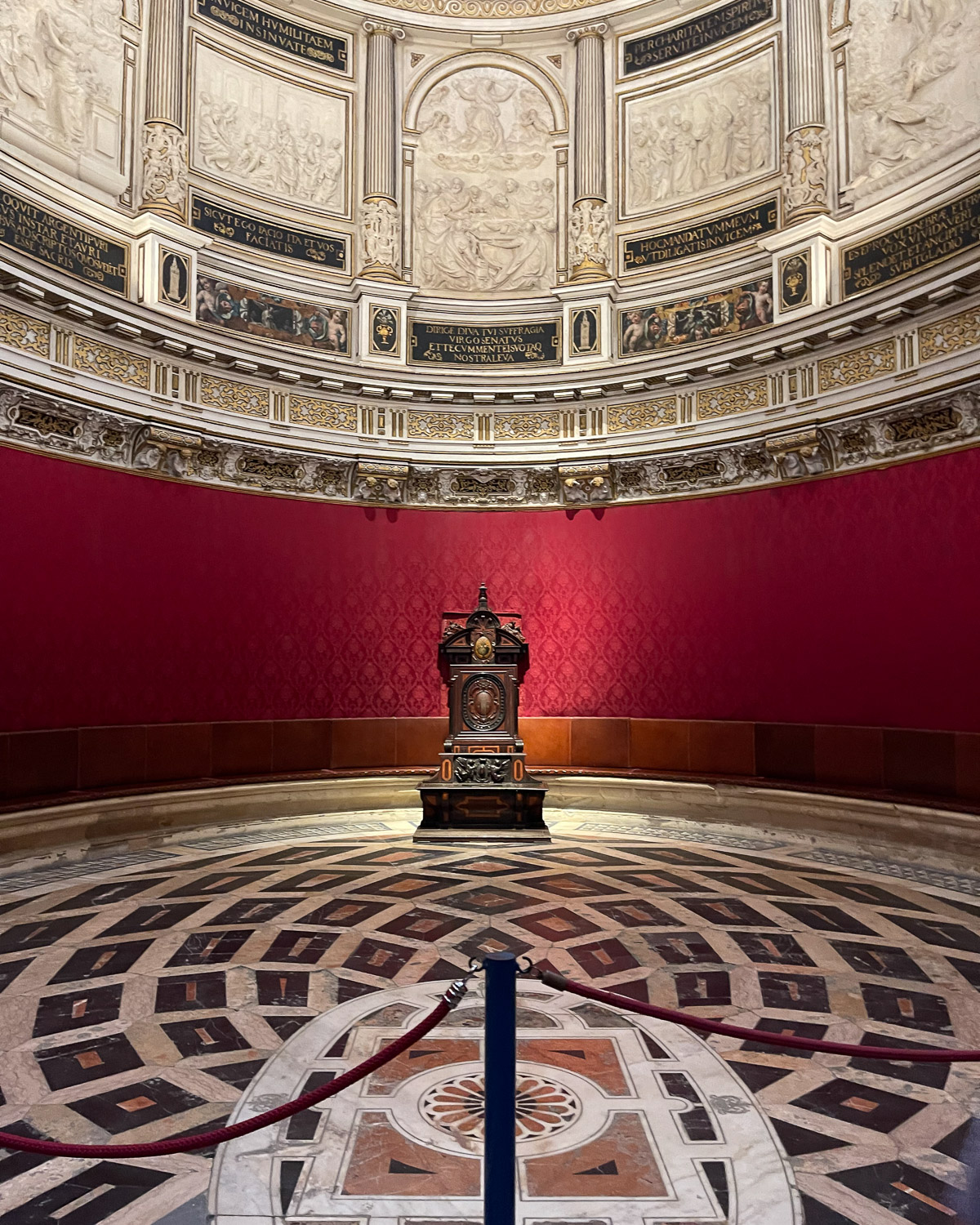
Art in Seville Cathedral
Artworks in the cathedral – Art lovers will find numerous masterpieces by Murillo, Goya and other major artists of the 15th to 18th centuries. We enjoyed the informal picture of Saints Justa and Rufina by Francisco de Goya in the Sacristy.
The Tomb of Christopher Columbus – This tomb of the great 15th century explorer draws the crowds and we’ve covered it in the next section.
Overall, we found Seville Cathedral rather overwhelming in its magnificence, reflecting the wealth of Seville that was generated by trade with the New World. Although masses are held here, the cathedral seems mainly given over to tourism, so if you are looking for a spiritual experience it’s better to find to one of the quieter churches nearby.
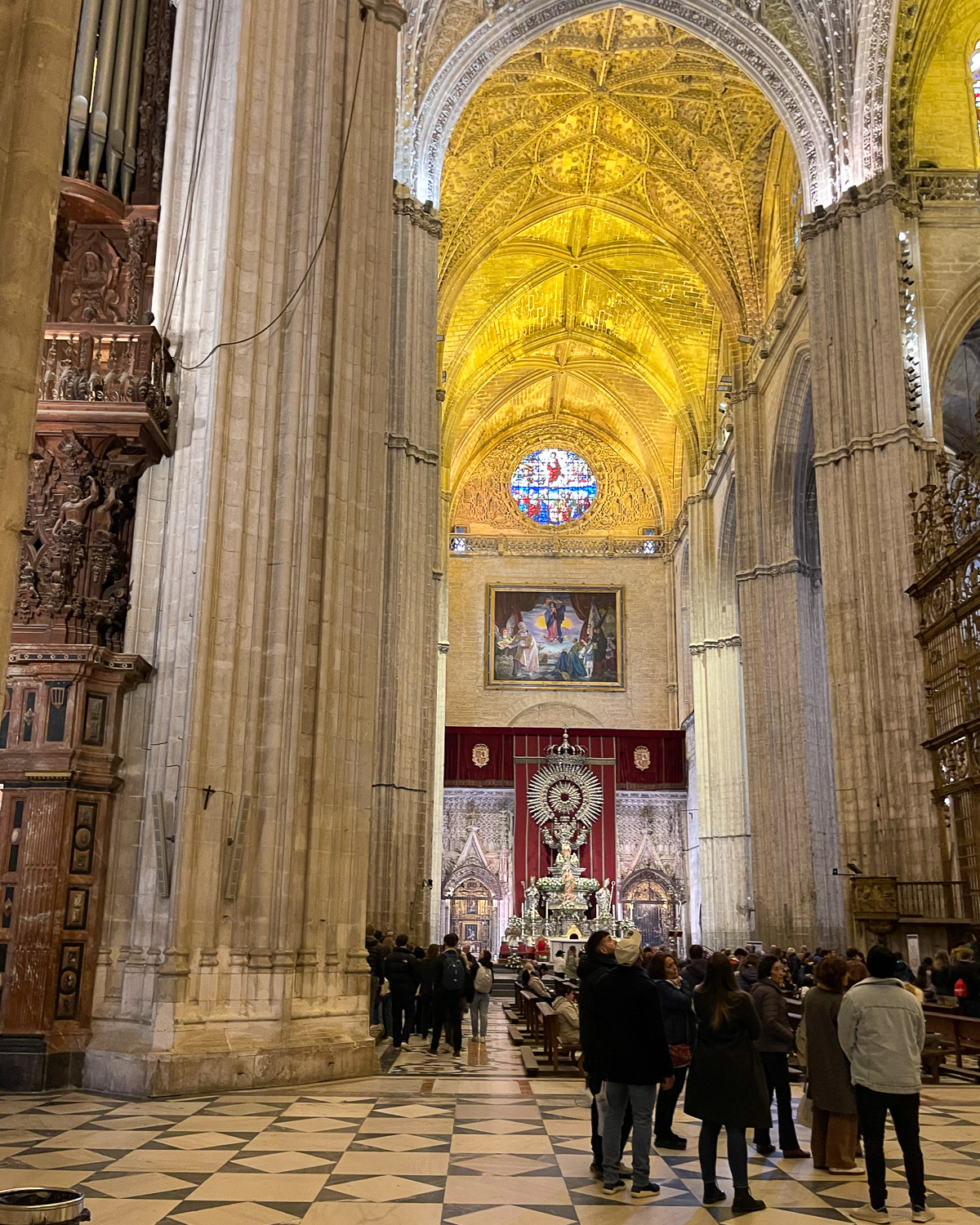
The Tomb of Christopher Columbus
One of the big draws of Seville Cathedral is the Christopher Columbus Tomb, which was constructed relatively recently in 1899. At each corner, four figures representing the kingdoms of Castile, Leon, Aragon and Navarra, bear the casket on their shoulders.
The 15th century explorer was sponsored by the Catholic Monarchs of Spain on his voyages to the “New World”, which opened up South America and the Caribbean for colonisation by Spain and other European powers.
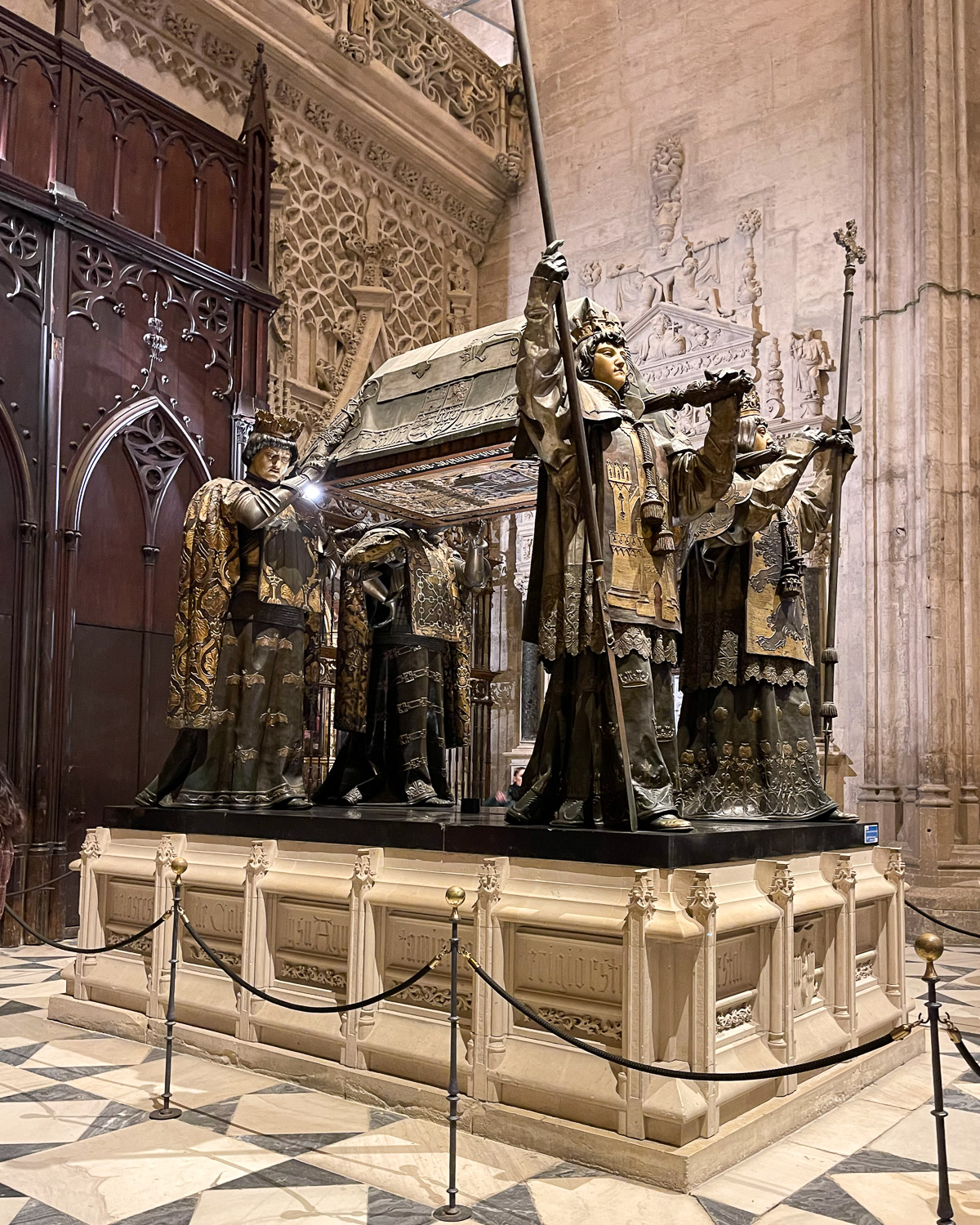
Columbus died in 1506 in the northern Spanish city of Valladolid and was initially buried in Spain. Later his remains were moved to the Dominican Republic, which had been the explorer’s own wish. As the Spanish Empire contracted the Columbus remains were moved, first to Cuba, then back to Seville where they were placed in the current tomb.
Where is Christopher Columbus really buried?
There has been dispute over where the real Christopher Columbus is buried, since the city of Santo Domingo asserts that they still have the genuine remains in their own Christopher Columbus tomb. But DNA tests comparing the remains in Seville to those of Christopher Columbus’s brother Diego, seem to support that the explorer really is interred in Seville Cathedral.
In order to skip the lines for tickets, don’t forget to book your Seville Cathedral tickets in advance.
3. Giralda Tower
One of the most enjoyable parts of visiting Seville Cathedral is the climb up the Giralda Tower. It was built in 1198 as the minaret of the original mosque, when it was used for the call to prayer.
Following the recapture of Seville from the Moors in the 14th century, the upper parts of the tower were remodelled and it became the belfry of the cathedral.
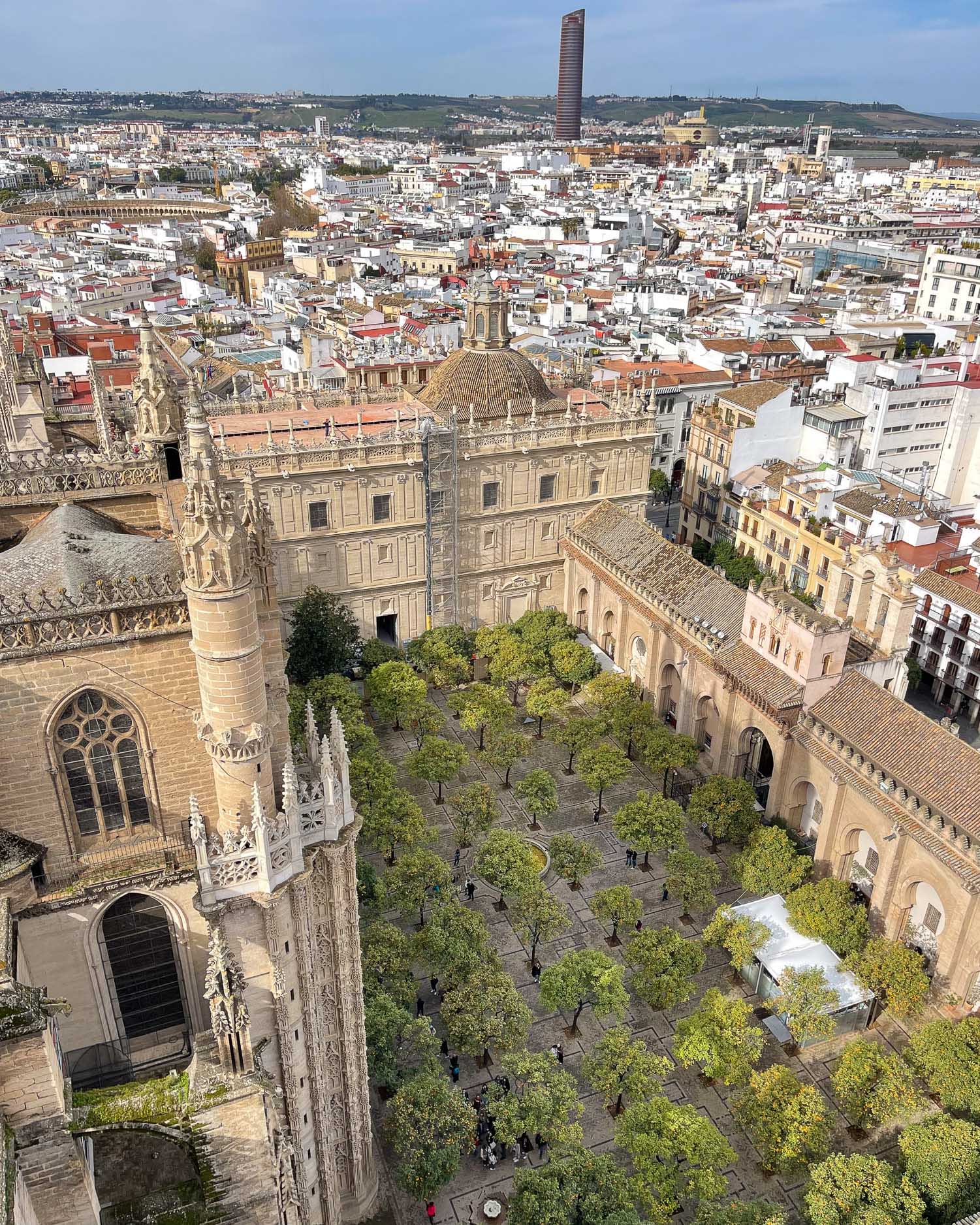
For years the 103 m high tower was the tallest building in Seville and it remains one of the most recognisable landmarks of the city.
On the very top is a weather vane of a woman in Roman dress holding a shield and palm leaf, representing Christian faith. This famous bronze weathervane from the 16th century gives the tower its name, from the Spanish word “girar” meaning “to turn”.
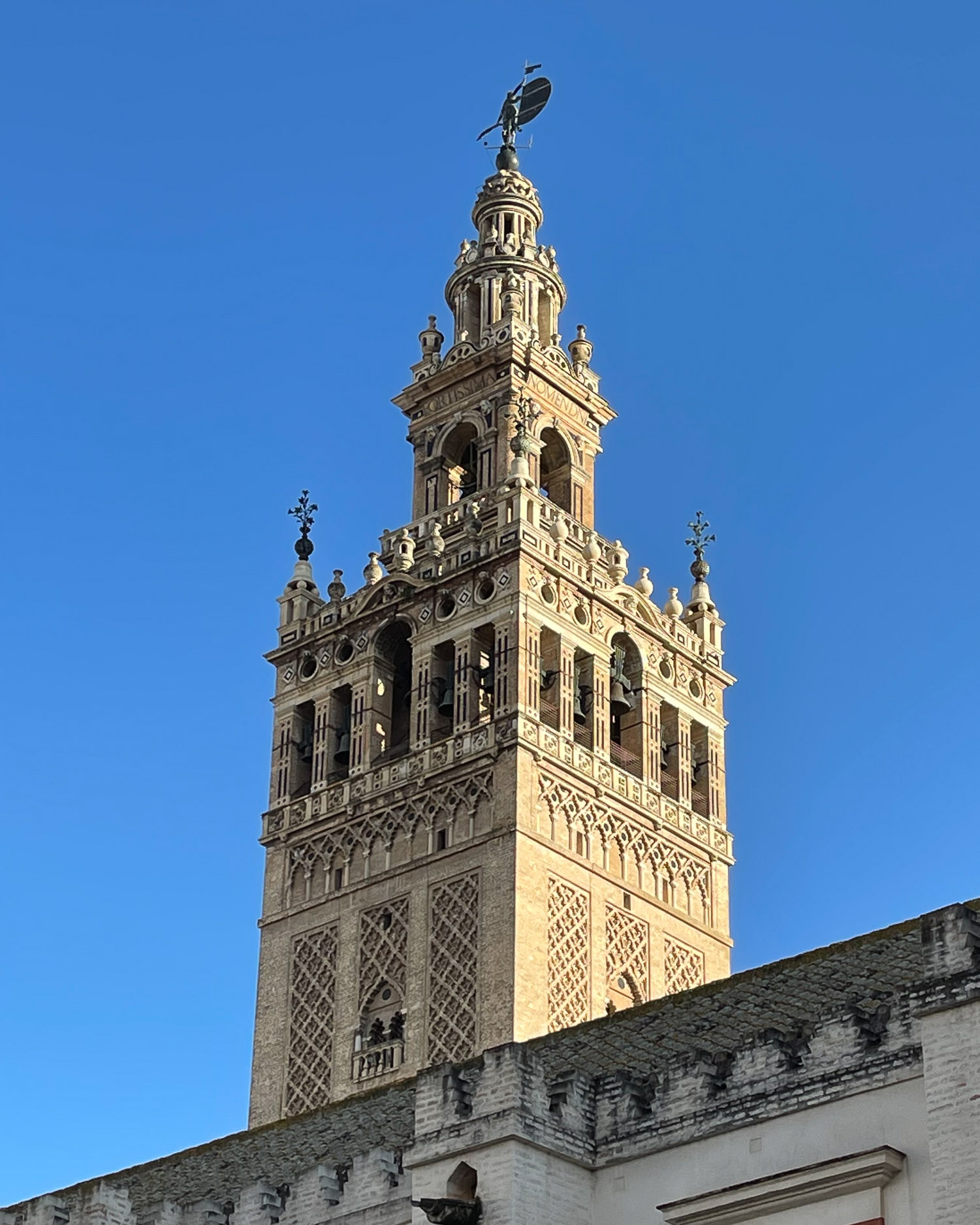
Climb the Giralda tower
One of the unusual and most welcome features of the Giralda, is that ramps rather than stairs are used to climb to the top. This makes it much easier and quicker for all ages of visitor as there is a steady flow of people going up and down, with few bottlenecks.
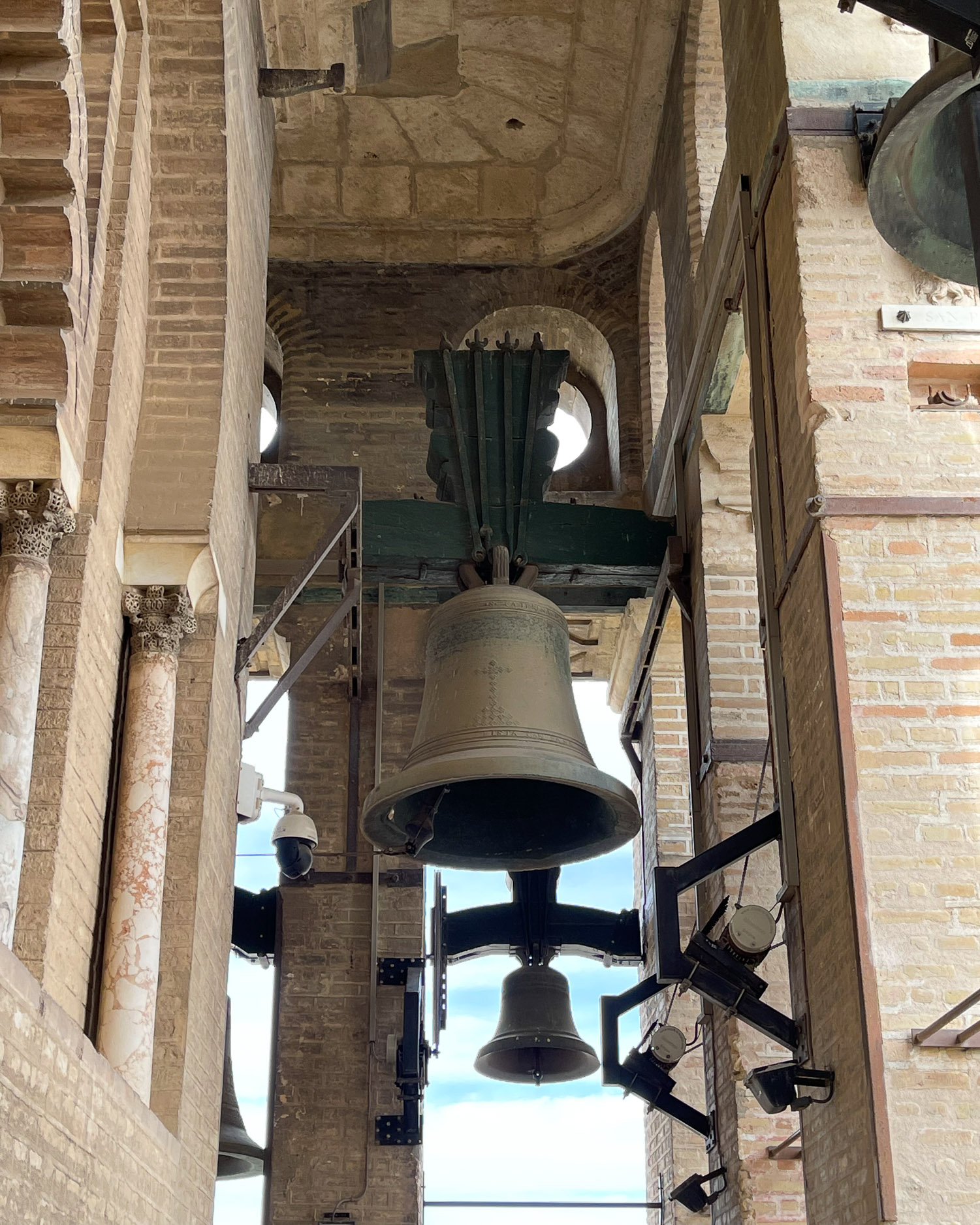
It was fun to see the numbers marked on each of the 34 ramps, so that we could check how close we were to the top. If you get tired, there are viewpoints on the way up to step out of the flow of people walking up. Once at the top, we enjoyed views from all sides over the city of Seville and the roof of the cathedral itself.
There did not seem to be too much of a queue to go up the tower when we were there, but I would make this a priority part of your visit, in case it is busy when you visit.
The Giralda Tower is included in your general ticket to Seville Cathedral, which we recommend booking in advance online, since the lines for tickets can be long.
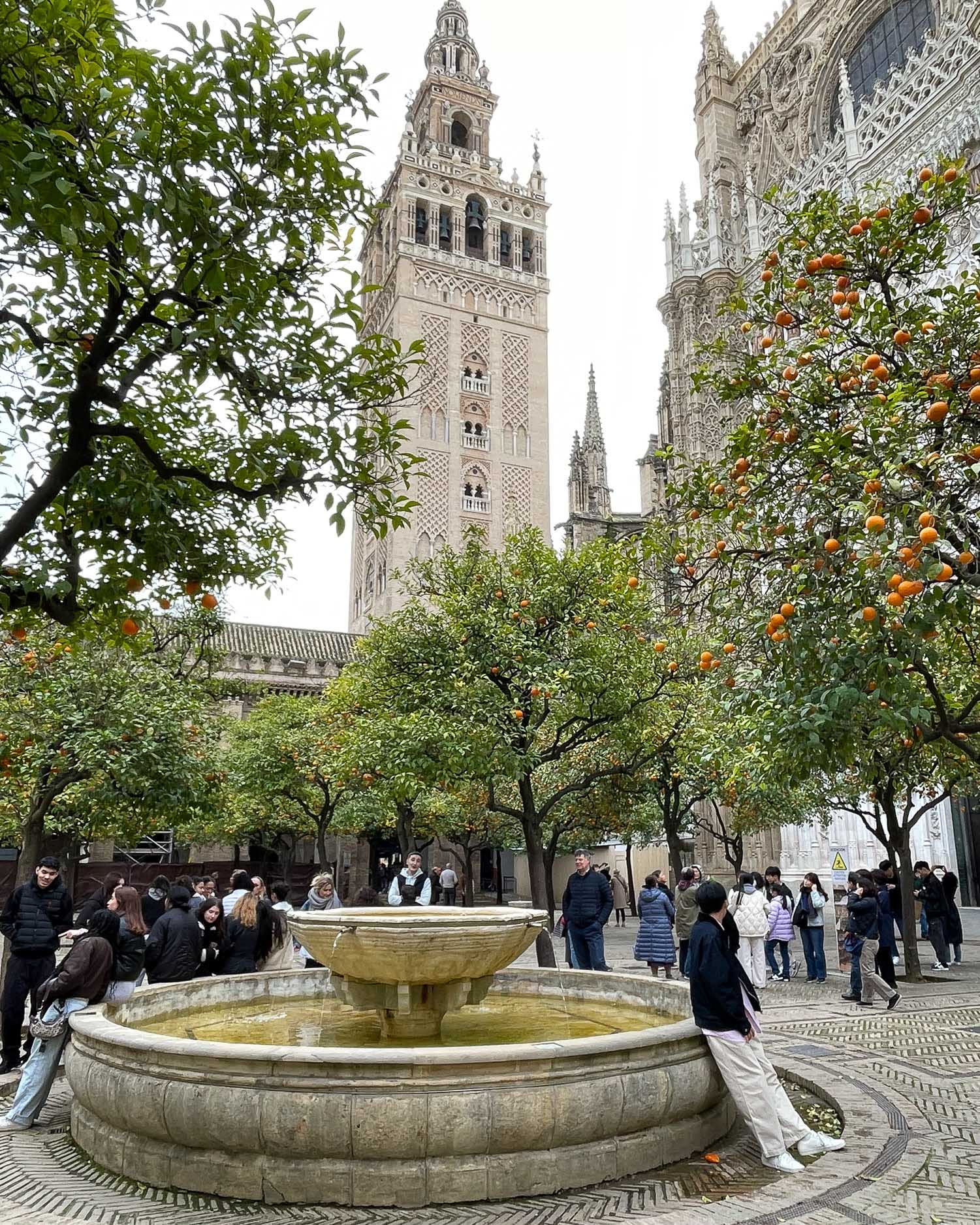
4. Barrio Santa Cruz
Once you’ve visited Seville’s top sights of the Real Alcázar and Cathedral, it’s time for a wander around the Barrio Santa Cruz neighbourhood that surrounds them.
These narrow streets were part of the old Jewish Quarter in the 13th and 14th centuries, until the Jews were expelled from Seville in 1492. Now they are largely pedestrianised, with only taxis or residents allowed to drive vehicles through, offering plenty of pleasant squares to discover.
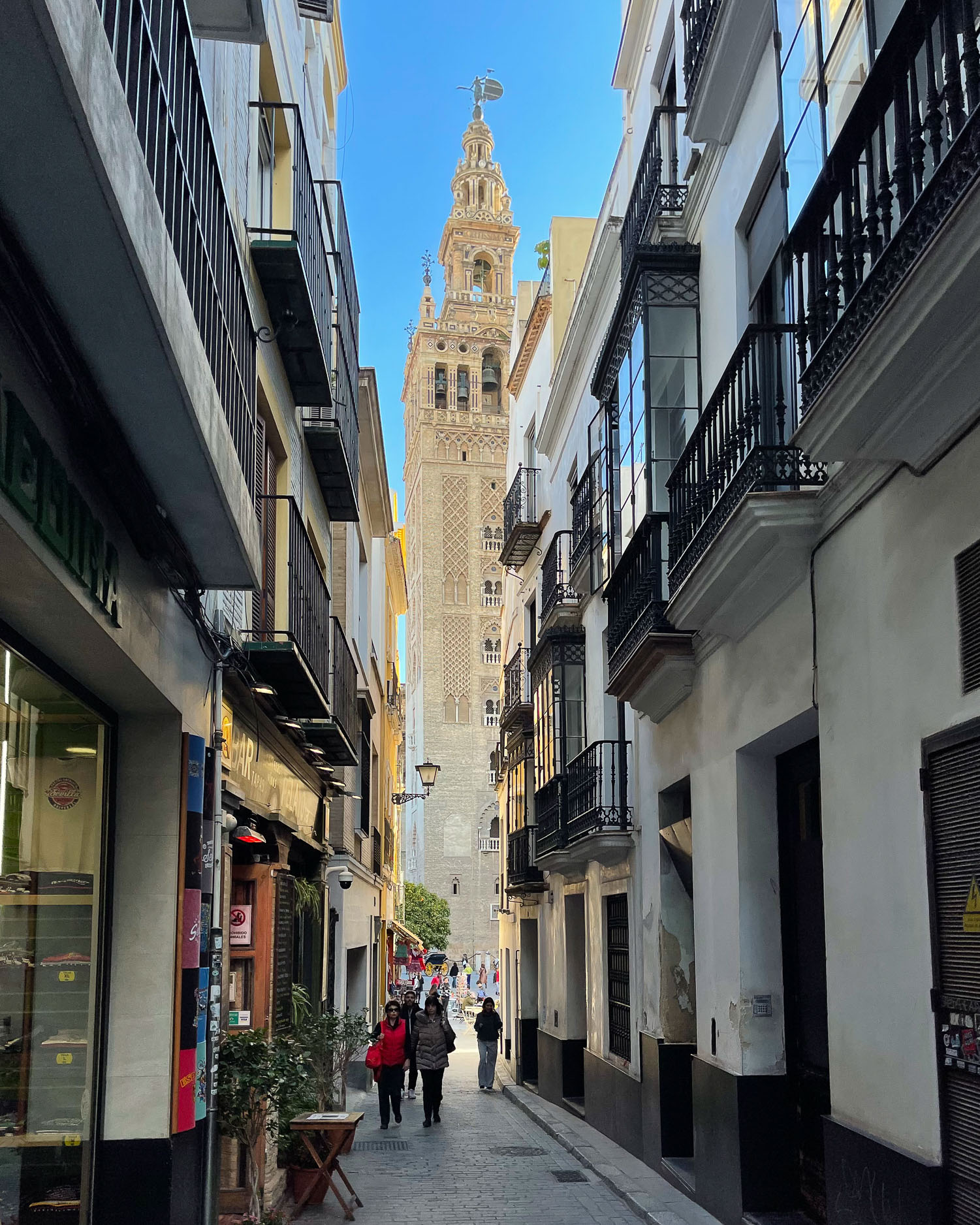
Of course, the streets closest to the cathedral tend to be home to souvenir shops and the most touristy bars and restaurants. Yet it’s still easy to find charming corners with orange trees and open doorways offering a glimpse of flower filled patios.
We especially enjoyed wandering to the north of the Alcazar, leading to an entrance of the Murillo Gardens, which was once orchards of the palace but now a public park.
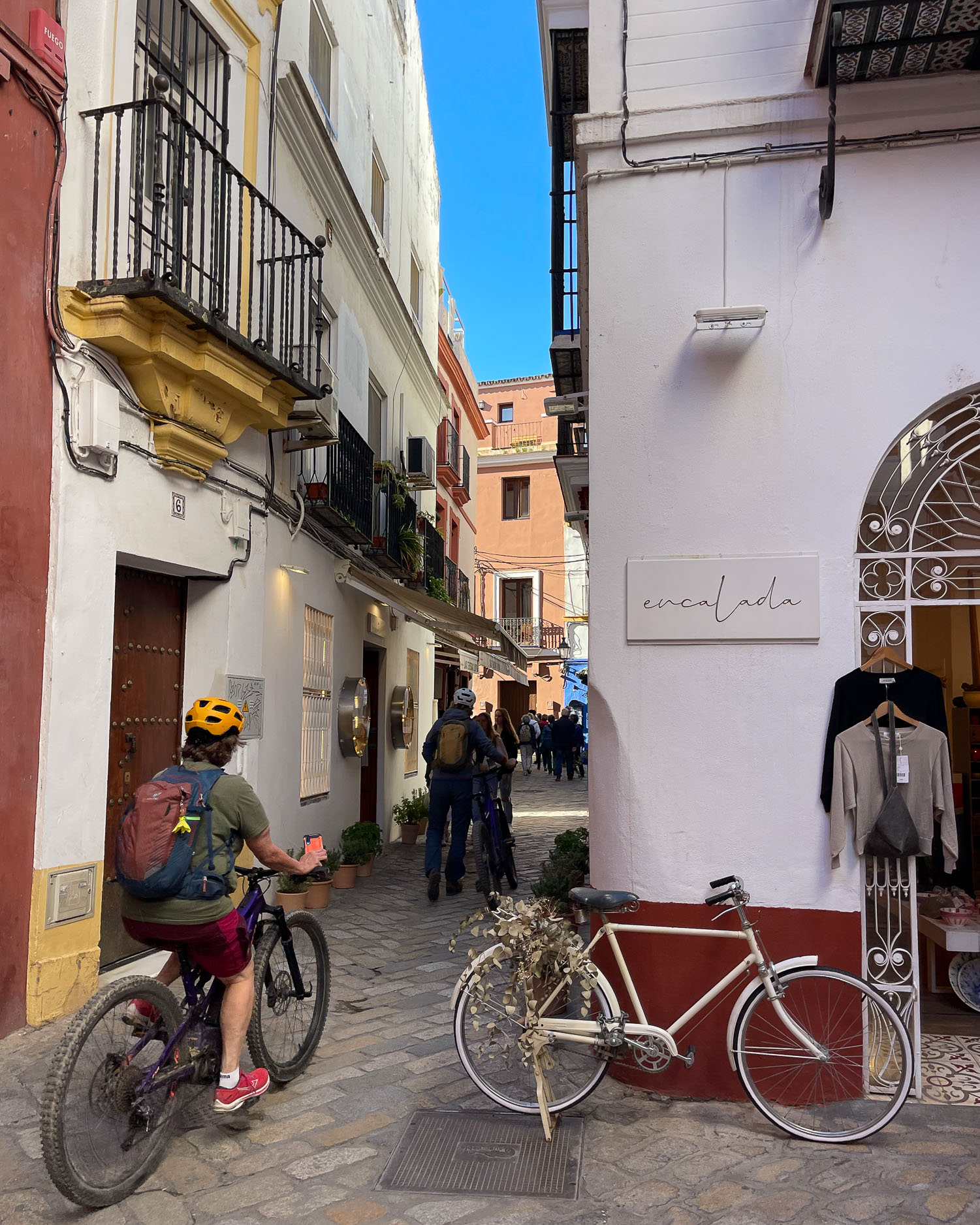
What to see in the Barrio Santa Cruz
Close to the cathedral, look out for the Archivo de Indias, in an imposing 16th century building. It houses an archive of books, documents and maps from Spain’s former colonies in the New World, that brought enormous wealth to Seville.
Other interesting and beautiful historic buildings that are open for public visits are the Hospital de los Venerables and Casa Salinas, both of which I’ve mentioned later in this article.
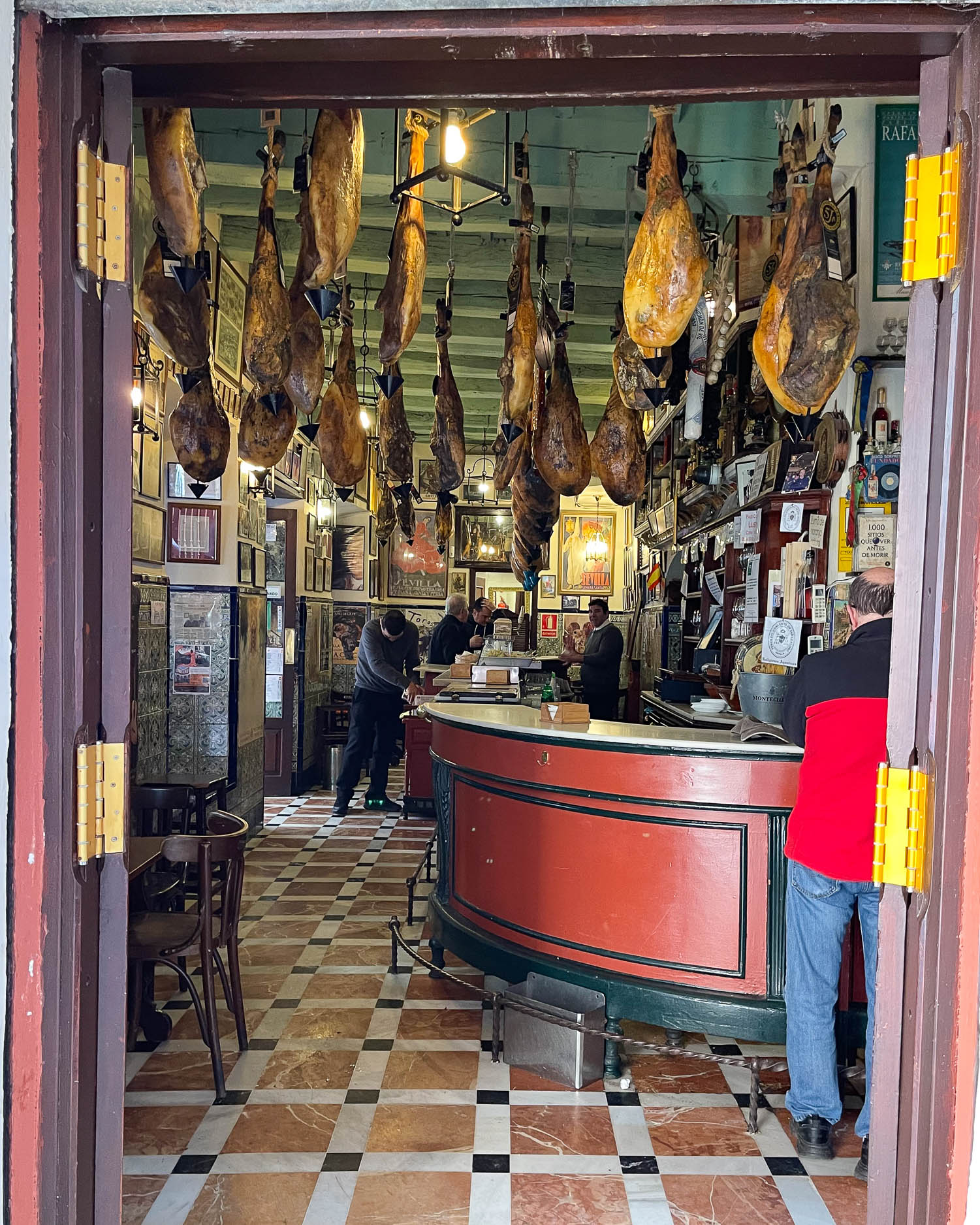
5. Las Setas de Seville
Originally known as Metropol Parasol, this sculptural structure has adopted the more popular local name of Las Setas or The Mushrooms. Six parasols flow organically into one another and are made of wood covered with polyurethane as protection from the elements.
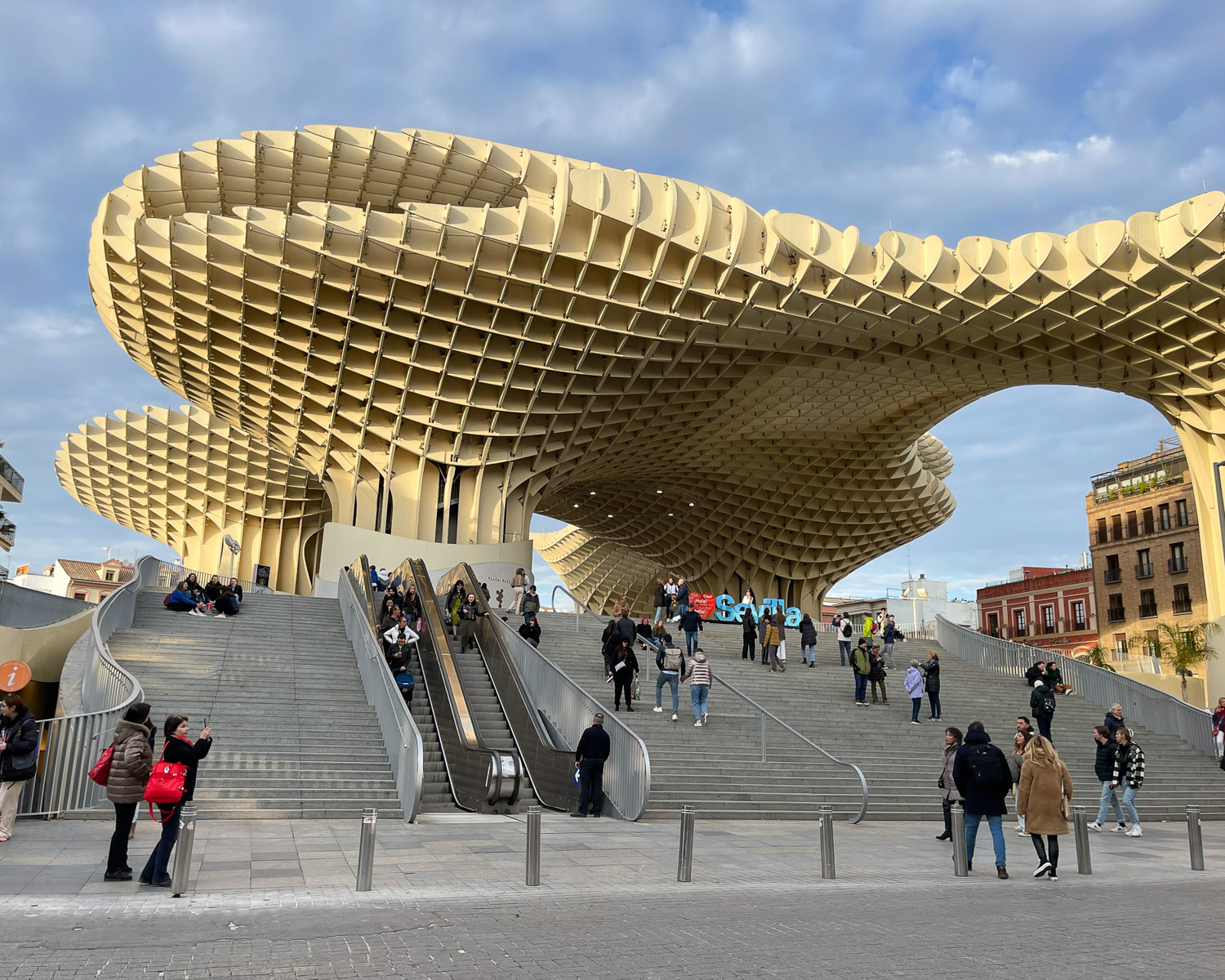
At 150 metres long and 28 metres high, it’s the largest wooden structure in the world, with an exhibition as you descend the stairs to tell you about the construction process. Las Setas was designed in a competition by German architect Jürgen Mayer, opening in 2011 to become one of Seville’s most popular landmarks.
Located to the north of the historic centre, where the central district merges into La Macarena neighbourhood, Las Setas is a multifunctional structure. It was built on the site of the old Mercado de la Encarnación, and a food market is incorporated in the base of the building with 60 stalls and several bars.
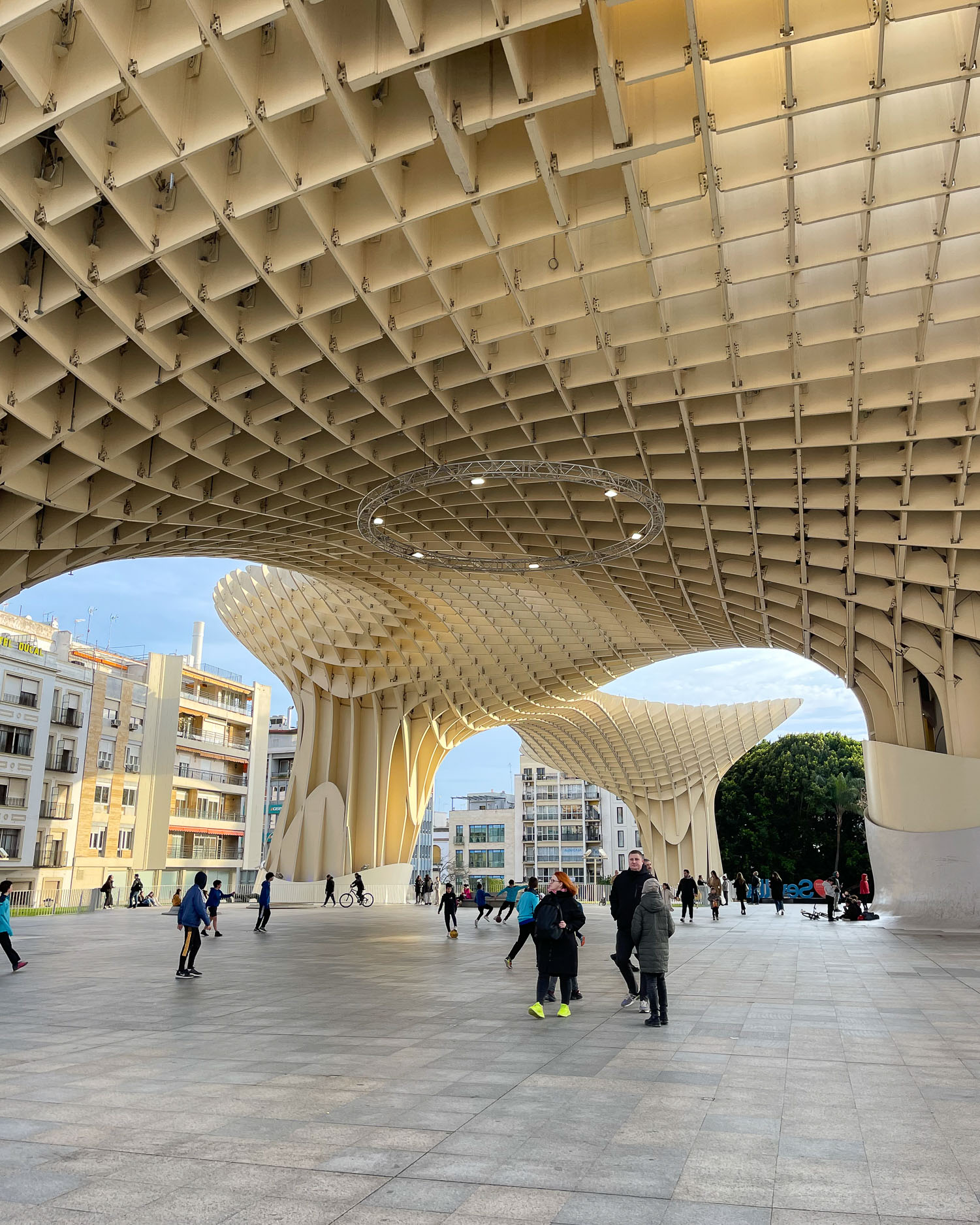
Roman remains under Las Setas
In the basement are the preserved Roman remains of buildings and mosaics that were found during the construction, now on display in the Antiquarium de Seville. Immediately below the main structure is an open plaza, providing welcome shade in summer.
When we visited it seemed a popular spot for teenagers to gather and play ballgames, skateboard or just hang out. A Christmas market and music events are also held in the plaza throughout the year.
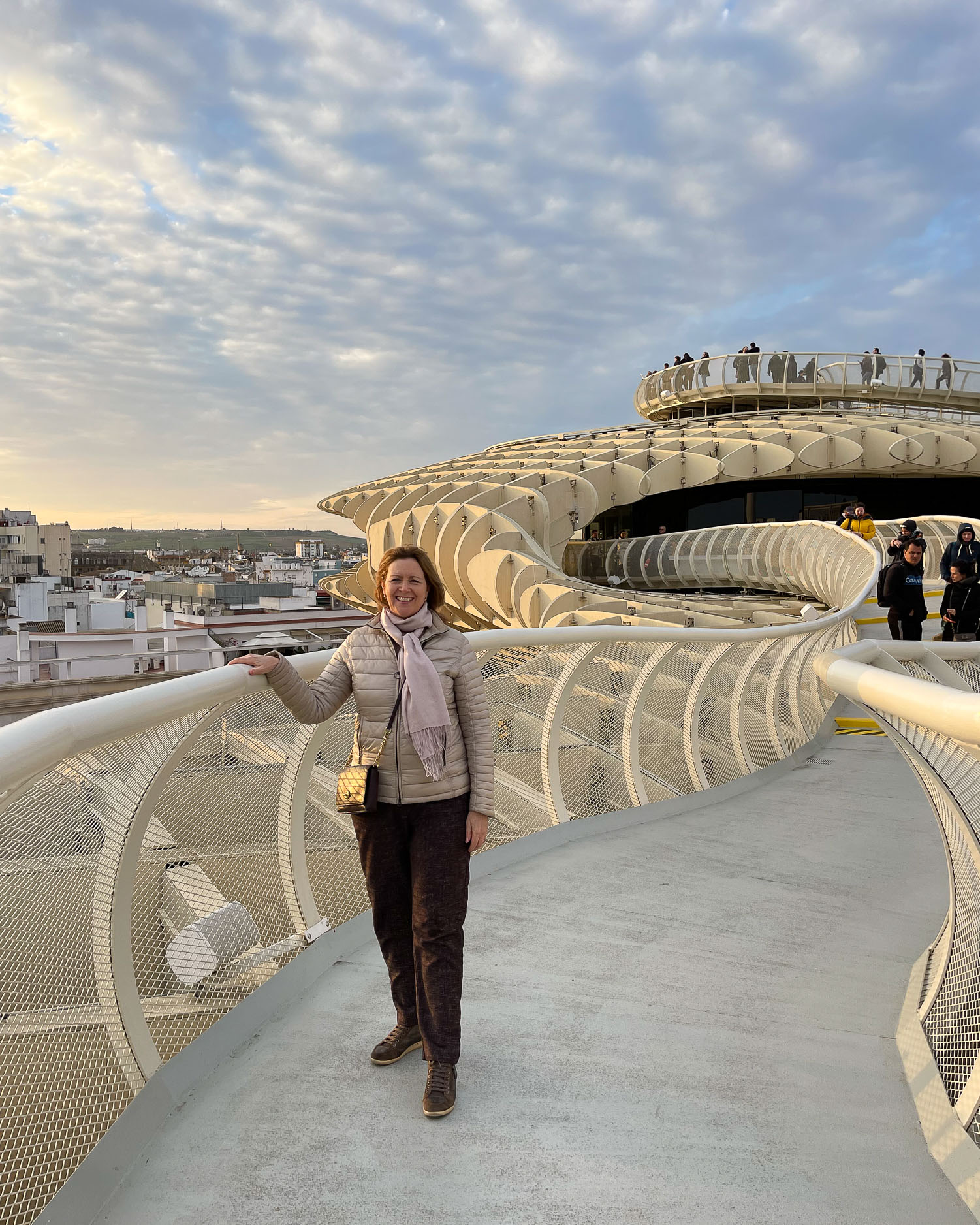
Tickets for Las Setas
There was not much of a queue when we bought our tickets (visiting in February) from the entrance on the lower ground level. However, I suspect that in high season and at popular times like sunset they may sell out, in which case I’d suggest buying online in advance from their website.
The ticket allowed us to enter twice in 48 hour period, which is useful if you visit Las Setas in the daytime and want to come back for the evening Aurora light show.
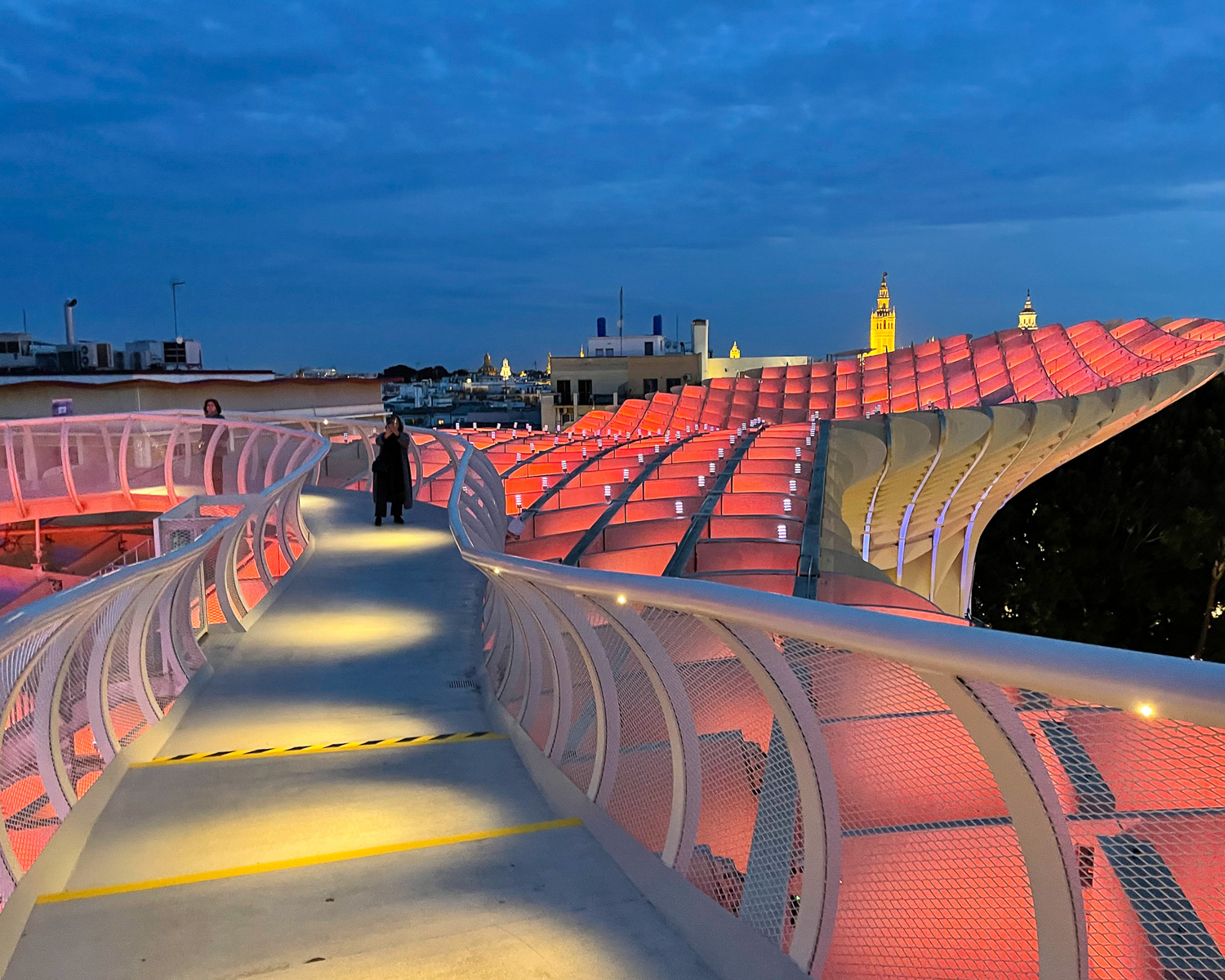
Feeling Sevilla
We took the lift to the viewing platform and joined the Feeling Sevilla audio visual experience which was about to start in a small room with stepped seating. The sights and sounds of Seville were projected onto a semi-circlular wall.
Feeling Sevilla brings to life the city highlights from a bird’s eye view as well as enjoying some of the flamenco and tapas culture for which the city is famous. The show is also available through a free app to download, and we were given headphones for this, which seemed a waste as they did not fit our phones.
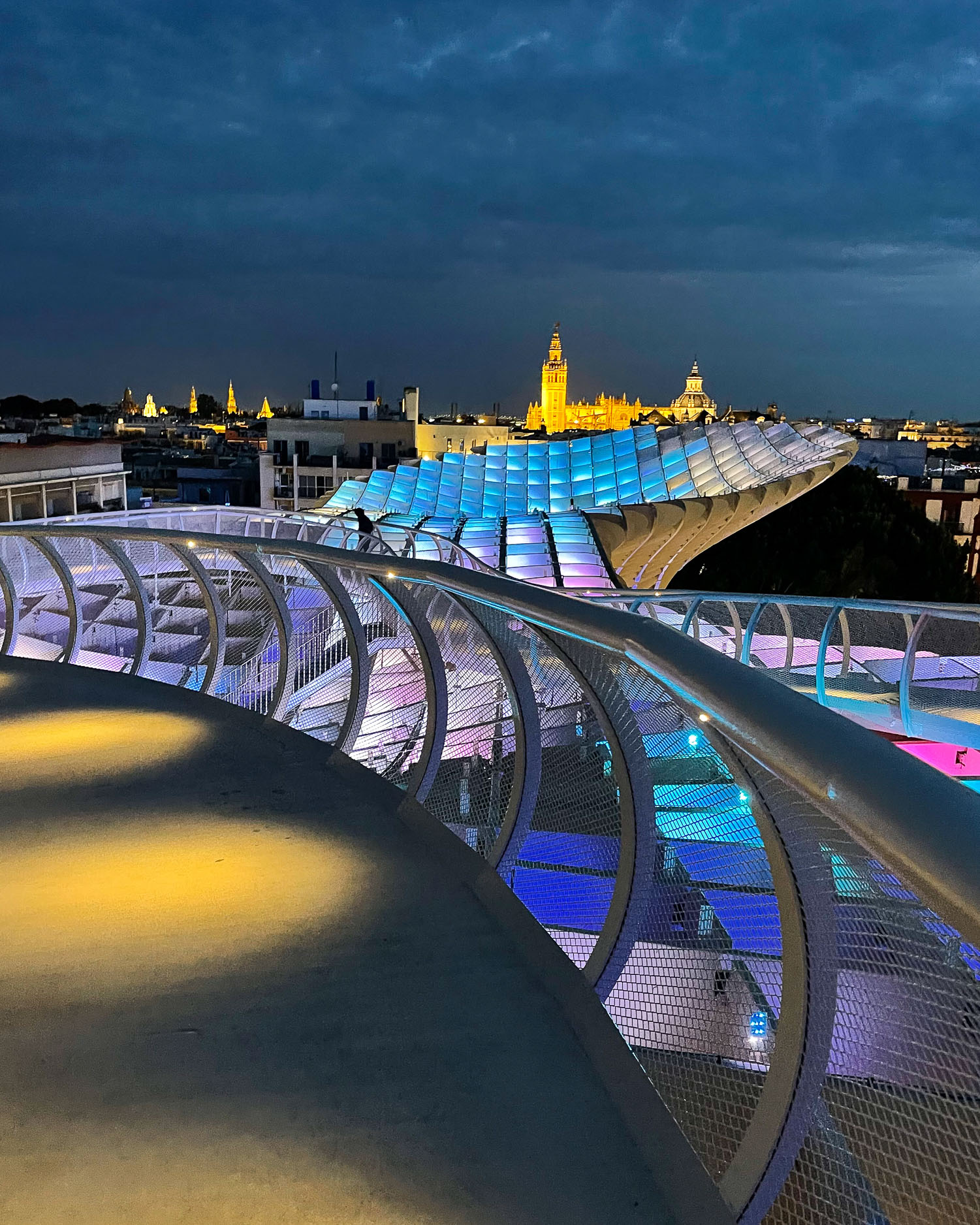
Next we walked slowly along the walkway, taking in views of the city rooftops, especially those of the Giralda Tower in the distance. At sunset the light was golden but before we knew it we were at the end of the viewing platform and heading down the steps, which gave an inside view of how the building was constructed.
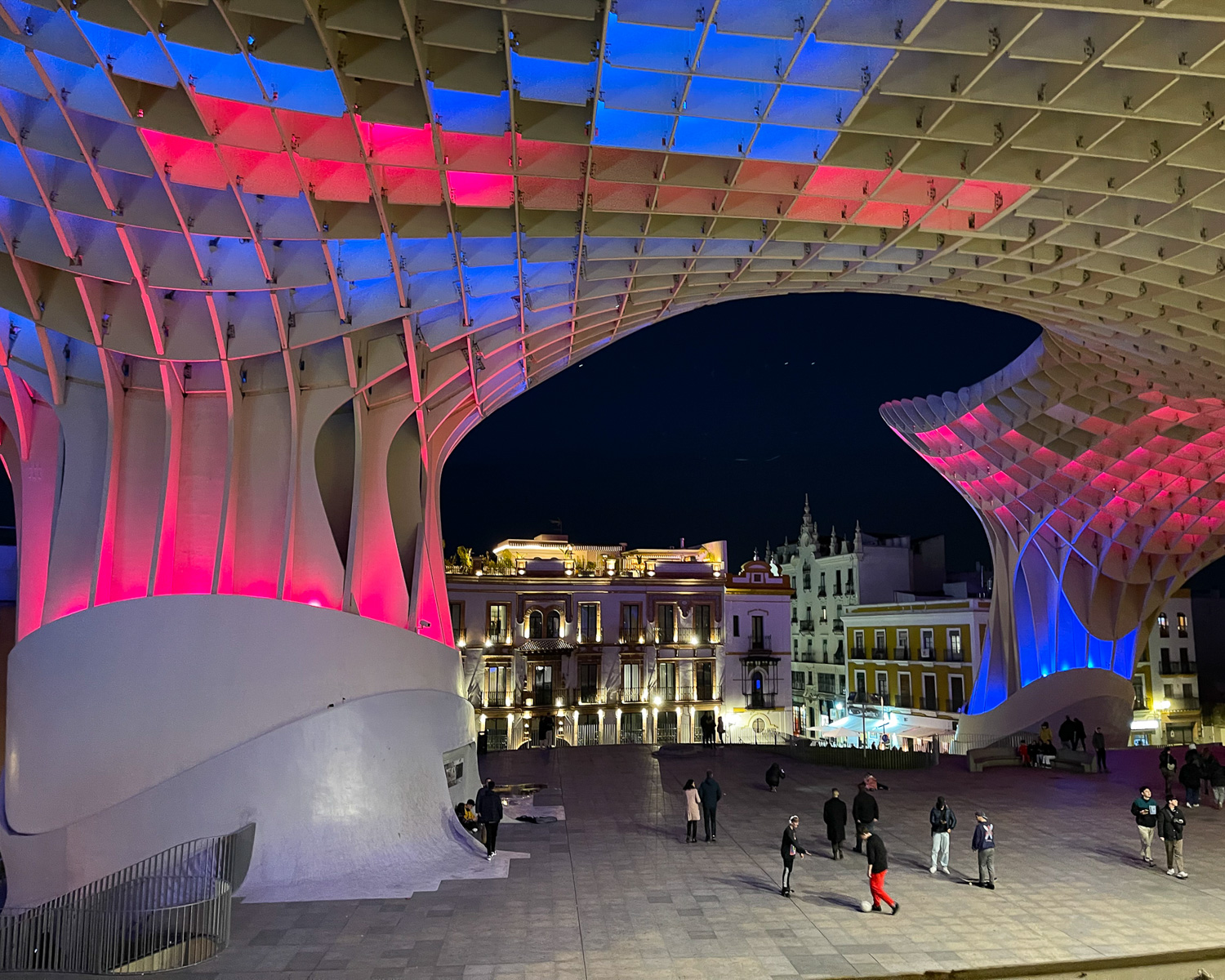
Aurora Light Show
We decided to have a look around the Antiquarium, but after dark we realised that we were missing out on the colourful light show, so used our ticket to go up for a second time.
The Aurora light show was magical with the structures glowing and pulsing with different coloured lights that slowly changed as we moved along the walkway.
I’d highly recommend visiting Las Setas at sunset and staying after dark for the light show, especially if you are looking for some stunning photos from your experience. It’s one of the best things to do in Seville at night.
6. Antiquarium de Seville
While visiting Las Setas, it’s worth taking a look in the Antiquarium at the interesting Romas remains that were found when the site was being constructed. These are on the same lower ground level as the ticket office but are subject to a small charge of €2, not included in the main ticket (Closed Mondays).
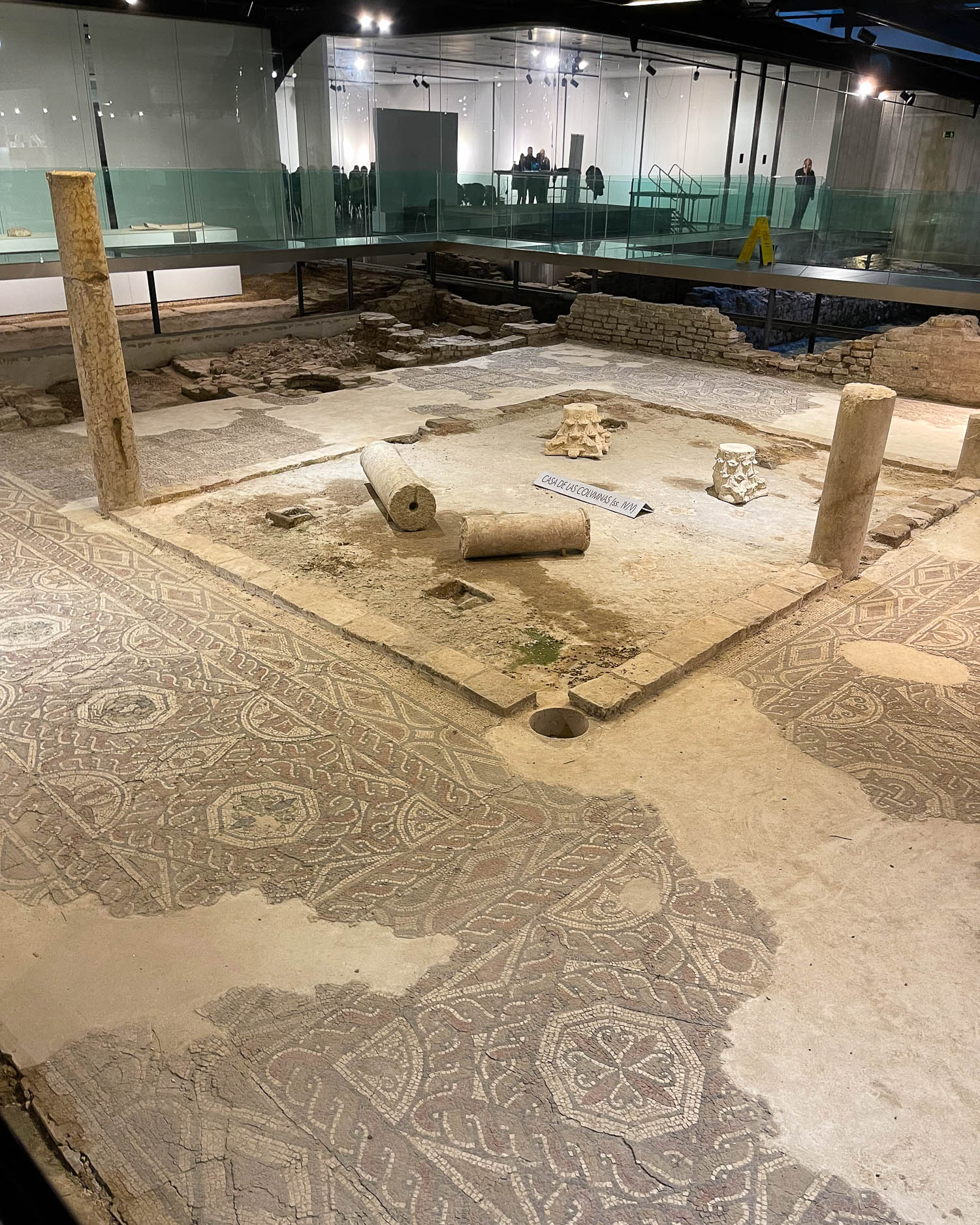
The archaeological remains include a fish sauce factory and houses from Roman times, as well as later 12th and 13th century dwellings from the Almohad Islamic period. Many of the houses are named after the beautiful Roman mosaics that were used in the floors of the courtyards.
7. See a Flamenco show in Seville
One things we really wanted to see in Seville was a Flamenco show. Let’s face it, on a short trip you are less likely to come across an impromptu performance where someone suddenly brings out the guitar and heels start stamping and skirts whirling. So it’s more practical to book for one of the many affordable Flamenco shows in Seville.
Flamenco is said to have originated in Andalusia, with the arrival of gypsy gitanos culture to Seville and Jerez in the 15th century. It spread from something that might be performed informally at family events, to a popular tradition of performance in flamenco bars or tablaos around Seville.
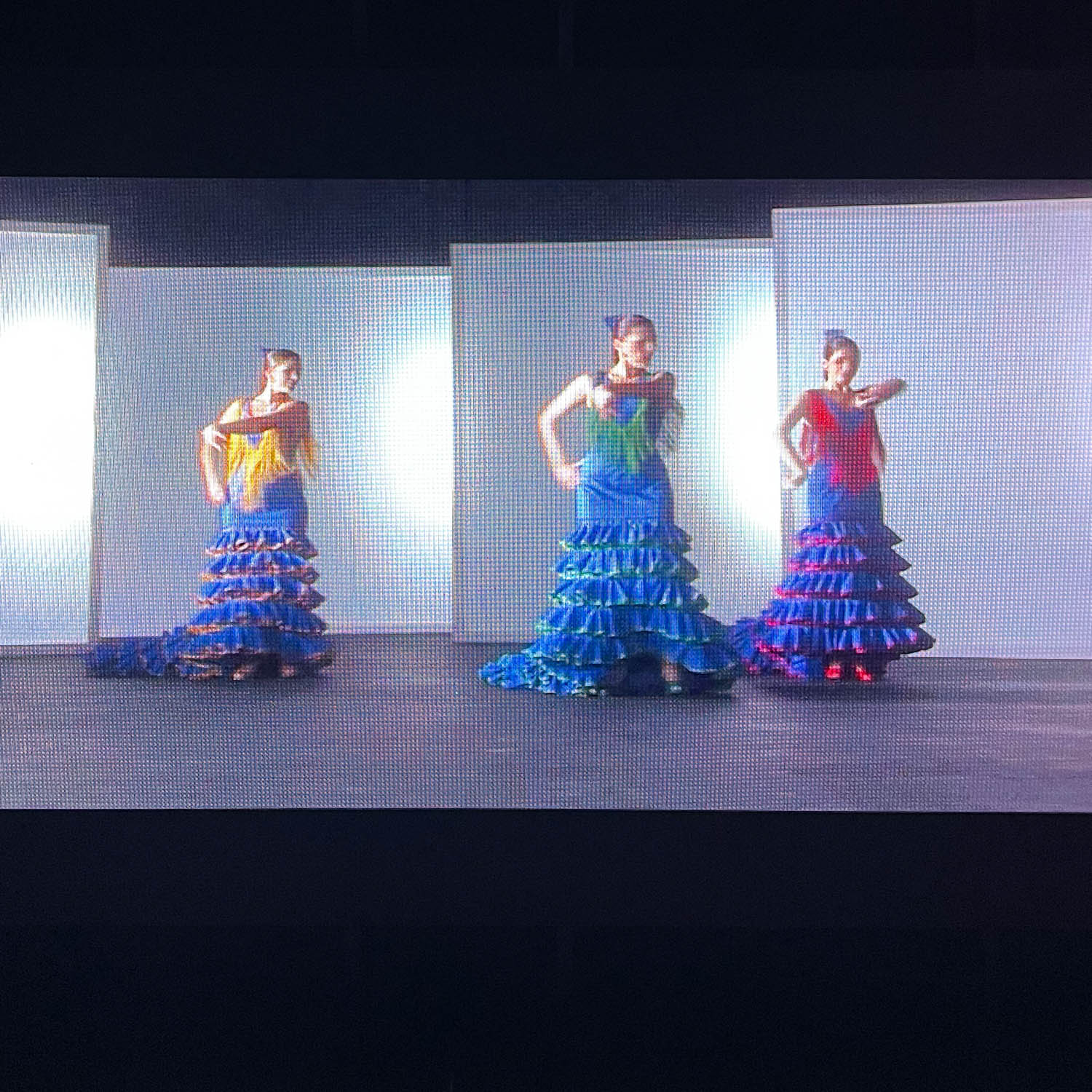
Flamenco culture in Seville
These days you can find numerous shops selling fans, decorative combs, flamenco dresses and embroidered shawls, especially in the Barrio Santa Cruz neighbourhood of Seville.
It all comes to a climax during the Seville Feria or April Fair, when everyone dresses up in traditional flamenco costume for socialising, drinking and of course lots of dancing.
Flamenco culture has evolved into a formal dance form. Although much of it is improvised, there are different dances (baile) such as Sevillanas, Allegria or Buleria that are determined by the beat of the music and dance style.
The dancers, both male and female are accompanied by guitar music (toque) and a normally male singer known as a canteor, with much percussion from the stamping of feet, clapping and tapping on the guitar.
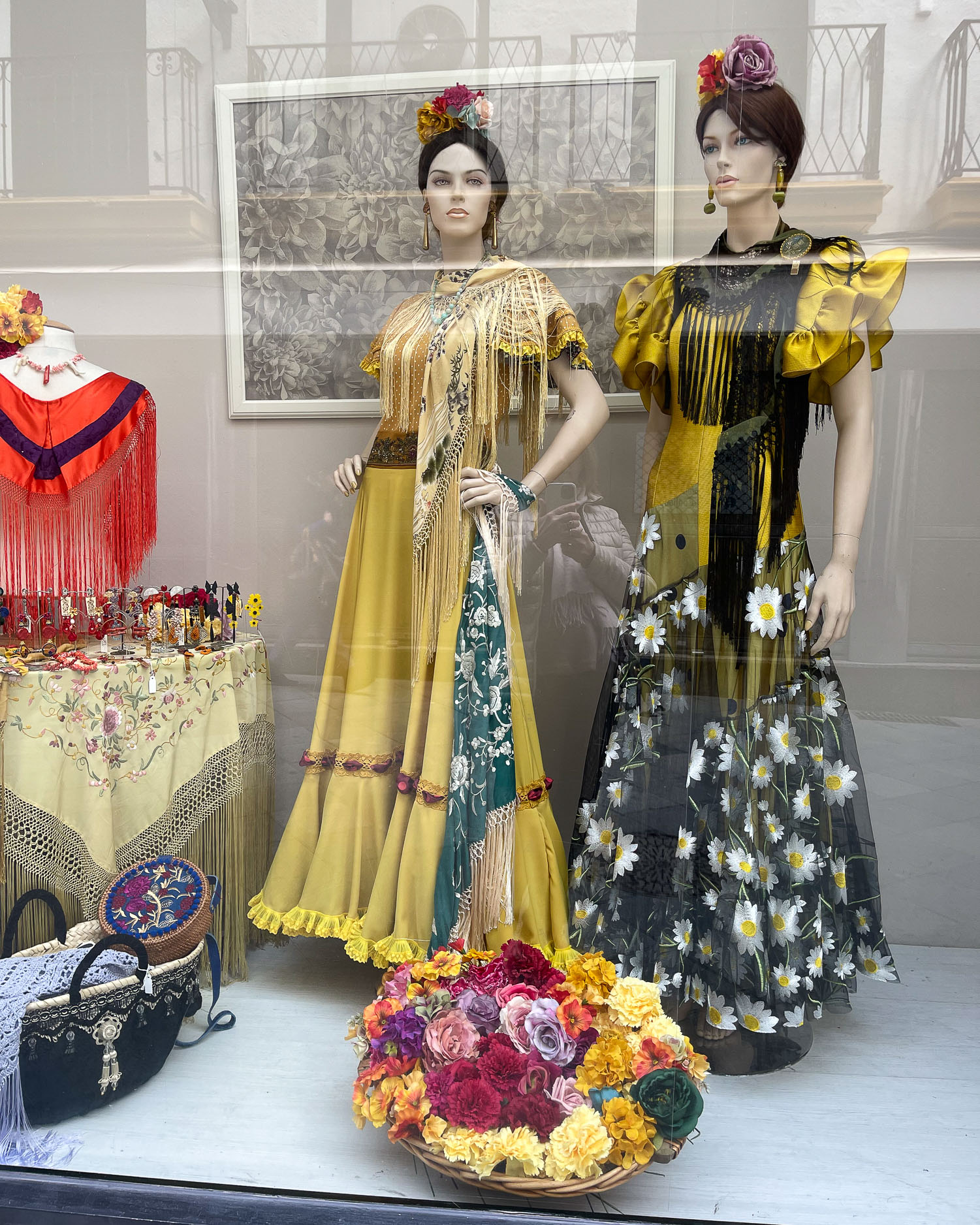
Options for booking a Flamenco Show
Casa de la Memoria Seville – this is where we saw a flamenco show and were impressed with the spirit and passion of the dancers and musicians. However, we wished that we had arrived earlier to be seated in front of the stage as we did not see so much from the side view. The space holds up to 80 people with some seating upstairs.
Flamenco Dance Museum / Museo de Baile Flamenco – the daily shows here have an excellent reputation, held around a small stage and seating for around 80 people. As a bonus you can buy a ticket that includes both the show and a visit to the Museum.
Teatro Flamenco Triana – just across the river from the old town, the Flamenco Theatre of Triana offers 2 evening shows seating up to 100 people in a small and beautiful theatre.
Flamenco show with dinner – if you are looking for a Flamenco show with options for drinks or dinner, El Palacio Andaluz offers a tableo style show with seating at a table, while you watch the show.
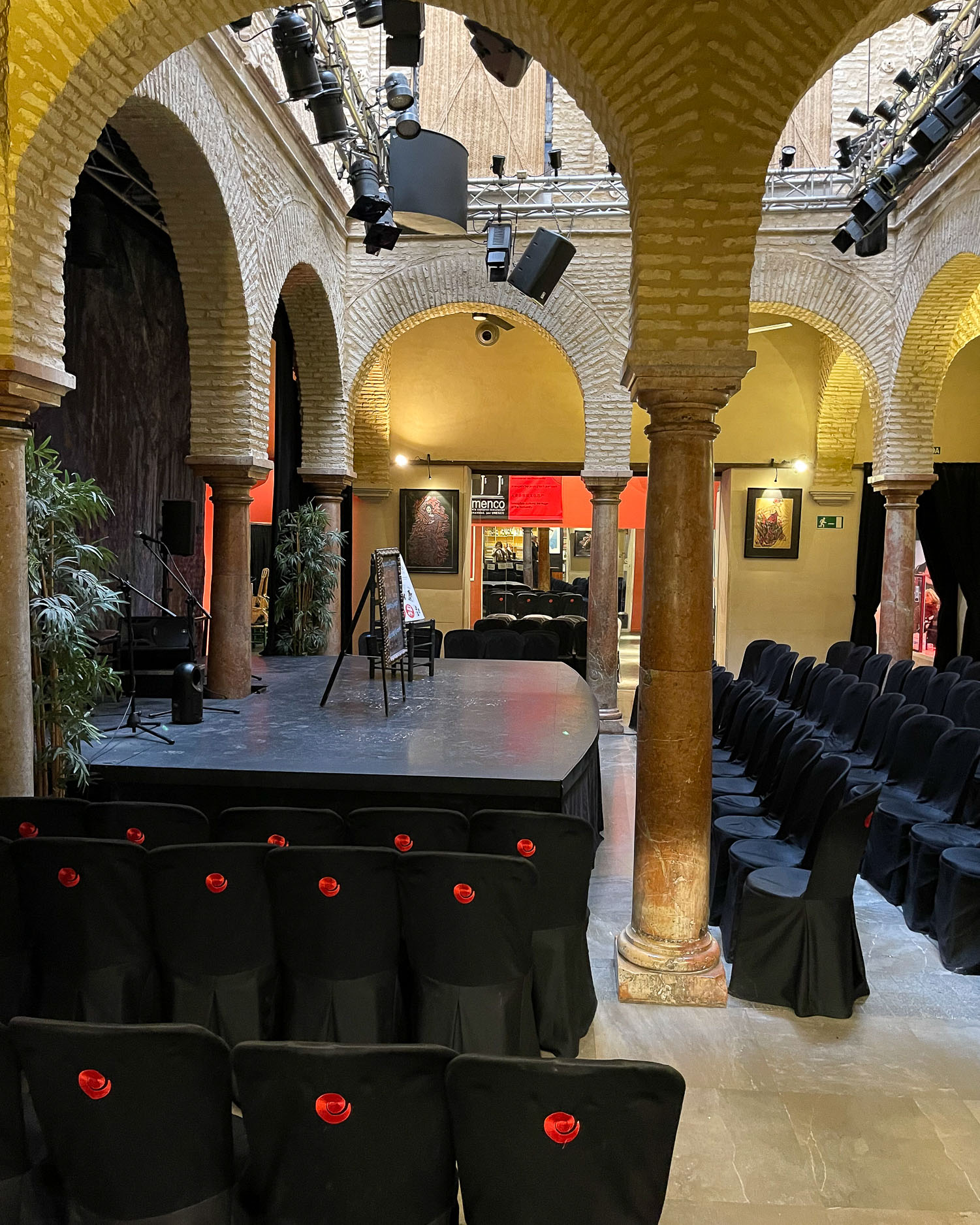
Flamenco Show at Casa de la Memoria
After doing a bit of research, we booked an evening show at the Casa de la Memoria which has a good reputation for the high standard of dancers and musicians. Our show, which lasted around an hour, was in a small theatre, with music performed by a guitarist and two canteor. The two female and one male dancers gave energetic and passionate performances.
Photos were not allowed during the performance, but at the end it was indicated that the audience could take photos of the performers taking their final bows.
Another popular option is to book a show with dinner and drinks included. However, we decided that with numerous excellent places to eat in Seville, we’d rather just watch the show, then eat afterwards.
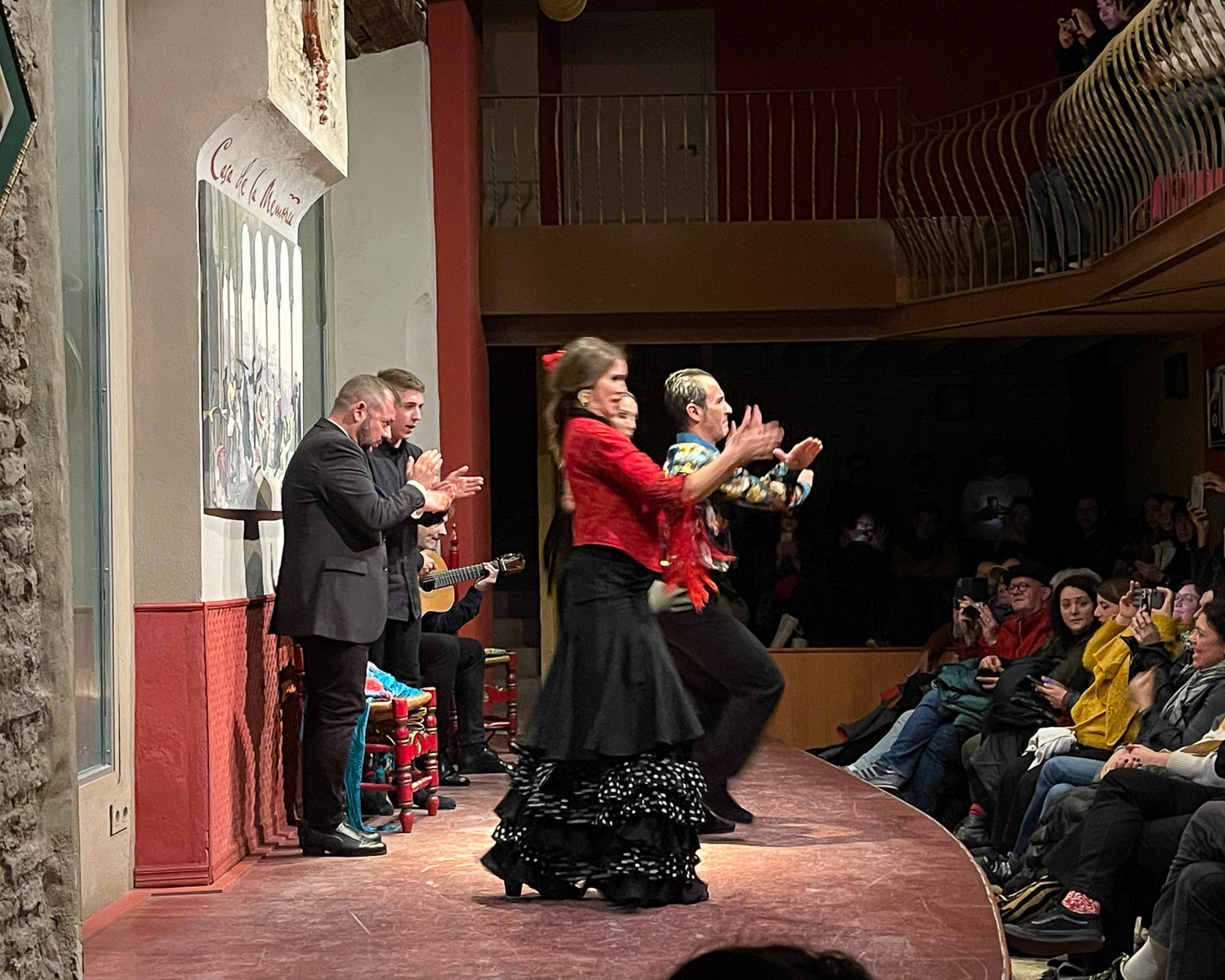
Flamenco Dance Museum in Seville
If you want to soak up a bit more about Flamenco culture, I’d recommend visiting the Flamenco Dance Museum / Museo de Baile Flamenco which is in the central area. We really enjoyed the audiovisual displays with films of dancers performing different styles of flamenco. On the upper floors were displays of costumes, posters and artworks related to Flamenco, although much of it was in Spanish.
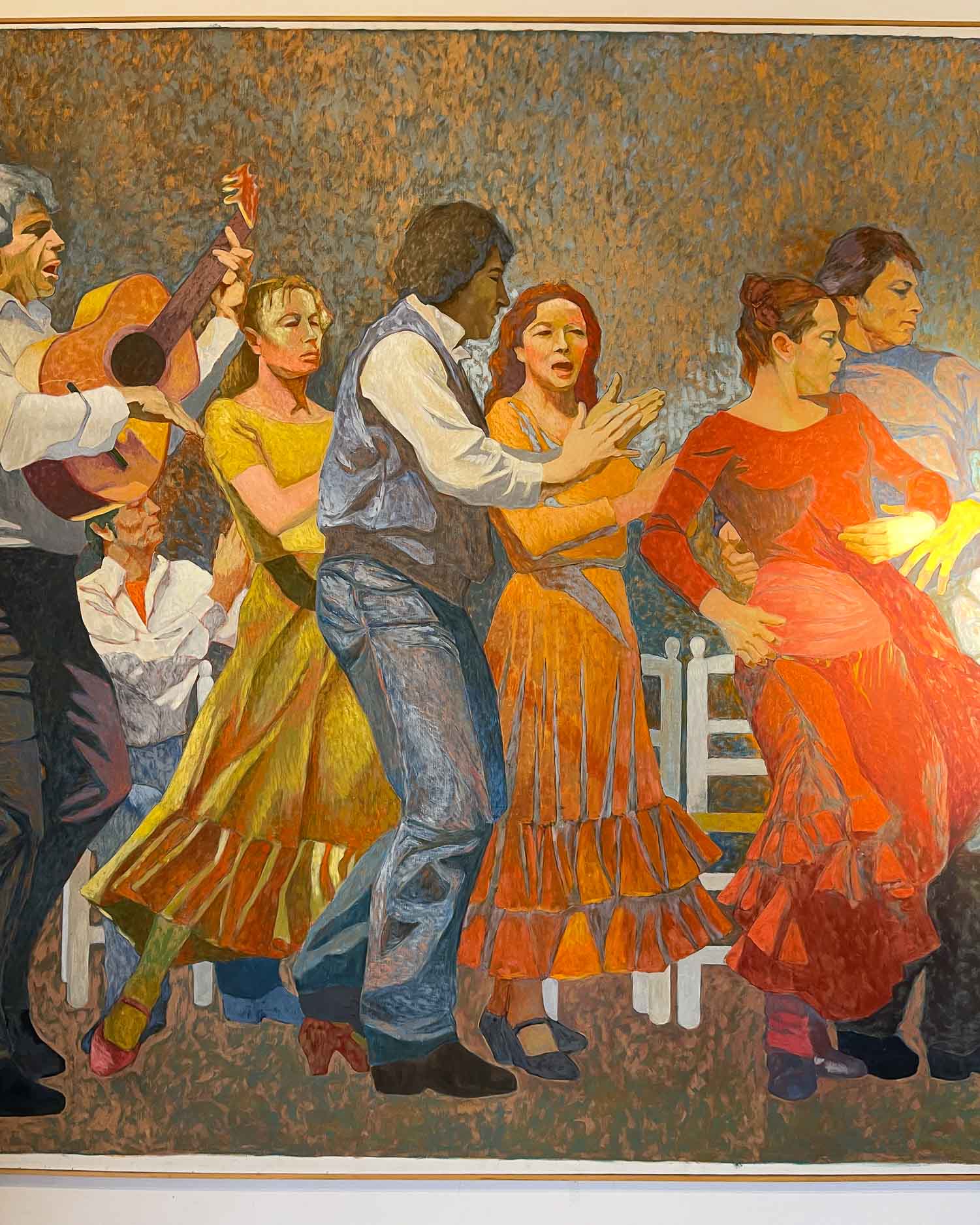
The museum also has its own theatre, with popular daily shows performed by Flamenco dancers from the company of Christina Hoyos, who founded the museum. This would also be a good place to book for a Flamenco show, where the space is relatively intimate (holding up to 80 people), yet the price is affordable.
Flamenco Shows around Seville
There is also a Flamenco Dance Theatre in Triana and many more places holding Flamenco shows around Seville’s Old Quarter and in Triana across the river. Some have higher quality dancers and musicians than others so we suggest checking reviews before you book.
If you are visiting Seville in spring or autumn, look out for the Peñas de Guardia series of shows held in different venues, that allow up and coming flamenco talent to perform in public.
Top Tip: For any theatre style flamenco show with free seating, we recommend pre-booking your ticket and arriving early to try and get a seat right in front of the stage. This will give you get the best view of the dancers and their intricate footwork. Some of the seating may be on either side of the stage (where we ended up) but you miss out on a full view of the dancing.
Discover where to stay in Seville – best neighbourhoods, hotels and apartments
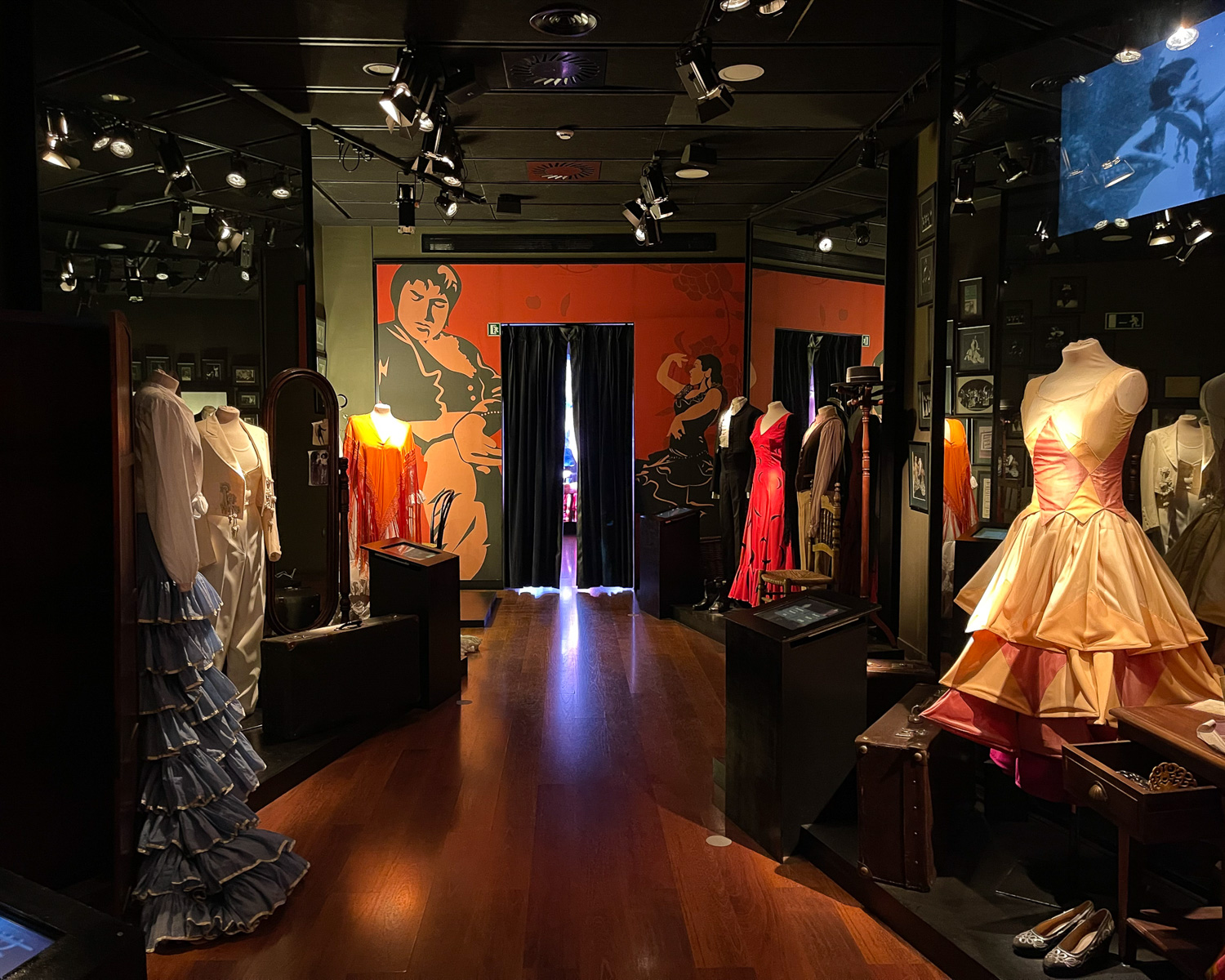
8. Take a Tapas tour in Seville
Tapas in Seville is one of those fun cultural experiences, where you start off a little unsure of how it works and end up navigating the tapas bars like a true Sevillanos. In order to get confident when entering a tapas bar, we made a tapas crawl or tapeo as part of a guided tapas tour.
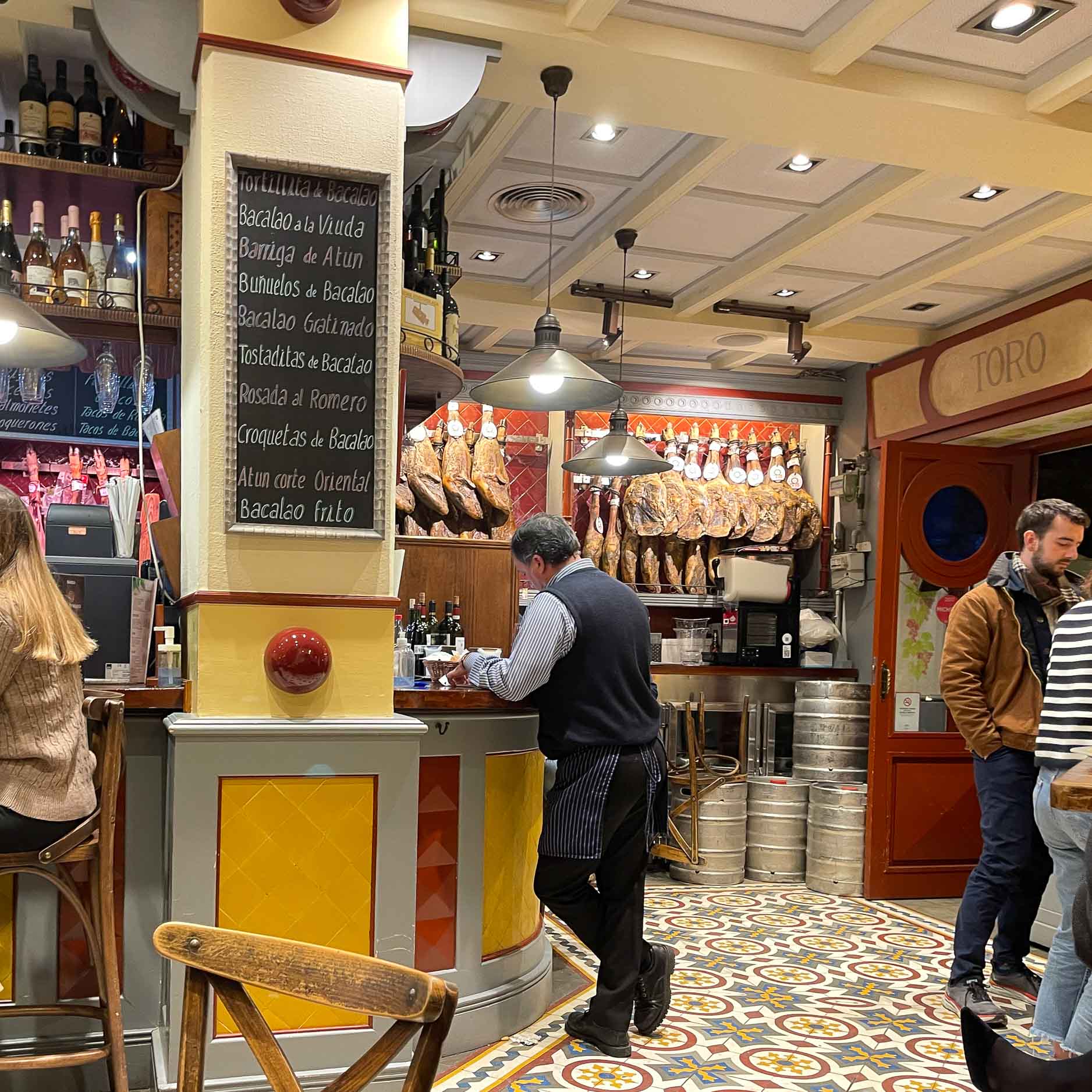
On our tapas tour in Seville (check out the one we took), we visited a number of different bars throughout the evening, tasting plenty of different drinks and tapas, while sharing some convivial company.
There were lots of fun stories and anecdotes from our guide Stephanie. We learned not only what and how to order, but received a list of recommendations of other places to try on our own.
Check out my separate article all about Tapas culture in Seville.
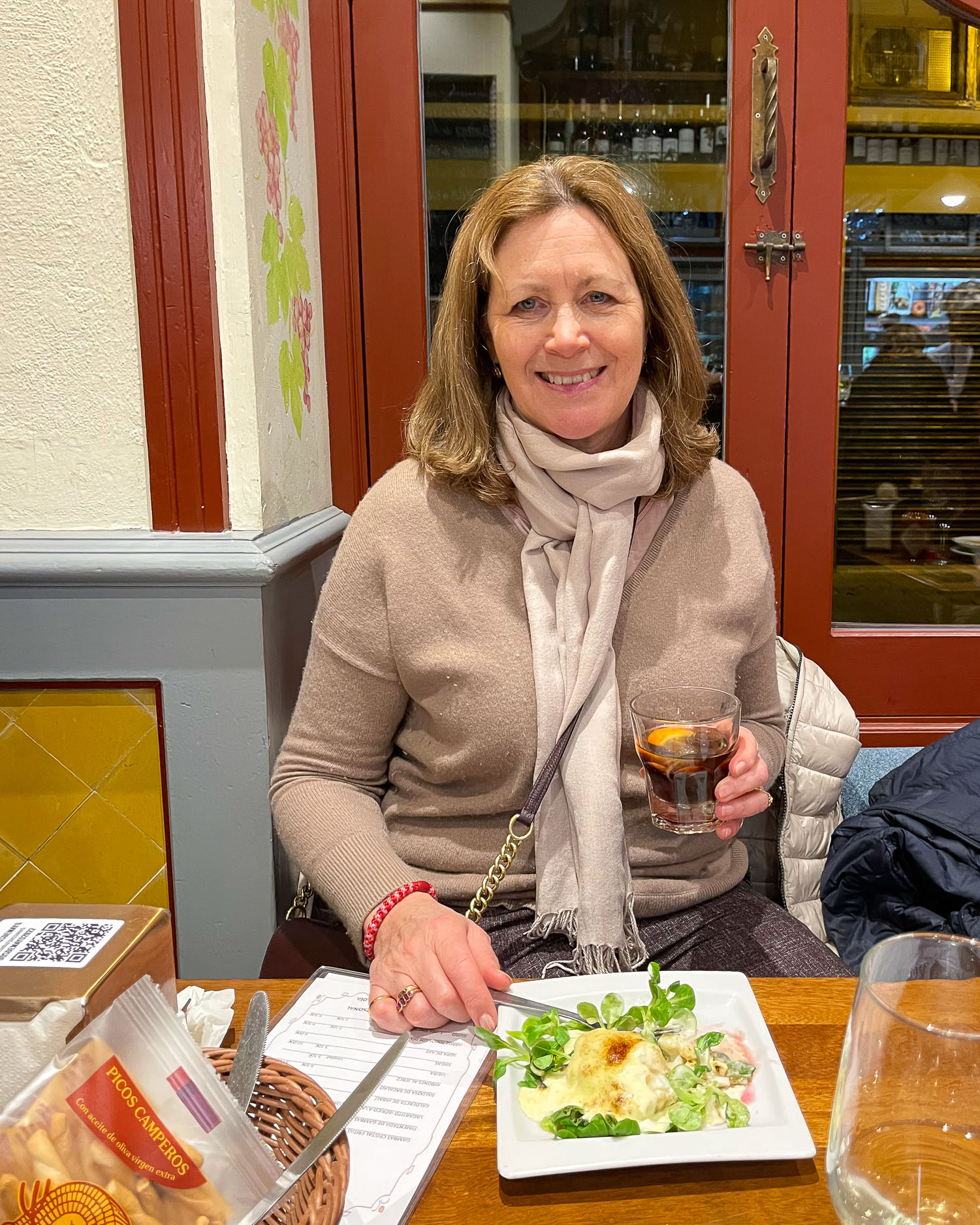
On a subsequent evening we visited one of the recommended tapas bars Bodega Dos de Mayo and joined the happy locals in ordering some really tasty tapas dishes.
What you’ll discover on a Tapas Tour in Seville
A tapas tour like the one that we booked is a great way of learning
- What to look for in an authentic tapas bar in Seville
- Some of the traditional tapas dishes to order from the menu
- What typical drinks to order that accompany the tapas
- How to arrive at a busy, crowded tapas bar and confidently order from the bar or secure a table
- A few fun stories and anecdotes that you won’t find in any guide book
- We received some personalised recommendations for more tapas bars in Seville to visit on our own
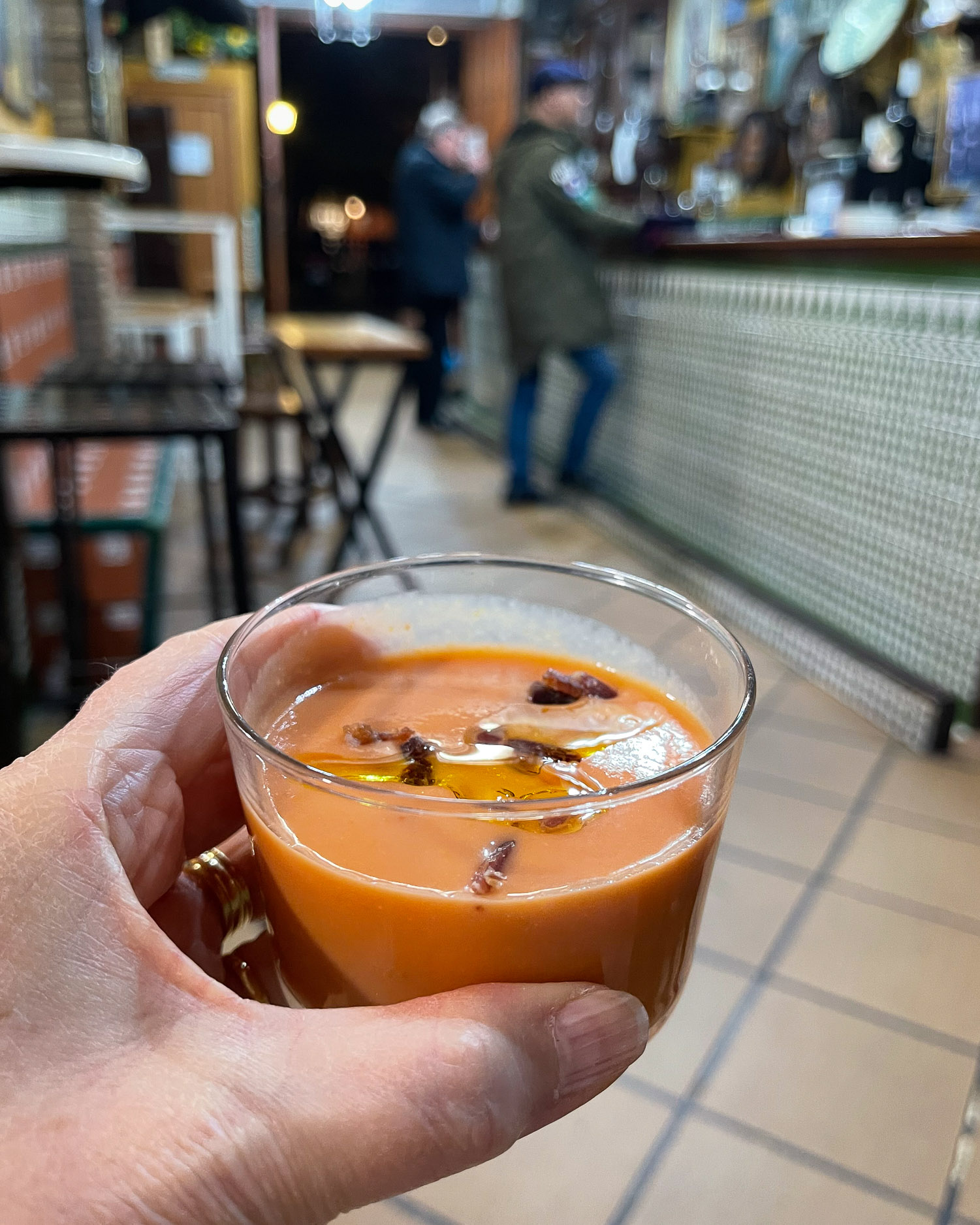
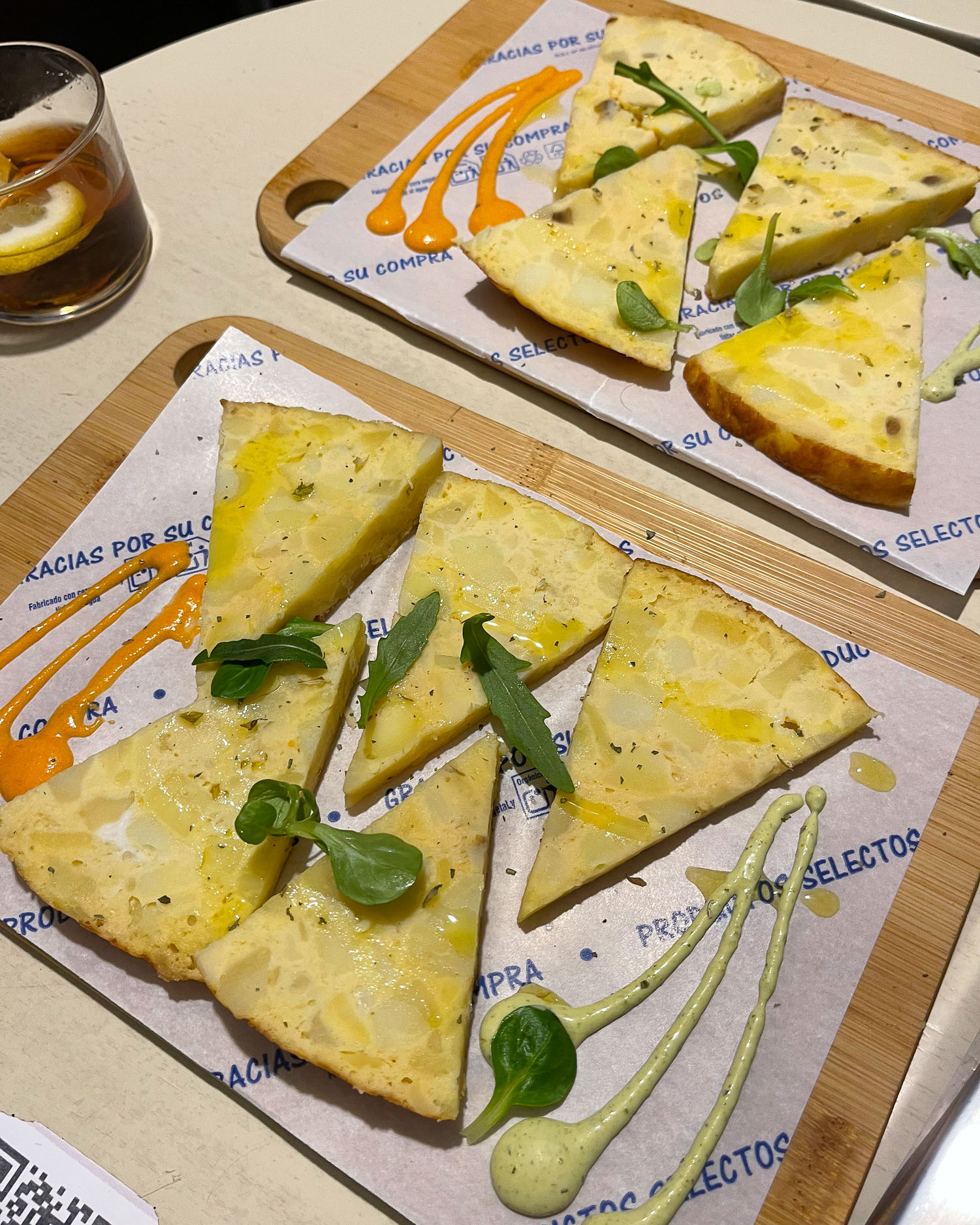
We can highly recommend this evening tapas tour in Seville that we took. We researched a few and took this one because it was excellent value and well reviewed. We also enjoyed making the tour in the evening as we got plenty to eat and drink and it saved us decisions on which restaurants or bars to choose.
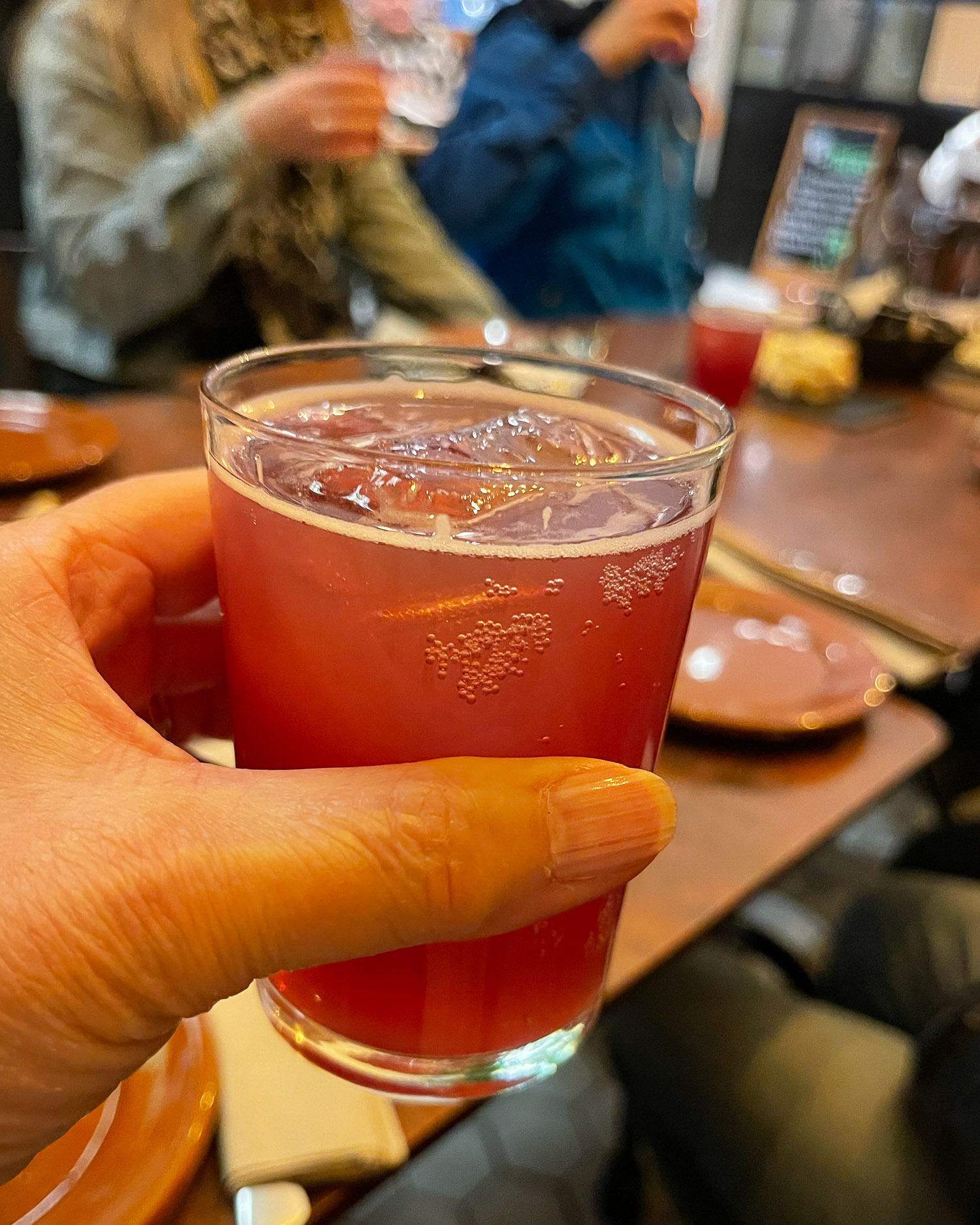
Typical Tapas dishes in Seville
Here are a few of the tapas dishes to look out for in Seville
- Tortilla – slices of cold potato omelette that may or may not include onion (it’s a big debate which is best!)
- Salmorejo – a chilled soup made with tomato, garlic and olive oil
- Espinacas con garbanzos – a warm dish of spinach and chickpeas
- Ensalladilla Rusa – Russian salad made of potato, mayonnaise, hardboiled eggs and vegetables often with an addition of prawns
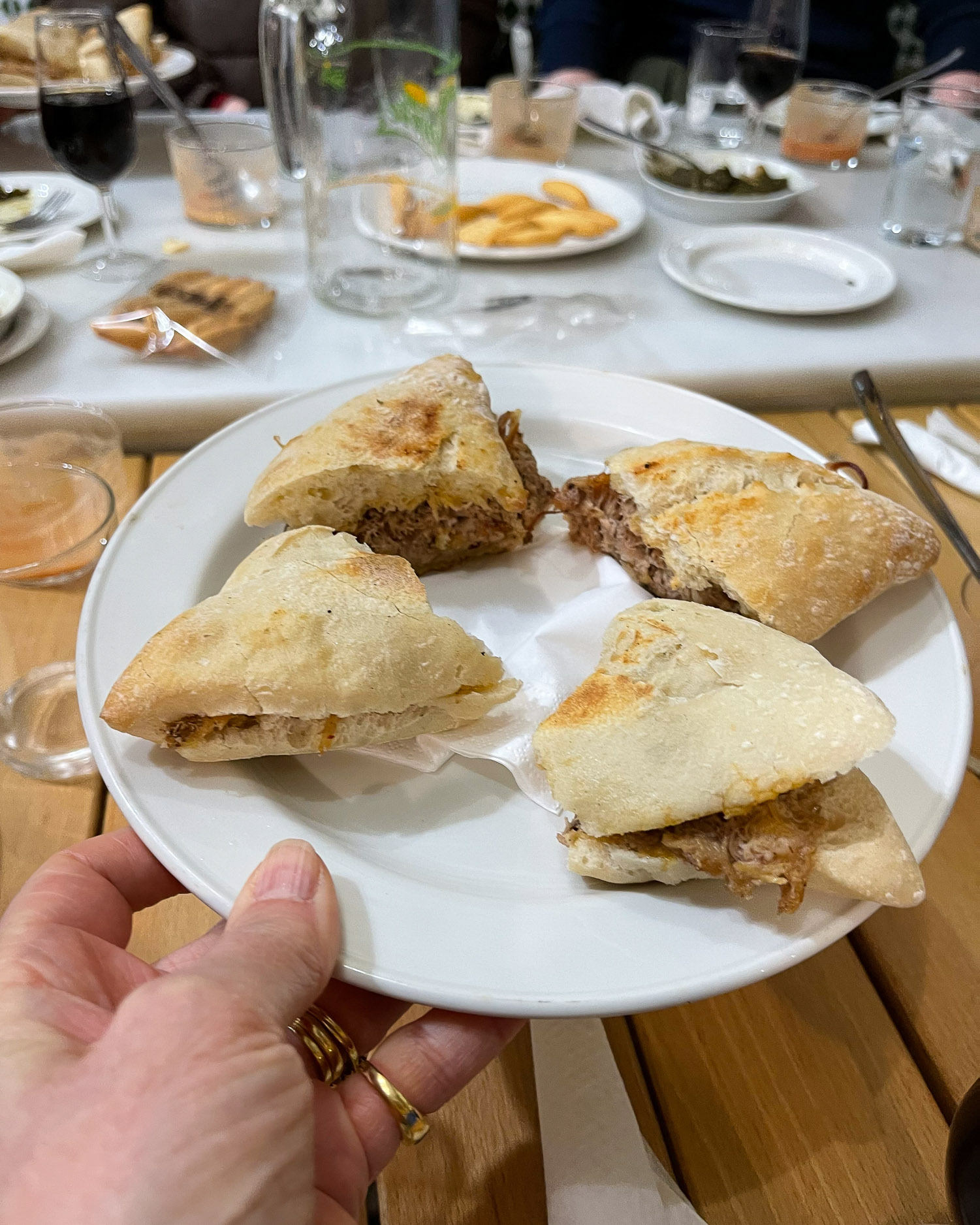
- Montadito de Pringa – a miniature sandwich (montadito) filled with a stew of slow cooked meats (pringa)
- Cazon en adobo – cubes of white dogfish marinaded in vinegar and fried in batter
- Carrillada – slow cooked pork cheek in a rich wine sauce
- Croquetas – deep fried potato cakes flavoured with jamon (cured ham), fish or cheese
- Atun – fresh tuna from Cadiz prepared in various ways, such as seared or cured
- Bacalhau – salt cod, which is rehydrated and cooked to use in different ways for hot tapas.
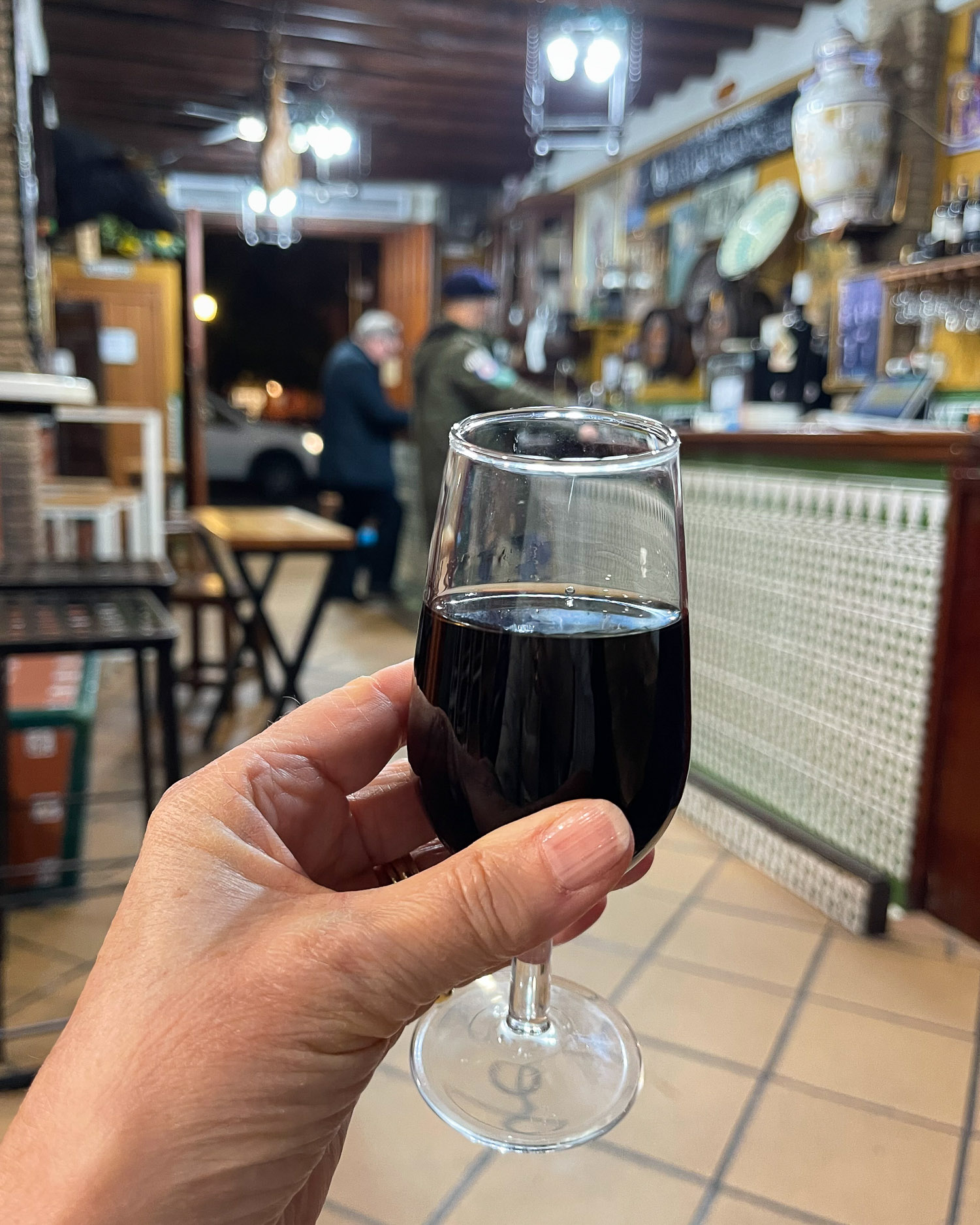
What to drink in Seville with your Tapas
For drinks to accompany the tapas, try the local orange wine (like a sweet sherry flavoured with orange peel), Vermouth, Tinto de Verano (red wine with fizzy lemonade) or of course a caña (small glass) of the local Cruzcampo beer.
Check out my article: Best Tapas in Seville – tapas bars and tours to enjoy
9. Plaza De España
The Plaza de España was designed by Aníbal González for the Ibero American Exhibition of 1929, and is one the top things to see in Seville. The Exhibition lasted over a year and was designed to showcase the best of Spanish culture, as well as reinforce ties with former colonies in North and South America.
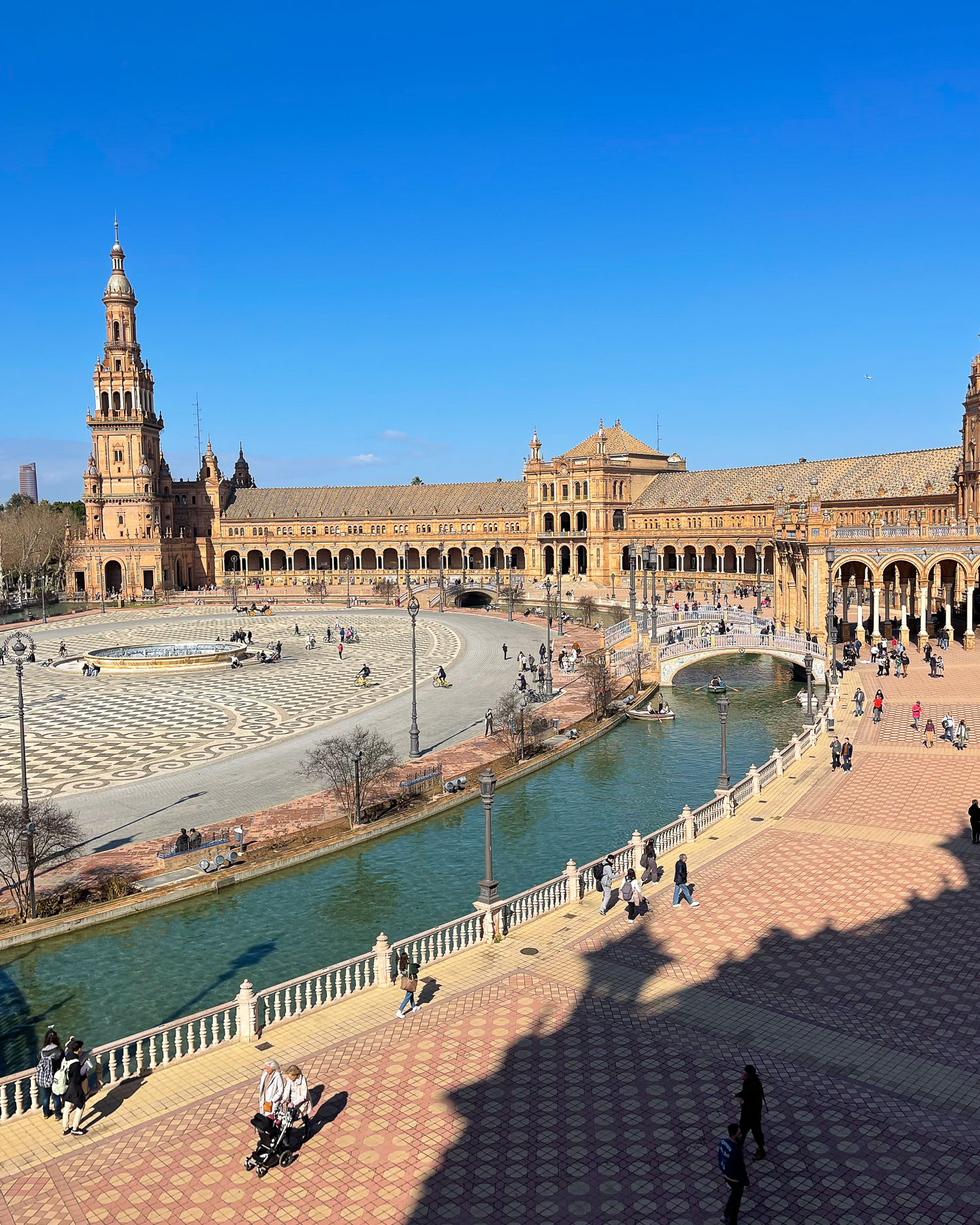
Plaza de Espana Seville was the centrepiece of the exhibition, with a semicircular building that served as space for Spain’s industry and technology exhibits.
The building overlooks a huge plaza with canal and four bridges reminiscent of Venice, although they actually represent the four kingdoms of Spain. With such a distinctive appearance, the Plaza has featured in music videos and films, like Laurence of Arabia, Star Wars and The Dictator.
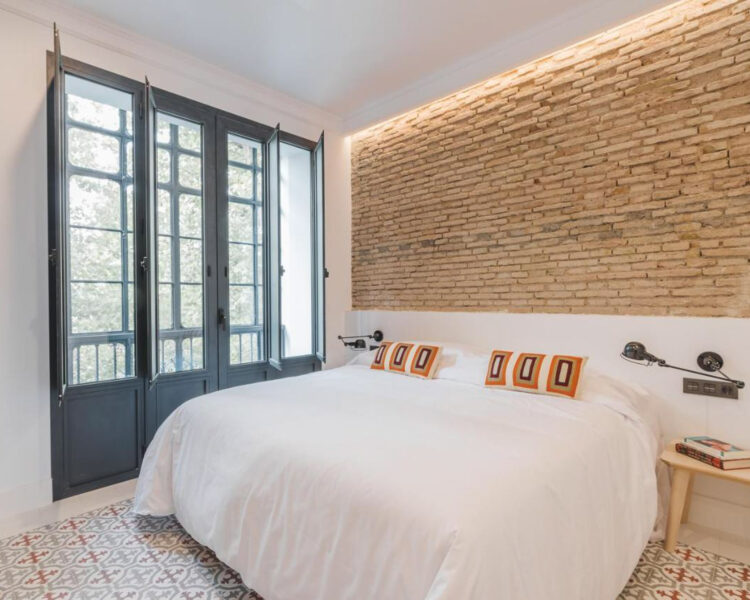
Stay at Hotel Boutique La Prada del Marques in Seville
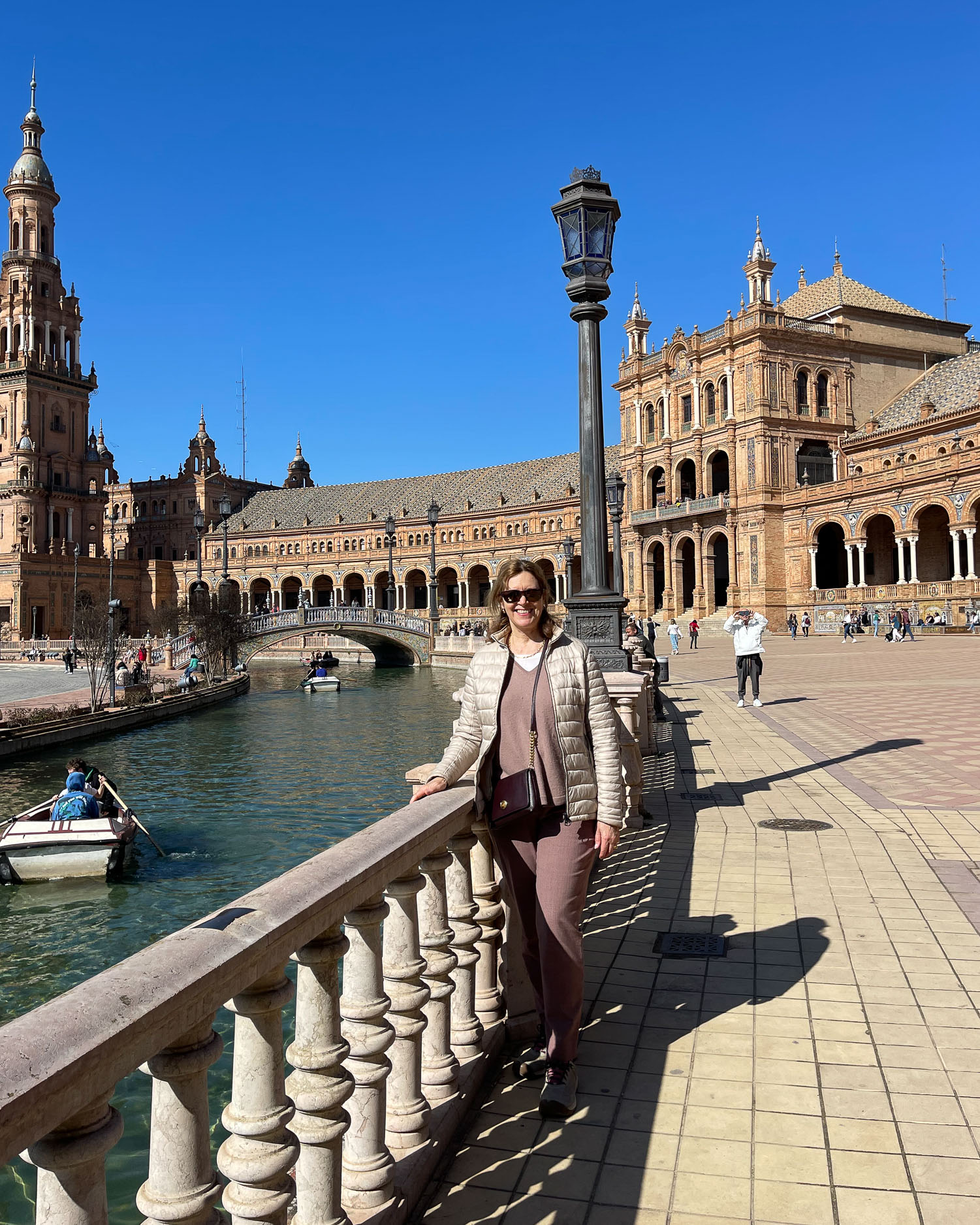
This enormous plaza is always busy, yet it manages to absorb all the people who come to enjoy the ornate building and photogenic views. A covered colonnade provides shelter from the rain and burning Andalusian sun, giving access to stairways and viewing terraces on the first floor that make a good spot for a photo.
Under the central portico, we saw street musicians and dancers giving a free flamenco performance to an appreciative crowd.
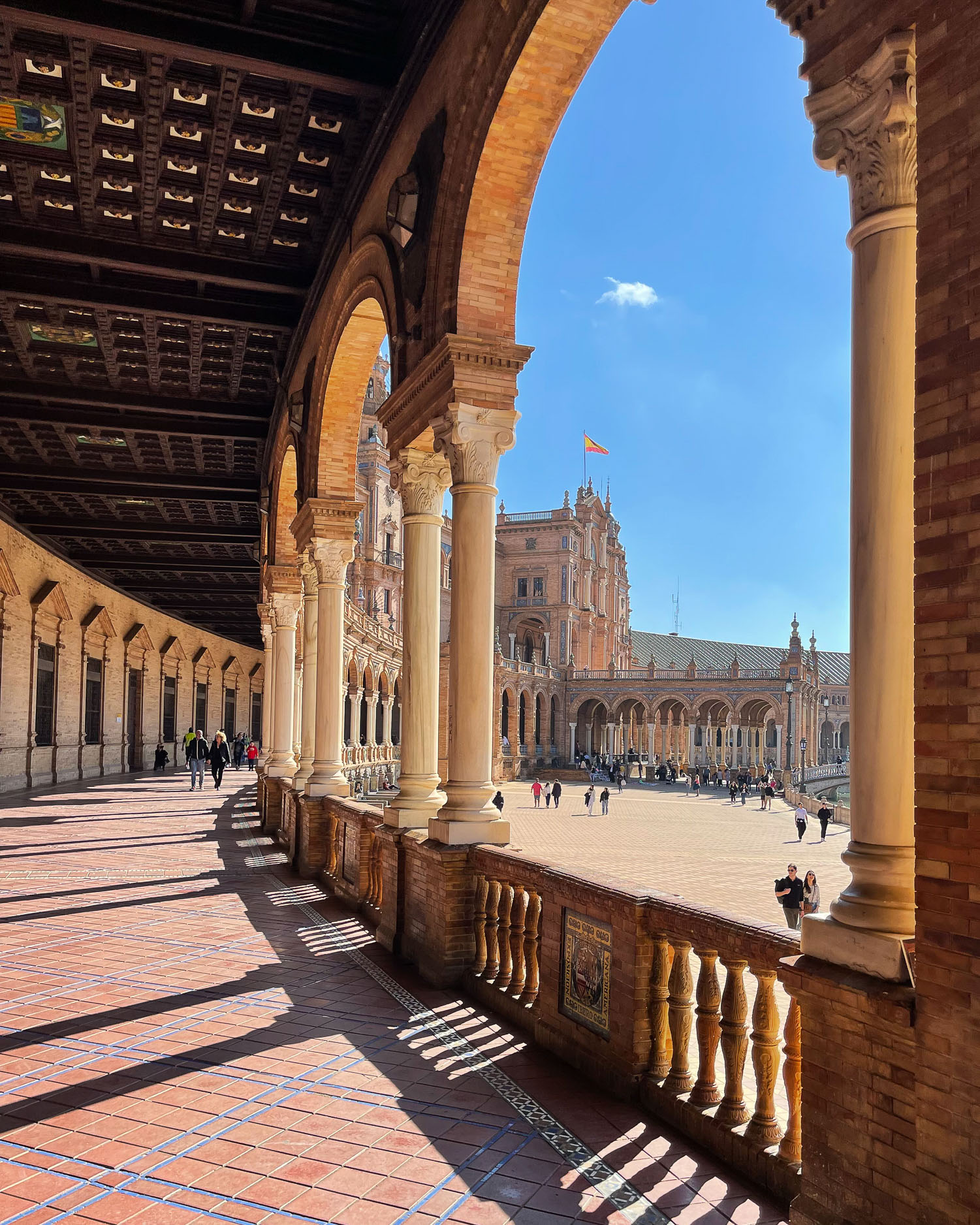
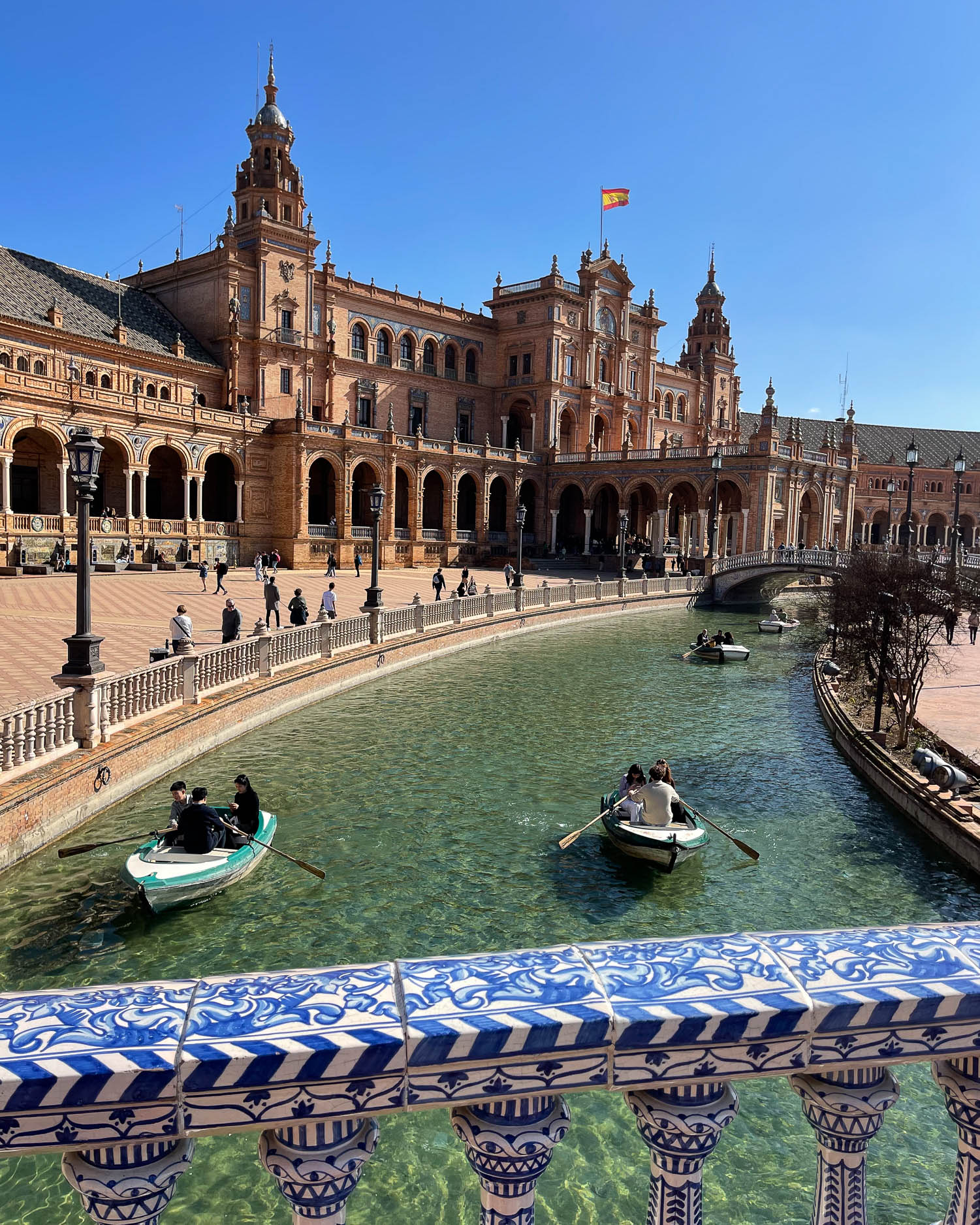
Activities at Plaza de Espana
One fun activity is to rent a boat to row around the shallow canal and under the bridges. We enjoyed watching the antics as people struggled with the oars and spun around in circles! The Plaza is also a favourite route for the horse and carriage rides that start outside the cathedral in Seville.
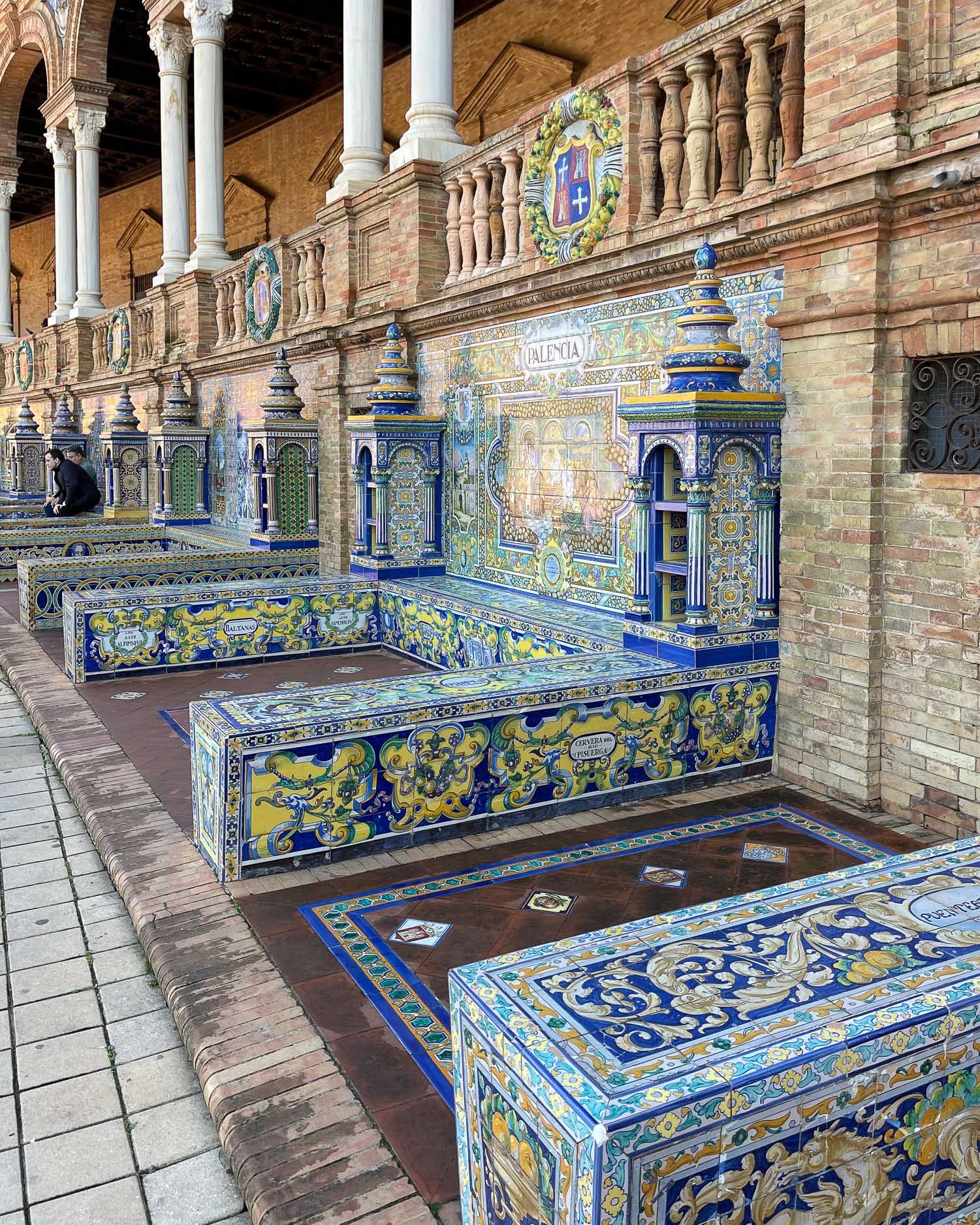
All around the building at ground level are tiled niches and benches, portraying the 48 different regions of Spain. Notable moments from their history are captured on the colourful painted tiles.
These are fun places to either relax or take a photo. Of course if you have a favourite region of Spain, you’ll want to be proudly photographed on that particular bench.
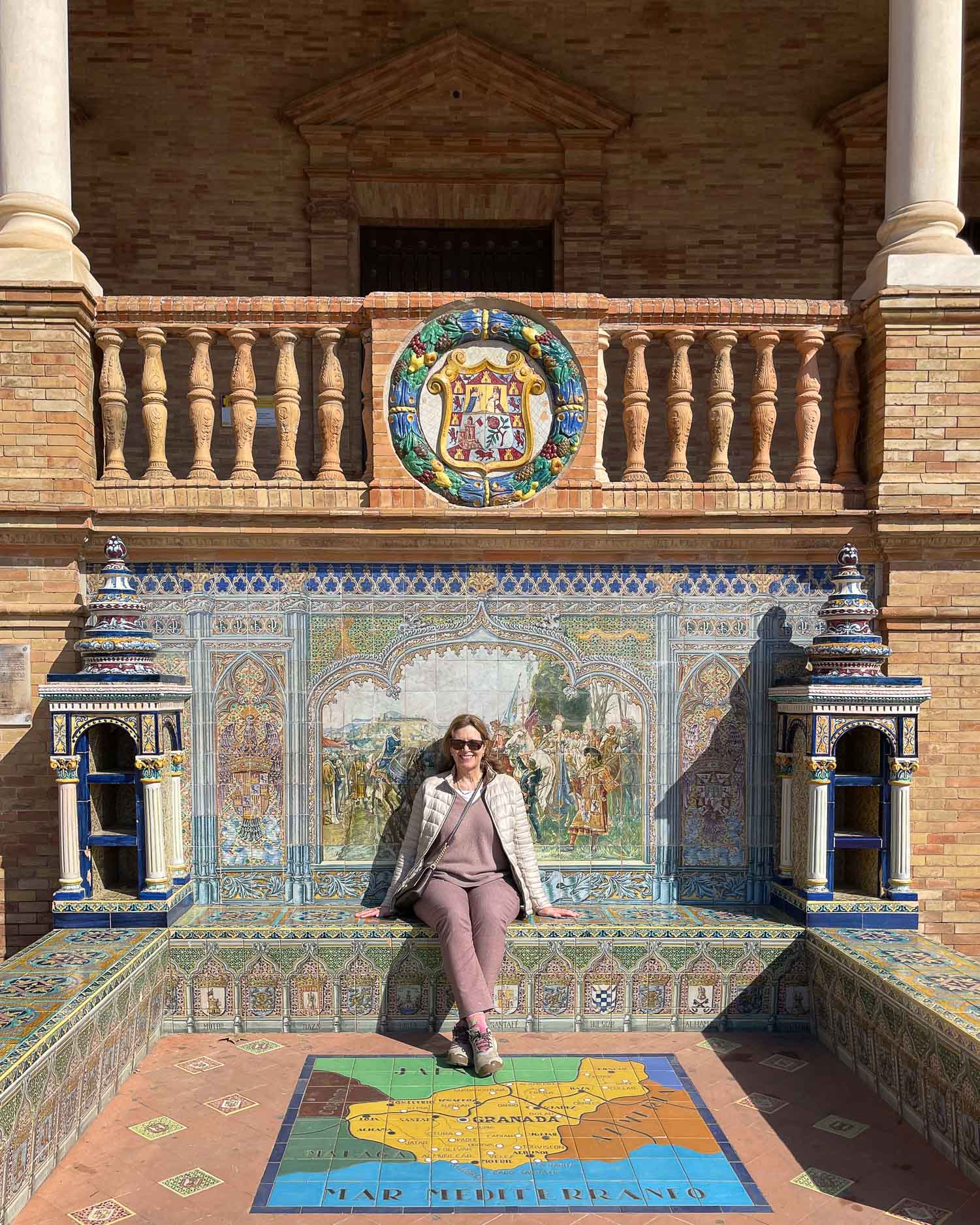
Plaza de España is located within Maria Luisa Park, so it makes sense to explore there next.
10. Maria Luisa Park
After visiting Plaza de España, wander through Maria Luisa Park, that adjoins the Plaza. The park with its shady palm trees and avenues was originally part of the San Telmo Palace, which is now a government building. It was donated in 1893 to the people of Seville by the sister of the Spanish Queen, Infanta Maria Luisa, after whom the park is named.
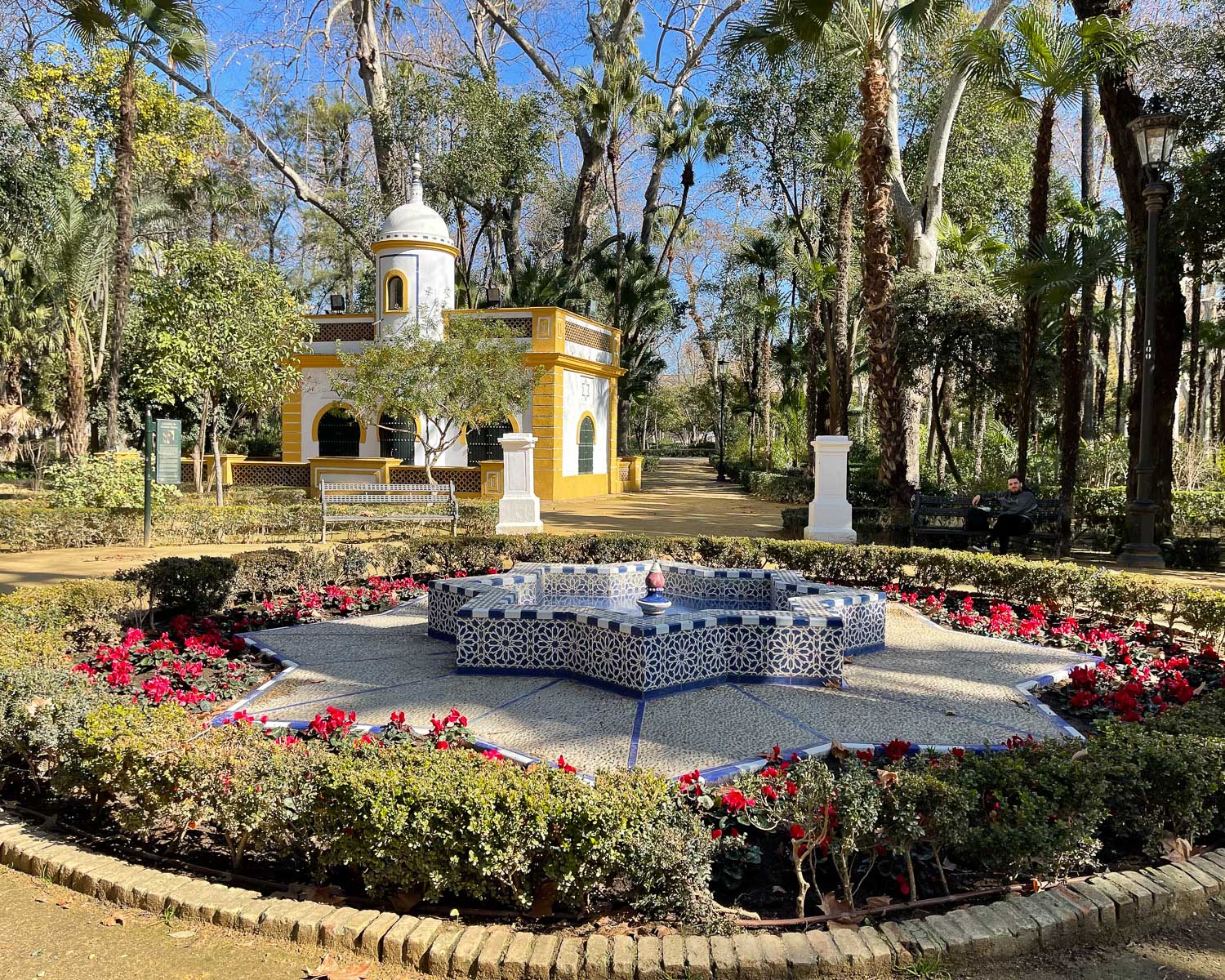
As you wander through the gardens, numerous pavilions, flower filled borders and formal gardens reveal themselves. There’s more to see than immediately meets the eye, so take the time to seek out the pretty pavilion in the lake of Isleta se los Platos, the charming frogs of the Fuente de las Ranas and the formal gardens of Plaza de America.
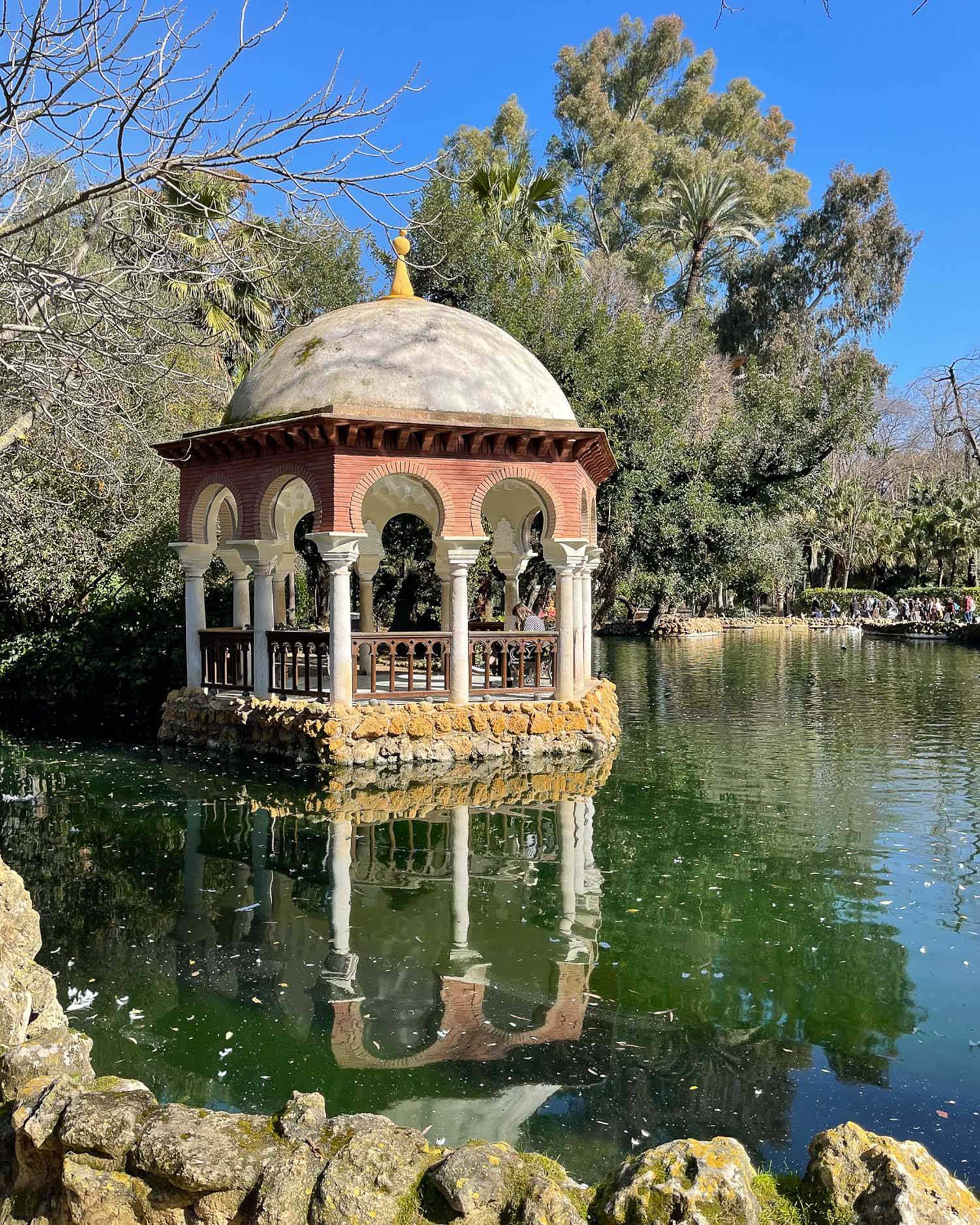
We were hoping to find a pleasant cafe within Parque Maria Luisa, but apart from a kiosk near Plaza de España there didn’t seem to be anything. However, there are a couple of shady cafes in the less visited Jardines del Prado de San Sebastian that are not too far away. Or head towards the river for the contemporary Iguana Terraza bar / restaurant where we had a sunny al fresco lunch.
11. Museums near Parque Maria Luisa
Some of the pavilions that were previously used for the Ibero-American Exposition of 1929 have now been converted into Museums. There is typically a small charge for entry (check websites for latest destails).
Museum of popular arts and traditions – Museo de Artes y Costumbres Populares is housed in the Mudéjar Pavilion, which was built in 1914 as the Art pavilion of the Ibero-American fair. The museum is dedicated to Andalucian life, with lace and embroidery, domestic room sets and traditional crafts.
Archaeological Museum – Housed in the former Plateresque Pavilion, collections cover the pre-history and Roman periods of Seville, although it was closed for renovation when we visited.
Casa de la Ciencia – Close to Maria Luisa Park is Seville’s Science Museum, which was formerly the Peruvian Pavilion from the Ibero-American fair. The museum showcases the flora, fauna and minerals of Andalusia, with a planetarium that shows projections of astronomy on its dome.
12. Wander around the Triana neighbourhood
Just across the river from the old quarter and main sites of Seville is the pretty Triana neighbourhood. The area has its own distinctive identity, which was in the past known for gypsy culture and the ceramics that were made here from clay on the river banks.
One of the most photographed views of Triana, is of the coloured townhouses that overlook the River Guadalquivir, taken from the opposite bank.
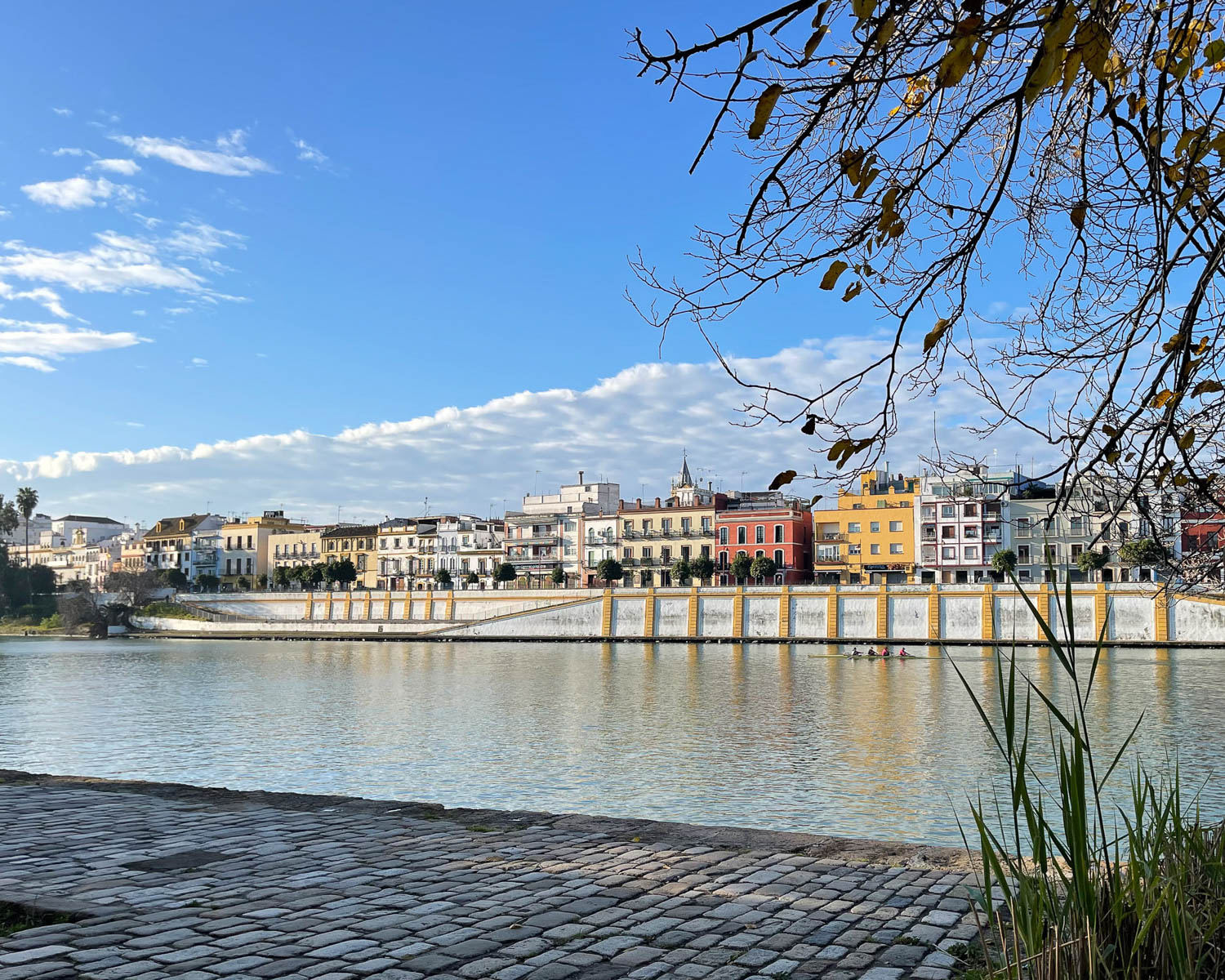
We recommend that you cross the river at the Puente de Isabel II ( also known as Triana bridge) to first explore the Mercado de Triana and the streets surrounding it. This is the neighbourhood where you’ll find most of the ceramic shops selling beautiful azulejos tiles and bowls, concentrated around the Centro Ceramico Triana.
Then wander along the river bank and the streets that run parallel to it to explore the neighbourhood, bringing you to Puente de San Telmo, where you can cross back close to Seville Cathedral and Alcazar. If you are in Triana at night, there are lots of bars, restaurants and Flamenco bars along the river and in the side streets and squares.
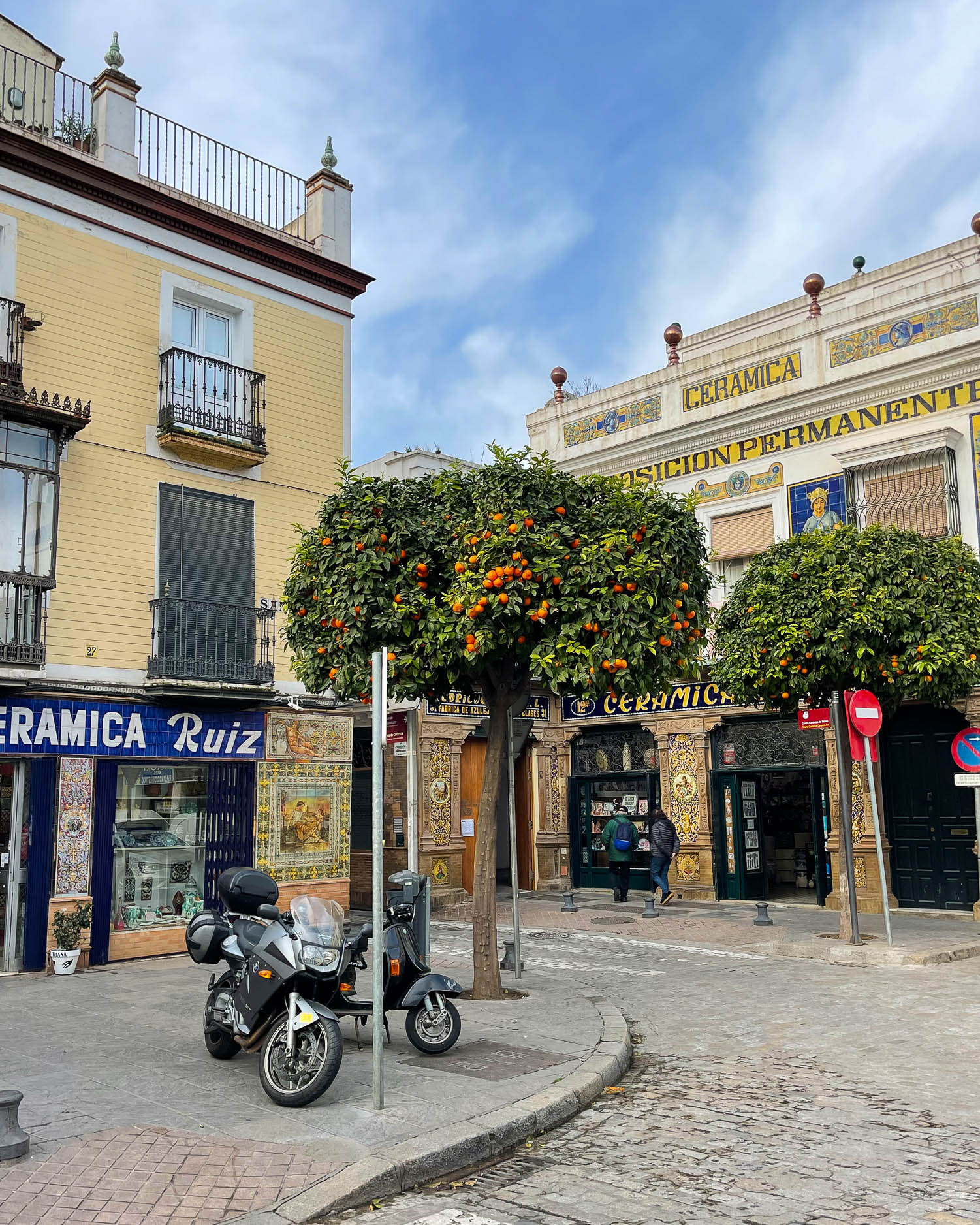
Mercado de Triana
Mercado de Triana is one of the most popular of Seville’s neighbourhood markets to visit. It opens early in the morning, and many stalls close around 2-3pm, so best to visit in the morning. We made a point of arriving for breakfast (often taken mid-morning in Spain) and ordered churros, hot chocolate, fresh orange juice, coffee and croissant from one of the busy bars at one end of the market.
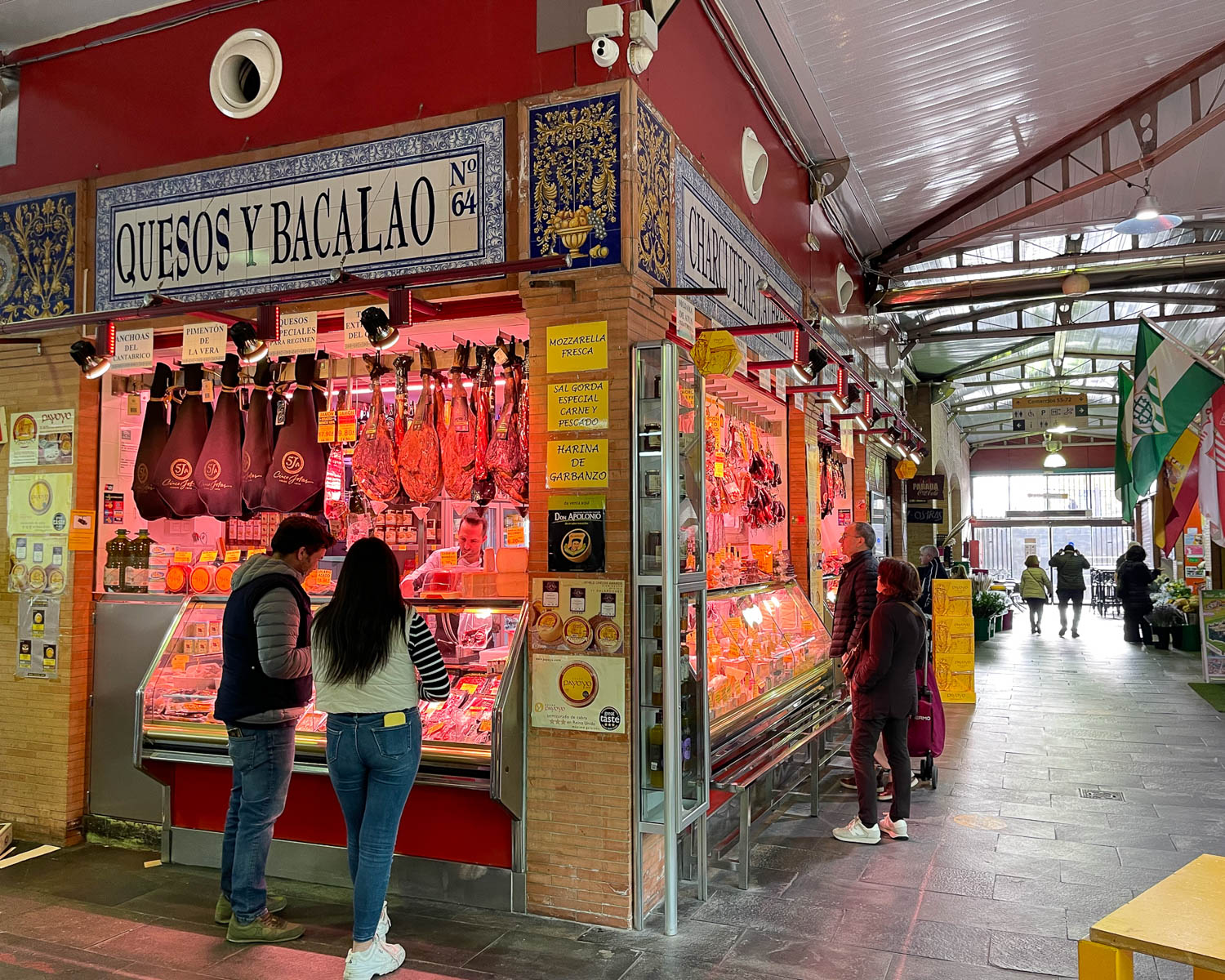
Around lunchtime we also noticed that there were several popular tapas style bars and restaurants within the market serving Paella and other traditional Andalusian dishes. Along with the typical fresh meat and fish stalls are several selling deli items and foodie souvenirs.
It’s a great spot to pick up some pastries, cheese, fruit and jamon for a picnic later in Parque Maria Luisa or on the riverside. In the basement you can see the foundations of the Castle of San Jorge on which the market was built, although museum displays we’d read about are no longer open.
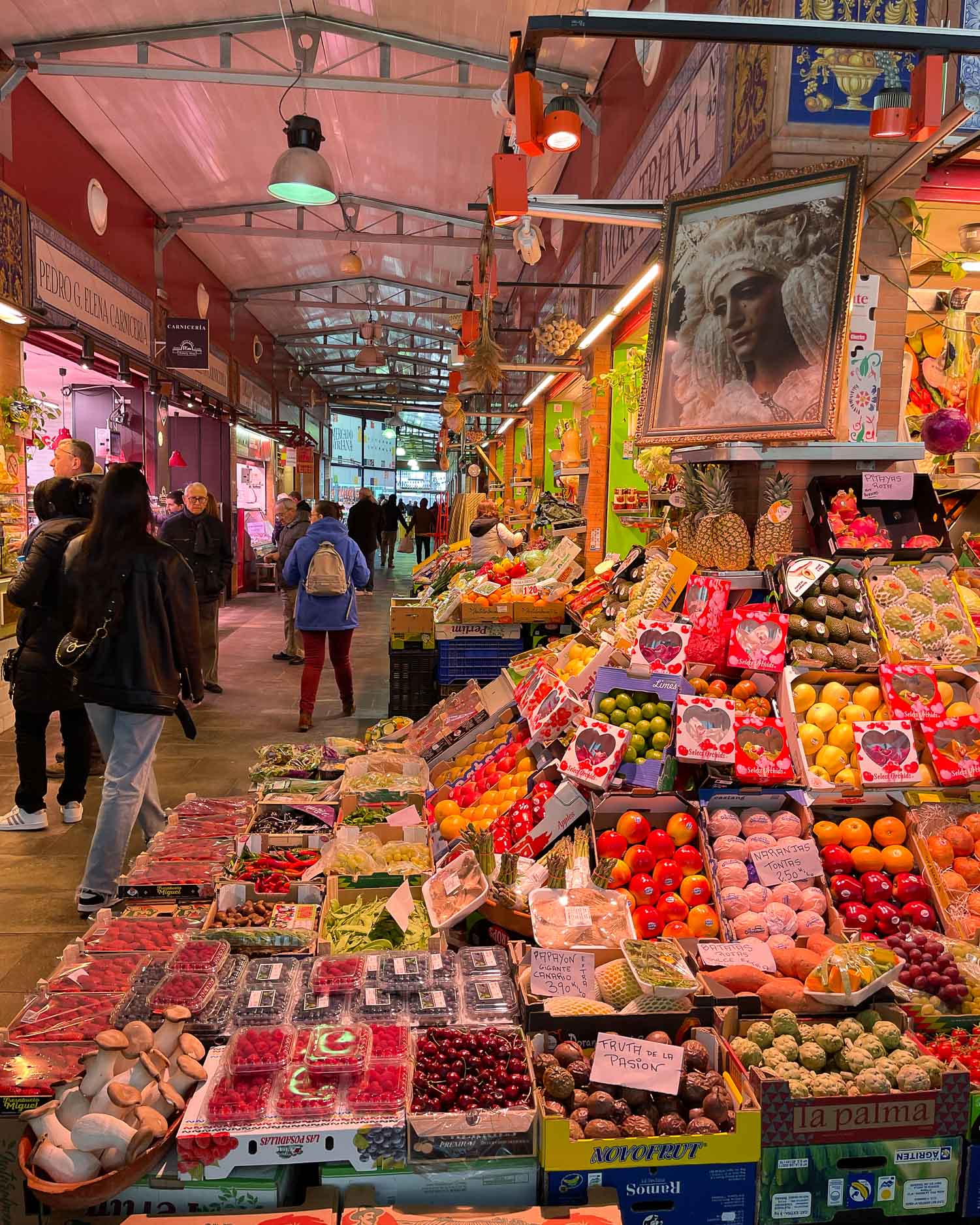
13. Centro Ceramico Triana in Seville
If you are interested in the artizan crafts of Seville and beautiful ceramics that were made here, pay a visit to the Centro Ceramico Triana. The museum is located within an old ceramic factory and we learned how clay was dug from the banks of the Guadalquivir river and brought by donkey into the factories to be be kneaded and prepared.
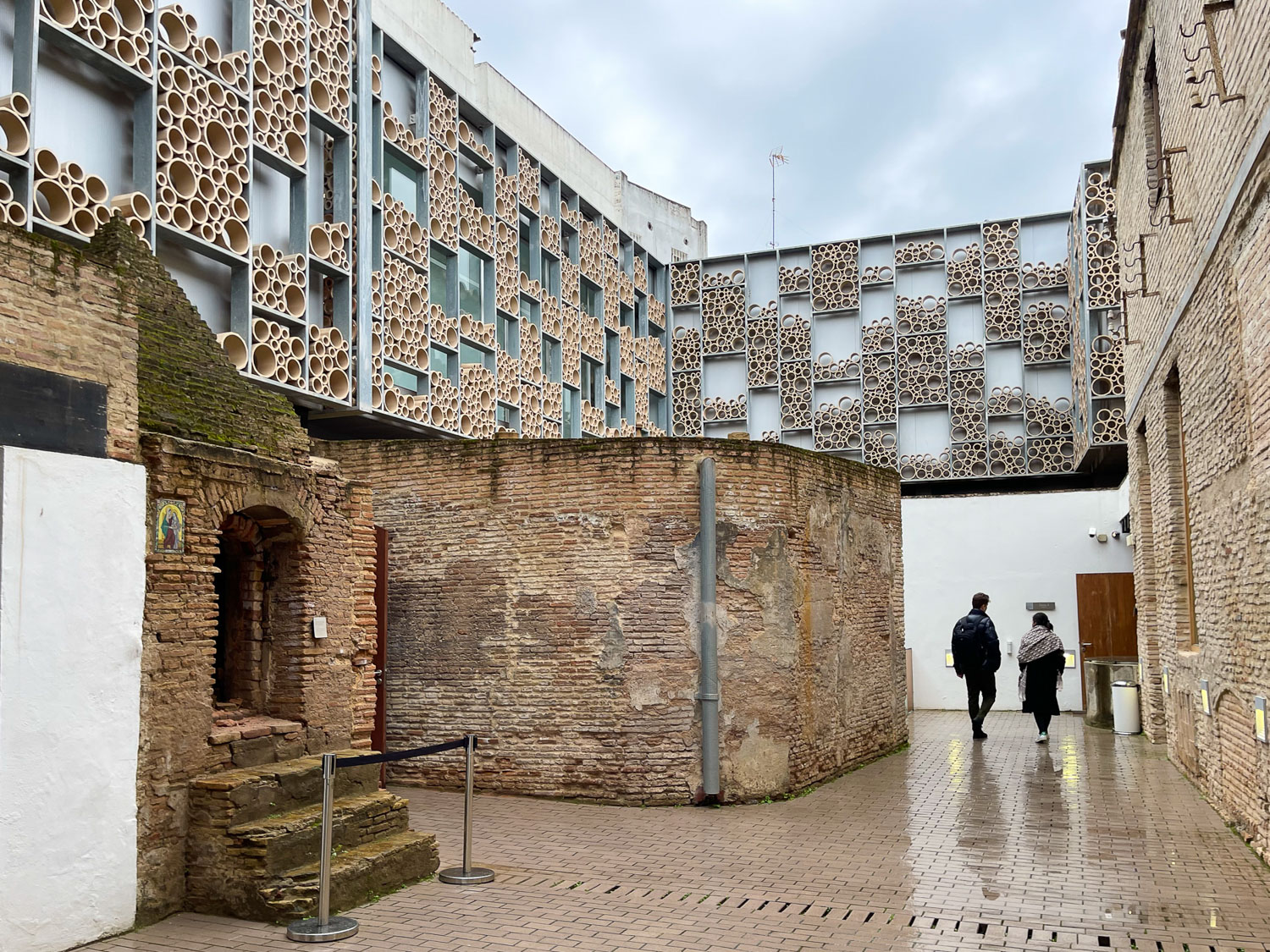
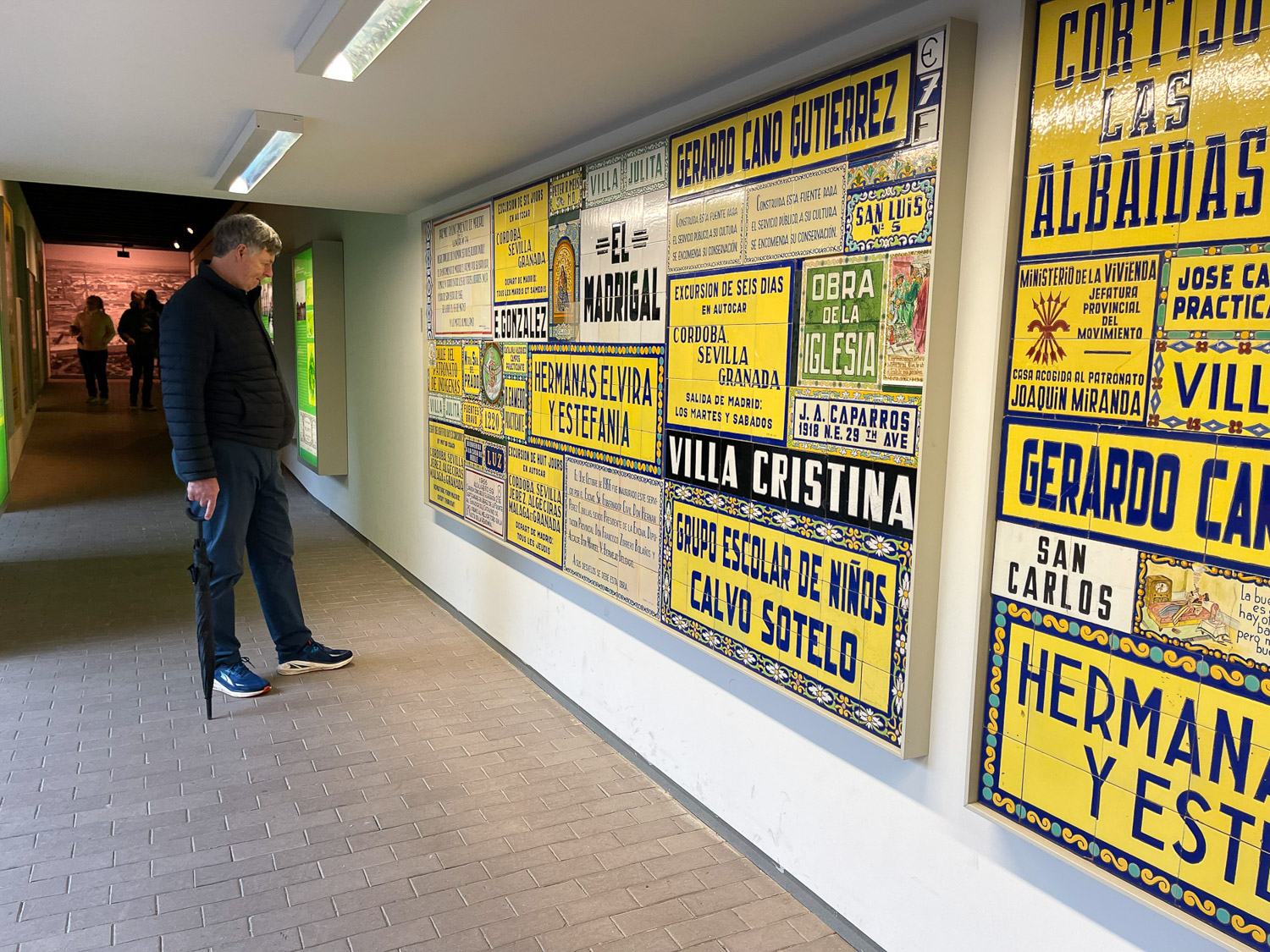
Pottery was used for pipes, roof tiles and other building materials as well as being pressed into moulds for coloured tiles that could be used to decorate homes and public places.
We tend to associate Seville with the Moorish style of glazed tiles and bowls with geometric patterns. But tiles are also commonly used to this day for house, road and business signs as well as beautiful advertisements for local businesses, churches and even commercial products.
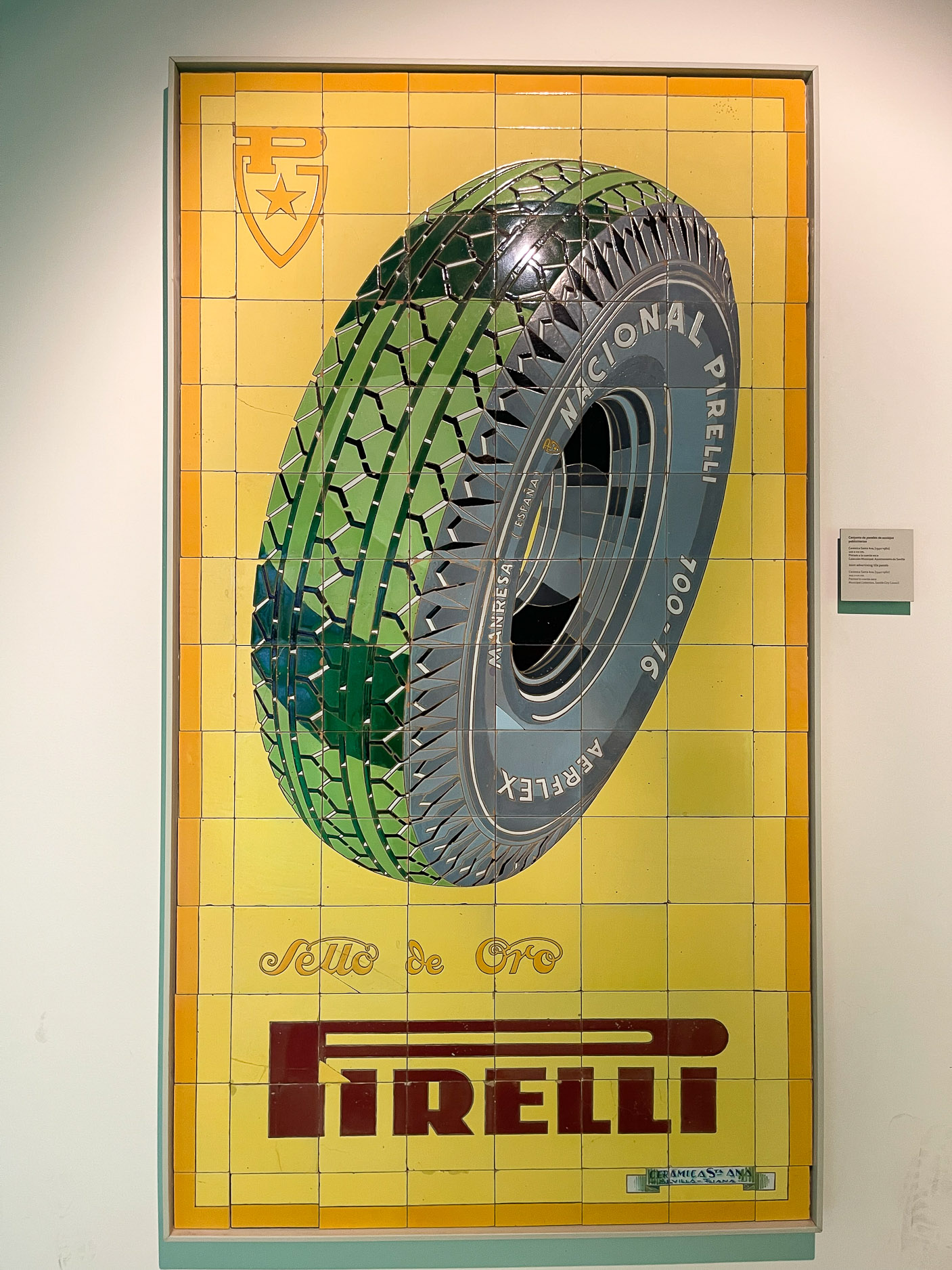
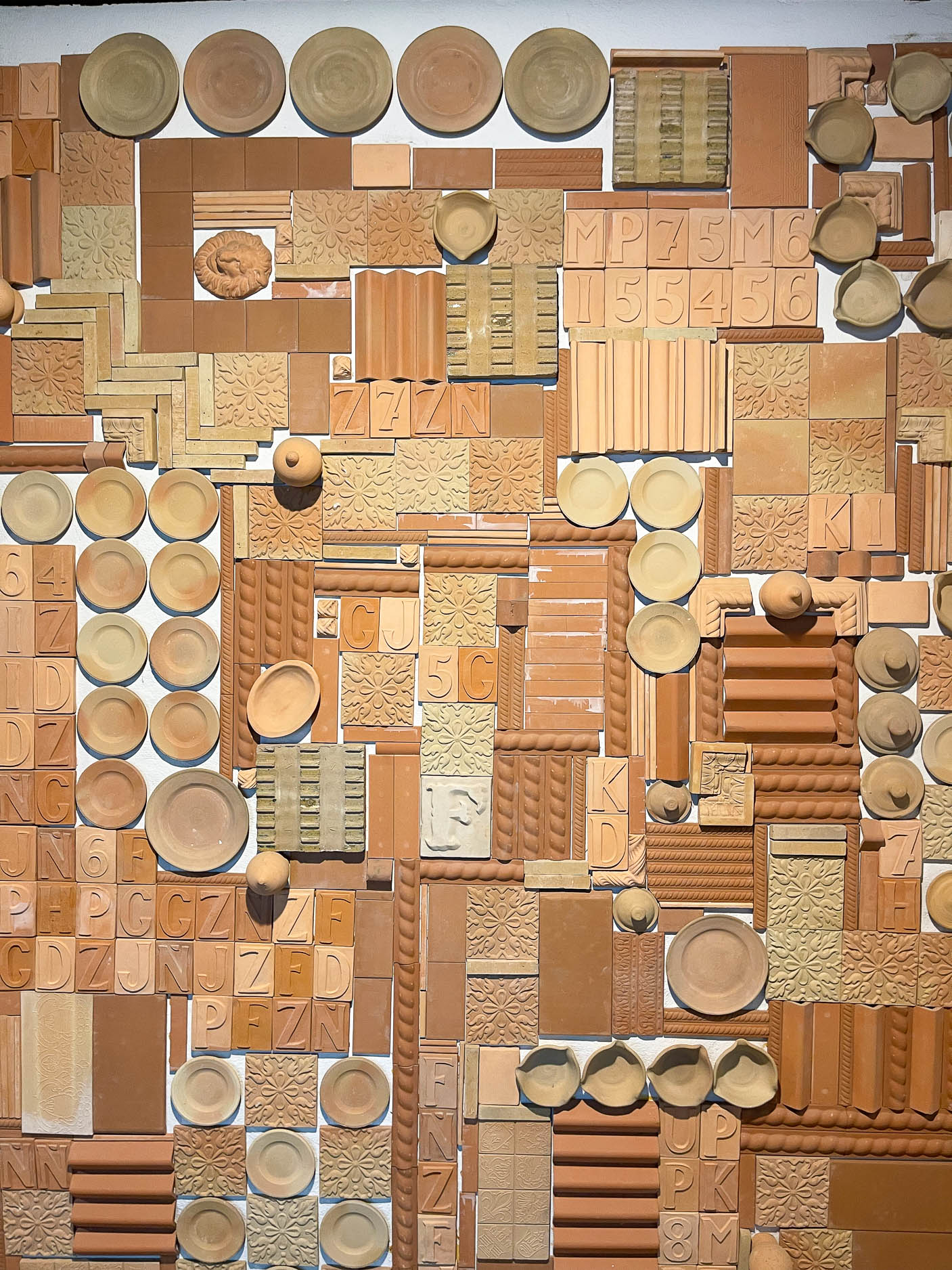
Isla Magica
If you are visiting in summer or have kids to entertain, you might want to head to Isla Mágica just north of Triana. The park has themed areas based on Spain’s discoveries of the 16th and 17th centuries, such as Seville Port of the Indies and Gateway to America. Rides, walkways, gardens and attractions are landscaped around a lake. In addition there’s a water park, with slides and lazy river, to cool off in Seville’s baking summer.
14. Walk along right bank of Guadalquivir
If the weather is fine (it nearly always is in Seville) it’s a beautiful walk along the eastern banks of the Guadalquivir River. As an alternative to walking, you could rent a bike using apps like Lime or RideMovi, since designated bike paths run along the riverside.
We joined the riverside walk close to the Maria Luisa Park at the Puente de los Remedios. The stretch between this bridge and the Puente de San Telmo has a couple of nice outdoor bars with chairs set overlooking the river. There’s a shaded walkway and some of the riverside has been made into public gardens with water features.
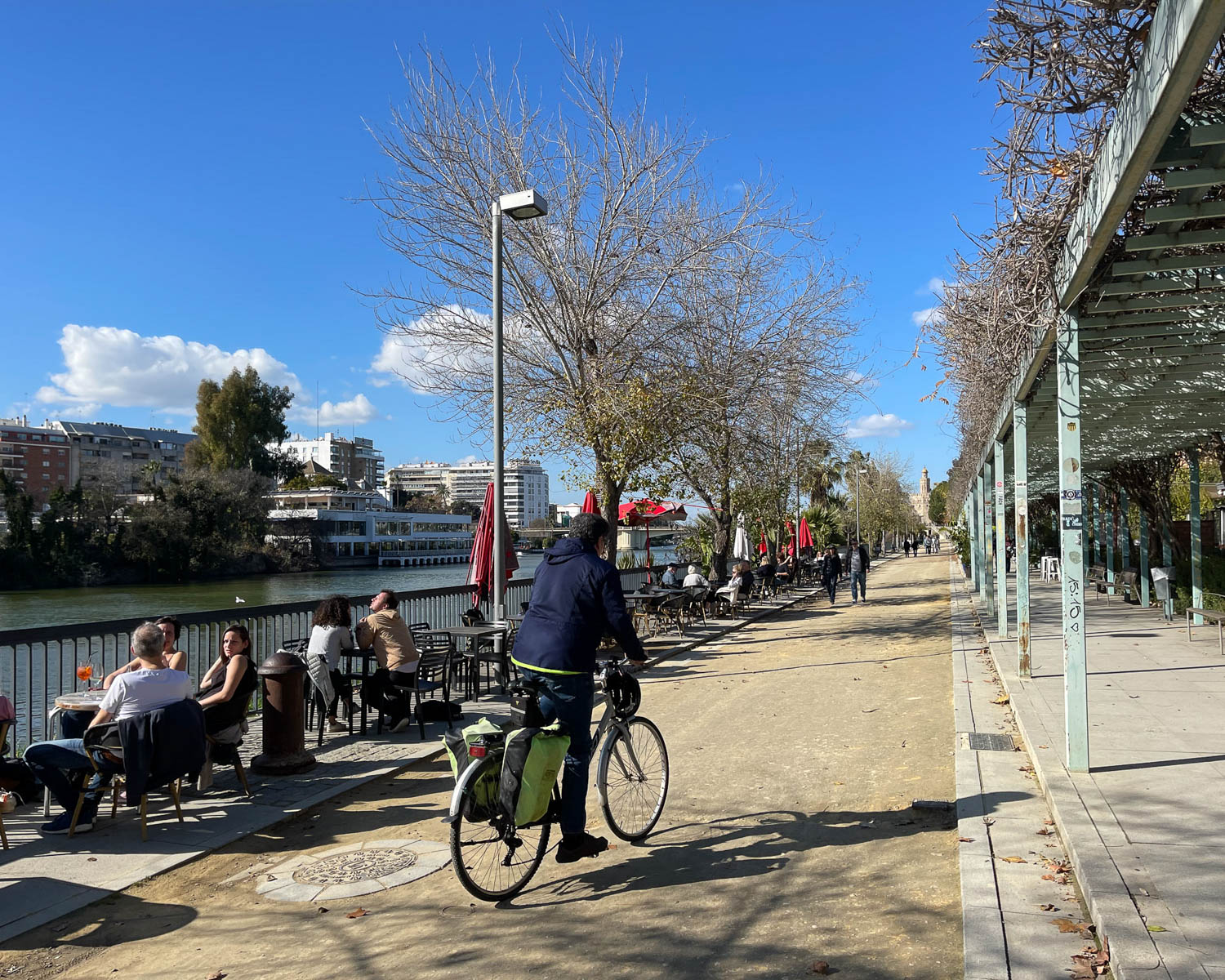
Torre del Oro Seville
Continuing under the Puente de San Telmo bridge, the Torre del Oro comes into view. This popular Seville landmark was built by the Almohads in the 13th century as a military watchtower, bearing a chain that was strung across the river, to control access for ships to the city.
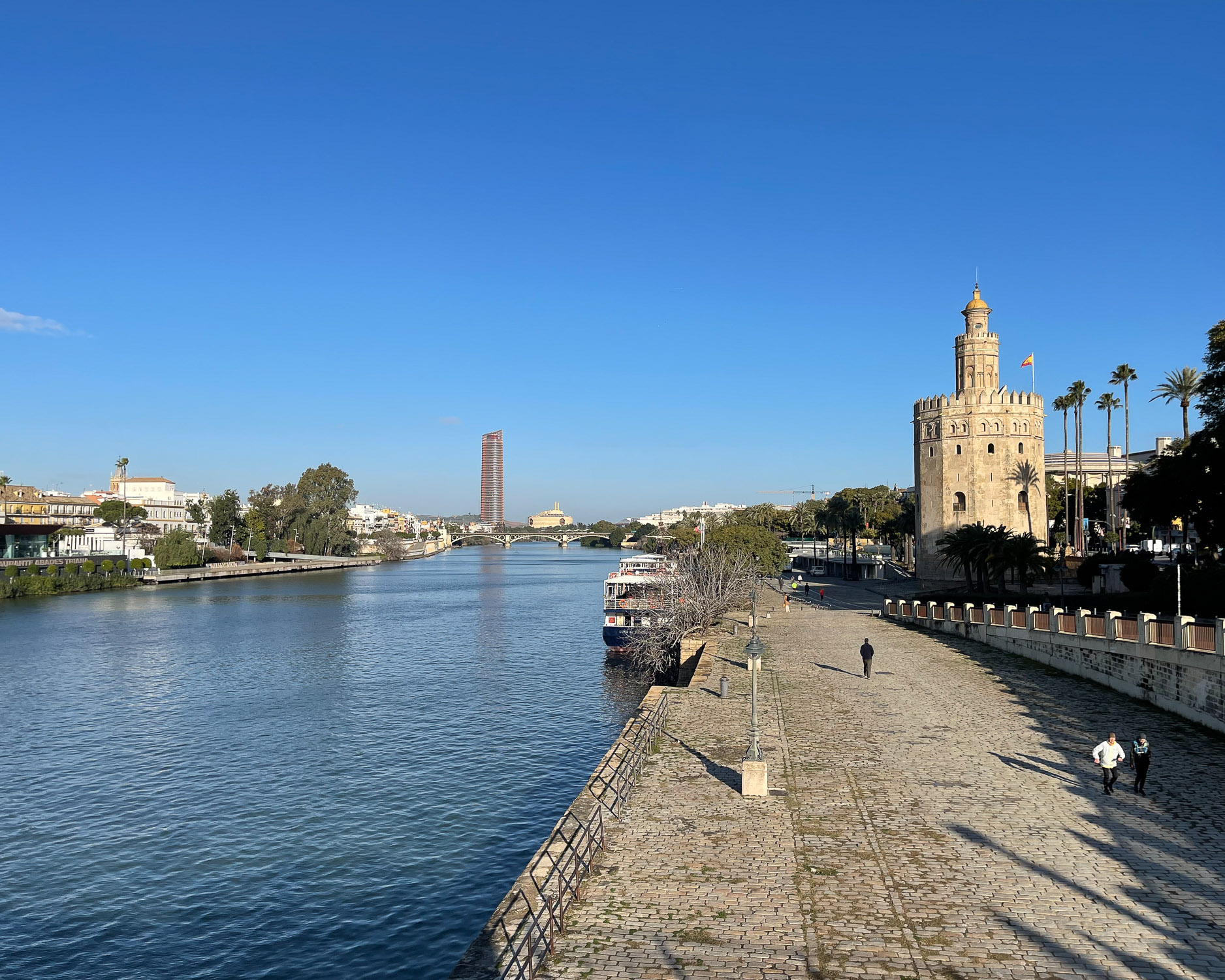
Now the tower houses a small naval museum and you can climb to the top for views from the turret across the river and old city.
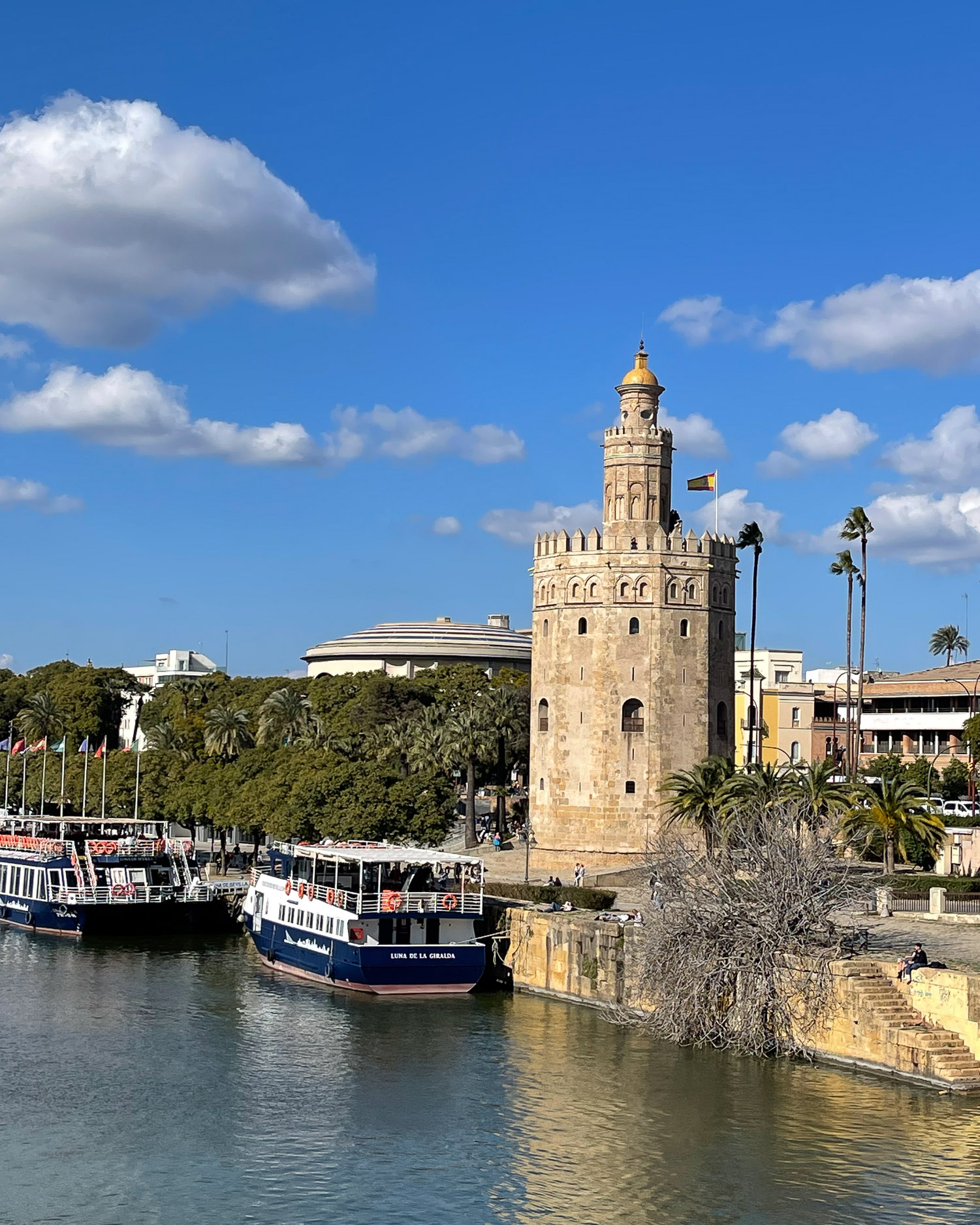

Stay at Hotel Boutique La Prada del Marques in Seville
Take a boat tour on Gualdalquivir
Continuing our walk along the cobbled walkway, we passed the spot where the river cruise boats are moored. There’s a ticket kiosk to buy tickets for the 1 hour cruise that takes you up and down the Guadalquivir, to get a view from the river of Seville’s landmarks.
At busy times you can also book online in advance for a Guadalalquivir River City Cruise. As the cruise boats can get quite crowded, if you prefer a more intimate experience, book this 1 hour River Sightseeing cruise on a much smaller solar powered boat, with live commentary and an on board bar.
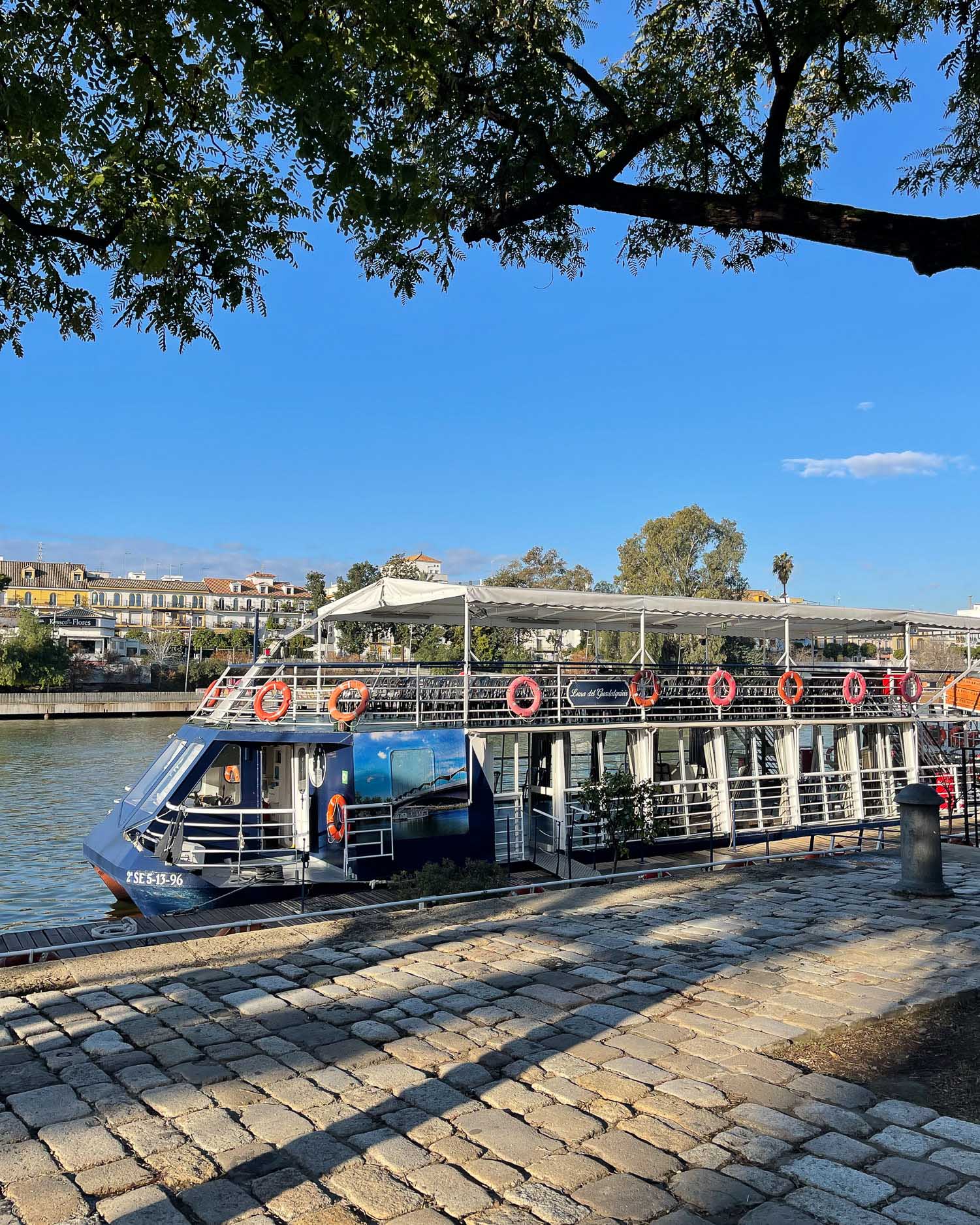
Nao Victoria 500
A little beyond Torre del Oro, we came across the Nao Victoria 500, which is moored on the riverside. The tall ship is a replica of the vessel used by Magellan in his first known circumnavigation of the World between 1519 and 1522.
An exact replica of Nao Victoria was built in 1992 for the Expo 92 World Fair and was used in 2019 as the centrepiece for the 500th anniversary of the voyage.
In the tourist centre on the quayside is an exhibition about the history of the voyage and its importance to Seville where the voyage began, which includes a visit on board the ship itself. On this stretch of the river, you can also get some pretty photos of the coloured houses of Triana on the opposite bank.
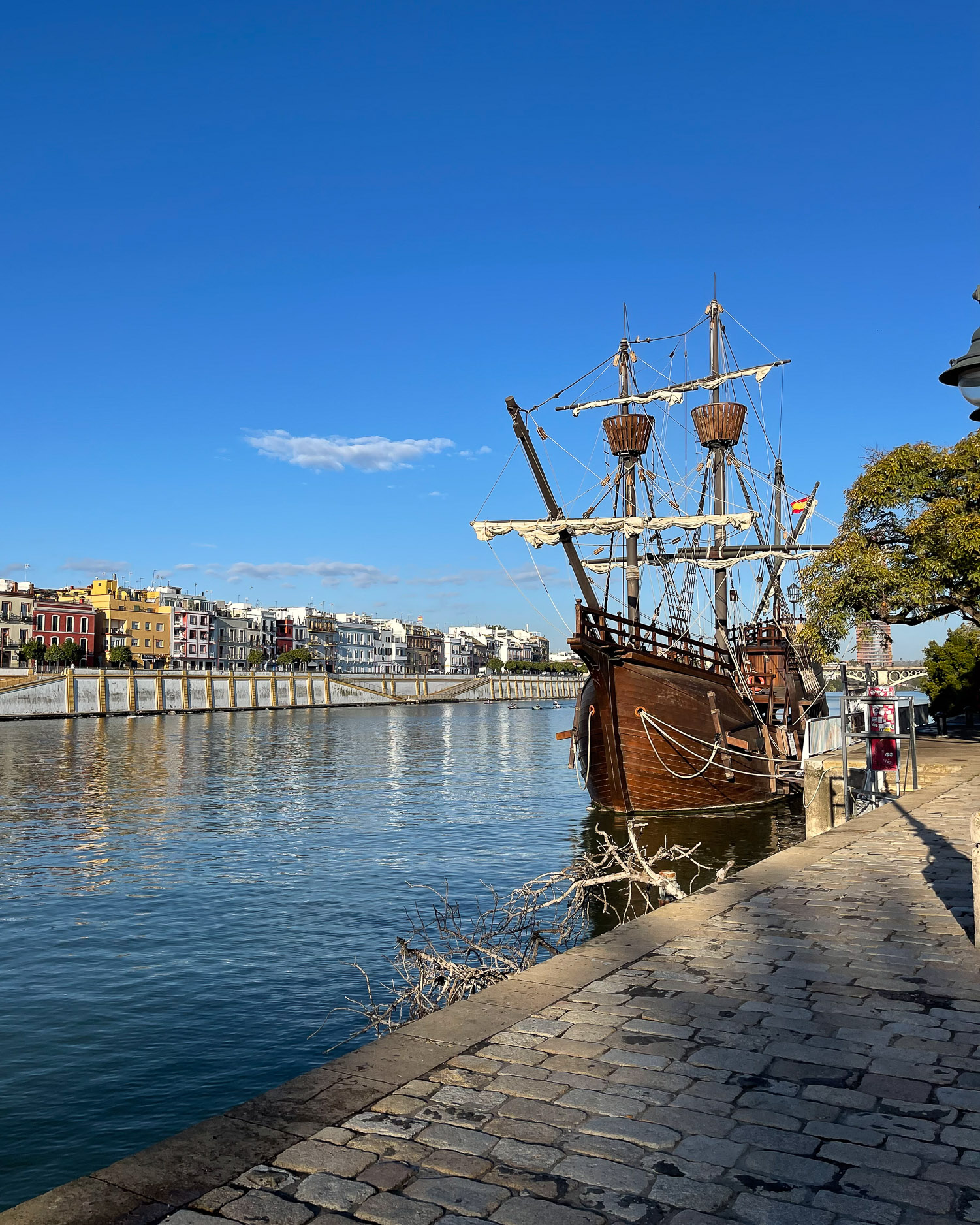
The Bullring in Seville
Close to this point on the riverside is the Plaza de Toros or Bullring of Seville, so if this interests you it would be a good point to take a detour and visit it.
While we don’t visit or support live bullfighting, it is an important part of Spanish culture. There is a Museum of Bullfighting with tours into the arena itself, to help you understand more about bullfighting culture in Seville.

After you reach the Puente de Isabel II on your walk, there’s a choice to either turn away from the river into Seville’s old quarter with its maze of streets, or continue to the next bridge.
On the stretch between Puente de Isabel II and Puente Christo de la Expiracion, much of the riverside has been made into green space. With benches and grassy places to sit, it would be a good place to stop for a picnic.
Torre Sevilla
On the other side of the river the Torre Sevilla comes into view. Designed by architect Cesar Pelli, the modern tower is known locally as “the lipstick” and is Seville’s tallest building. It houses offices, a hotel, restaurant and viewing terrace that offers 360 degree views over the city.
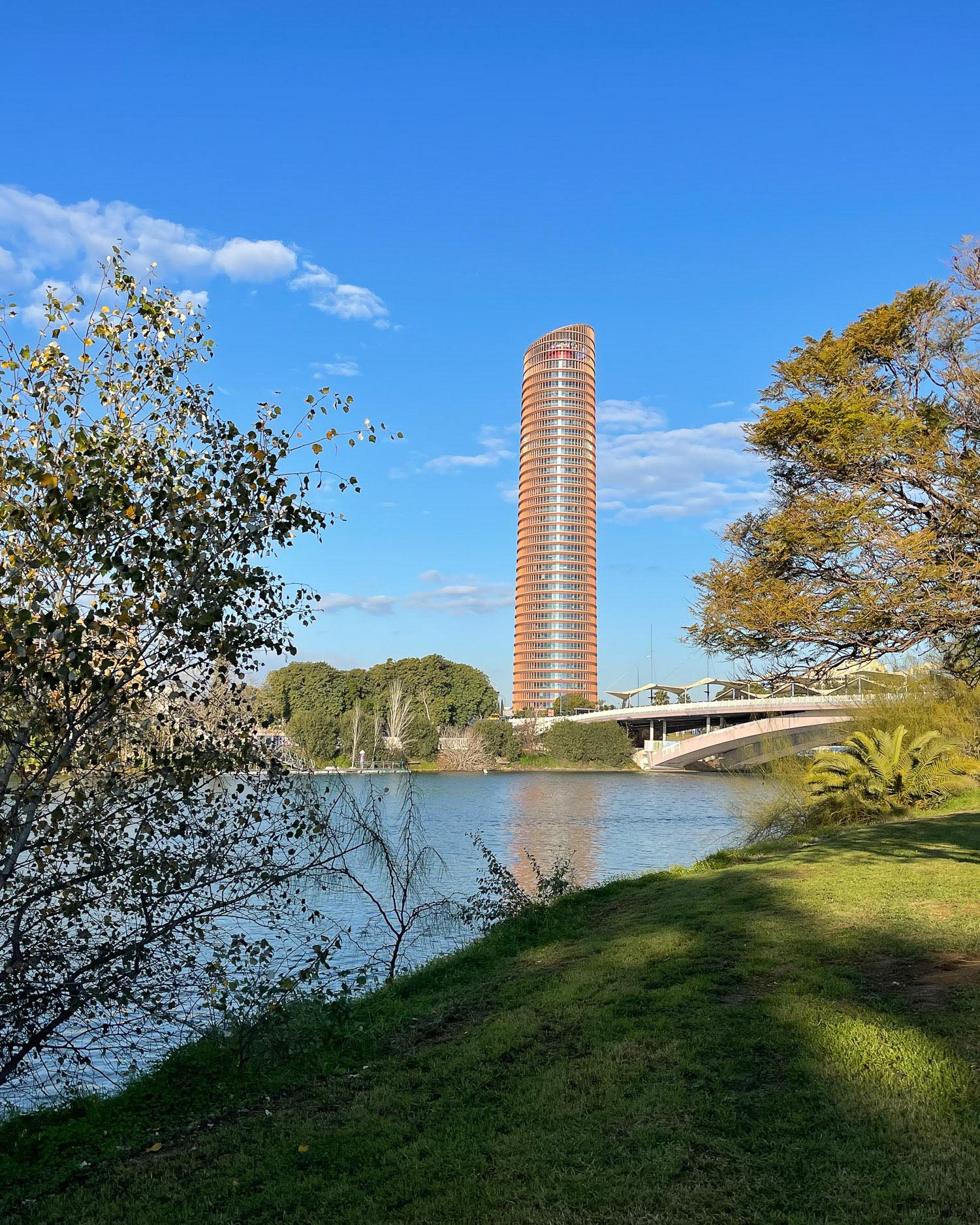
Tours to see more of Seville
We found Seville to be an easily walkable city. While there are public buses and a metro, many of the key areas you’ll want to see have narrow or pedestrianised streets. This is one city where it’s better not to have a car to explore the main sites. You can easily find a taxi or bus for longer journeys if you need one.
However to familiarise yourself with the main Seville tourist attractions and neighbourhoods you may like to take a hop on hop off bus or cycle tour. We recommend booking something for the start of your trip, so you can later go back to the places that appeal to you most.
Hop on hop off bus tour in Seville
For a Seville sightseeing tour of the main neighbourhoods and tourist areas we recommend taking a hop on hop off bus tour. Buses run every 30 minutes and you can take the whole tour in 75 minutes or hop off to explore some of the locations in more depth.
The bus stops in 14 places and there are additional benefits such as a multi lingual audio guide on board and free entrance to some museums and monuments. Choose between a 24 hr or 48 hr ticket.
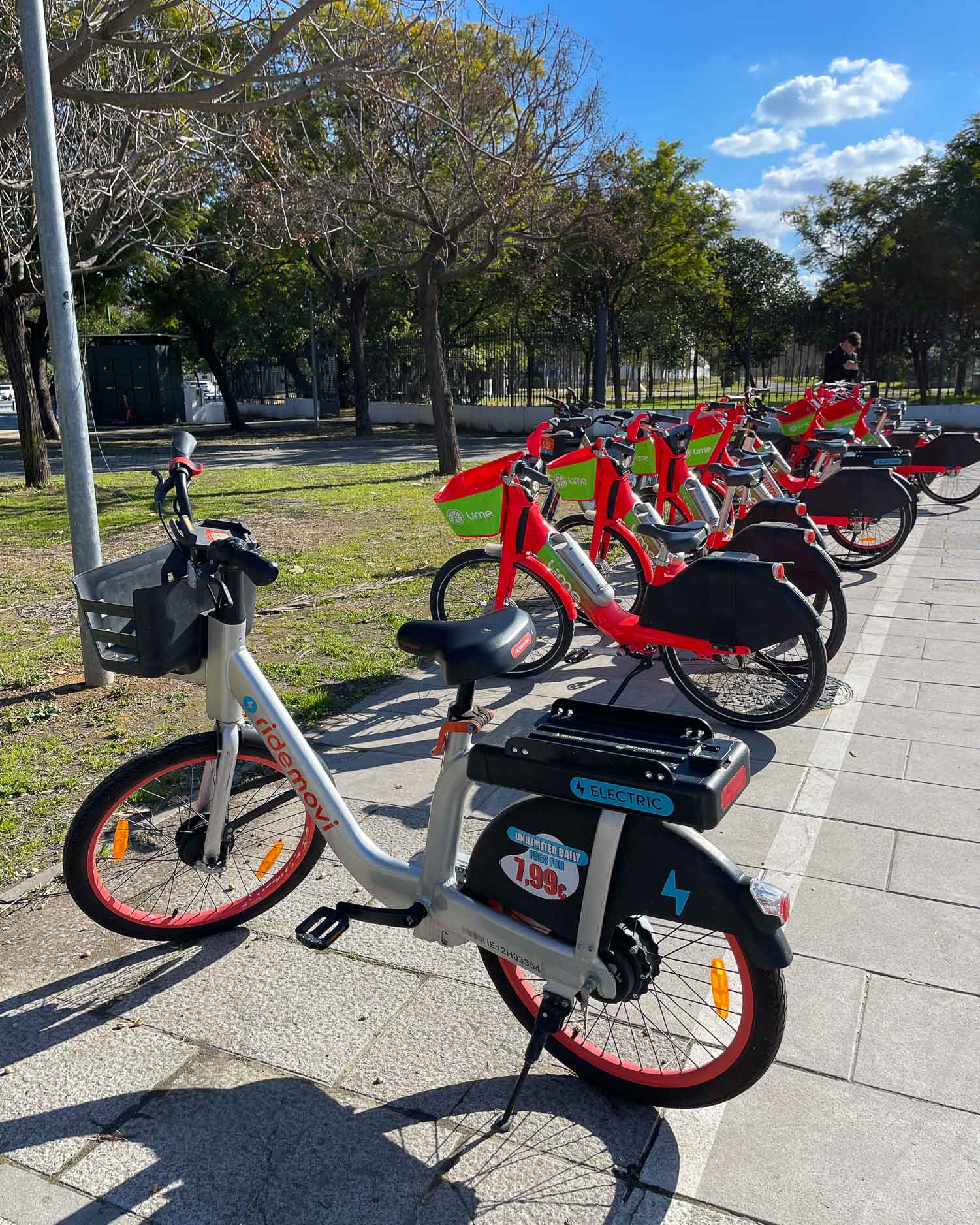
Cycling tour in Seville
If you want to stay active and see the main sites, a bike tour is a great option. Seville is a flat and bike friendly city, with numerous well marked bike trails. These days we prefer to use electric bikes where possible, as they take the sweat out of getting around, especially as Seville can get quite hot.
We recommend this 3 hour electric bike tour around Seville to see all the main sites, including those in the old quarter where buses can’t get to.
If you prefer to explore by bike on your own, you can use one of the public bike schemes like Lime or Ridemovi, downloading their app to pay for your bike hire.
Horse and Carriage Ride
You’ll see many horse drawn carriages around the old quarter of Seville, Plaza de Espana and Maria Luisa Park. Find the carriages in Plaza del Triunfo between Seville Cathedral and the Alcazar, where they gather waiting for a ride. The price is fixed, so you’ll pay the same whichever carriage you choose, just enquire in the square.
It seems a charming and relaxing way to see some of the sites. However we have read adverse comments online about the treatment of the horses, especially on the hot days of summer. For this reason, we avoid activities or attractions involving animals, but you can take a look at the horses and online reviews to make your own decision.
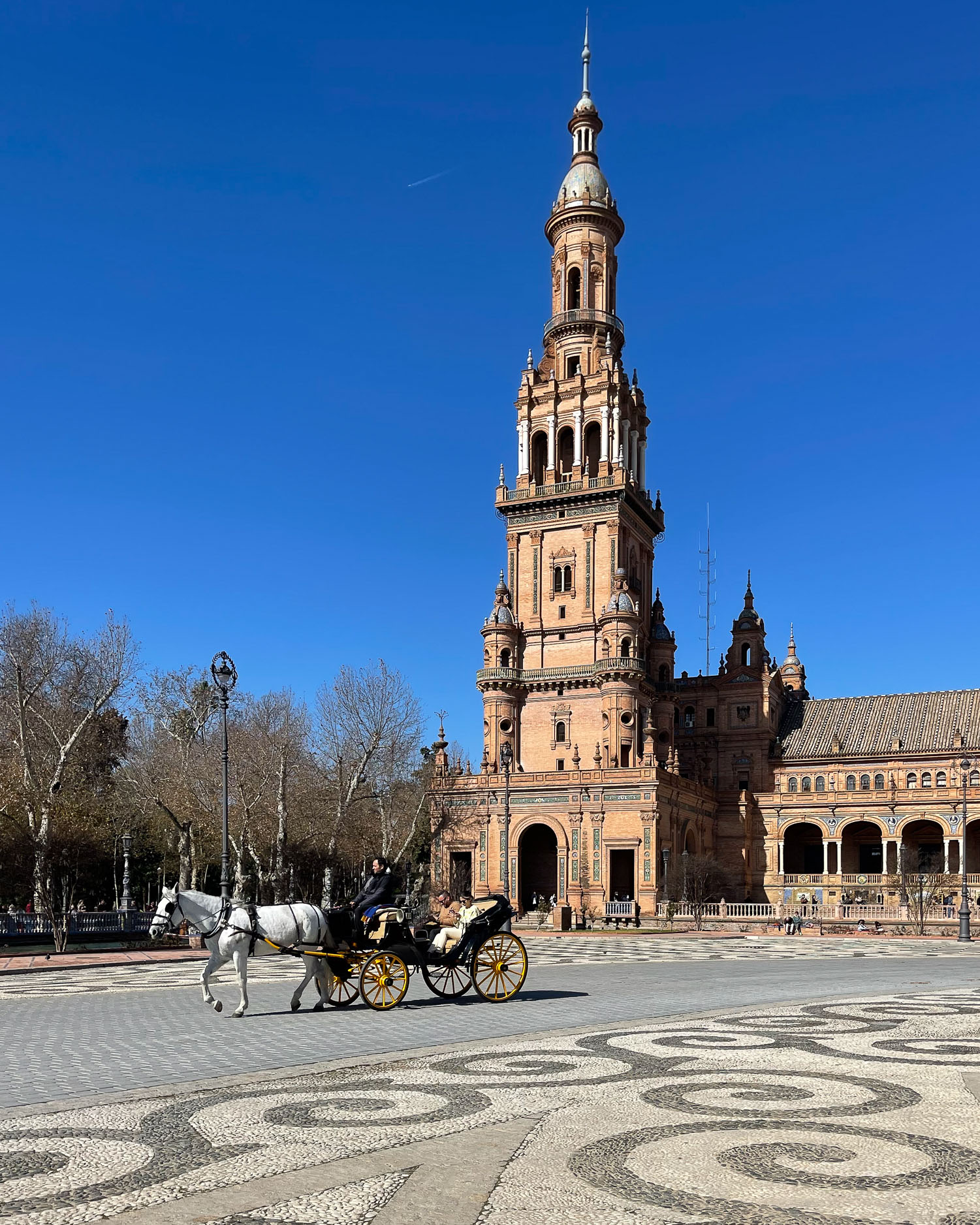
More cultural sites in Seville
If you have time after visiting the key tourist sites like Seville Cathedral and the Alcazar, here are a few more cultural places to visit in Seville that are worth seeking out.
15. Hospital de los Venerables
A short walk from the Alcazar and Cathedral is the Hospital de los Venerables, built in 17th century Baroque style as a retirement home for priests. The Hospital opens into a traditional internal courtyard, with orange trees, sunken fountain and shaded cloister decorated with Andalusian painted tiles.
From the courtyard a door leads to the chapel, which is beautifully painted in delicate pastel frescoes from the 18th century. Beyond lies the sacristy, which also features decorative tiling and a richly painted ceiling.
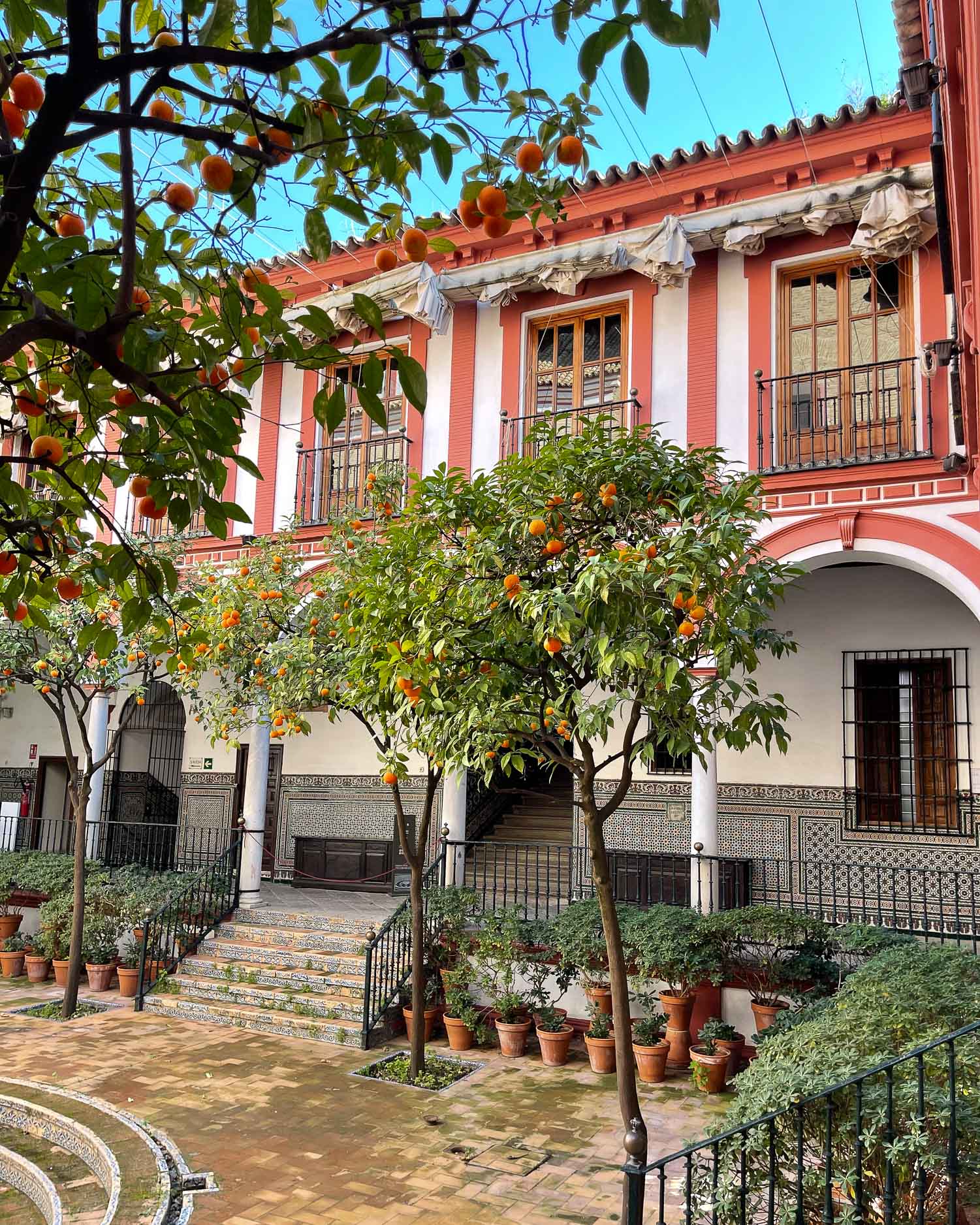
Also within the same building is the Velazquez centre, an art exhibition that features the work of Seville born Diego Velazquez and some of his contemporaries. The collection includes a beautifully informal depiction of the 3rd century Christian martyr Saint Rufina who sold pottery in Triana.
A tiled stairway with ornate decorative ceiling leads to a first floor exhibition of contemporary artworks from the collection of Fundación Focus, a cultural foundation.
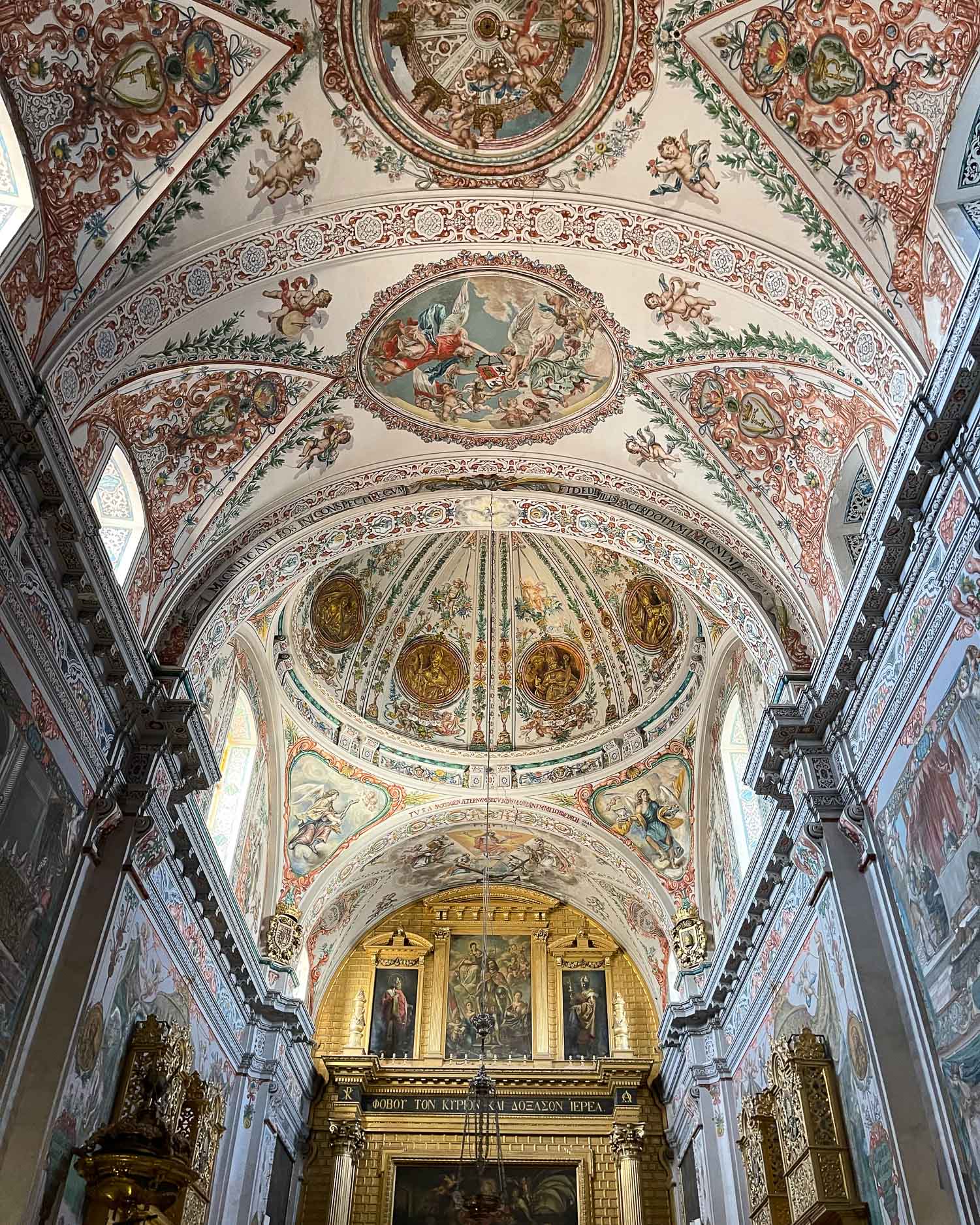
16. Casa de Salinas
Just a short walk further brings you to Casa de Salinas, a 16th century private palace that is open at certain times to the public. As the family still live in the Casa, entrance is only via a guided tour that takes place every 30 minutes. It’s best to consult the website for opening times which vary with the season.
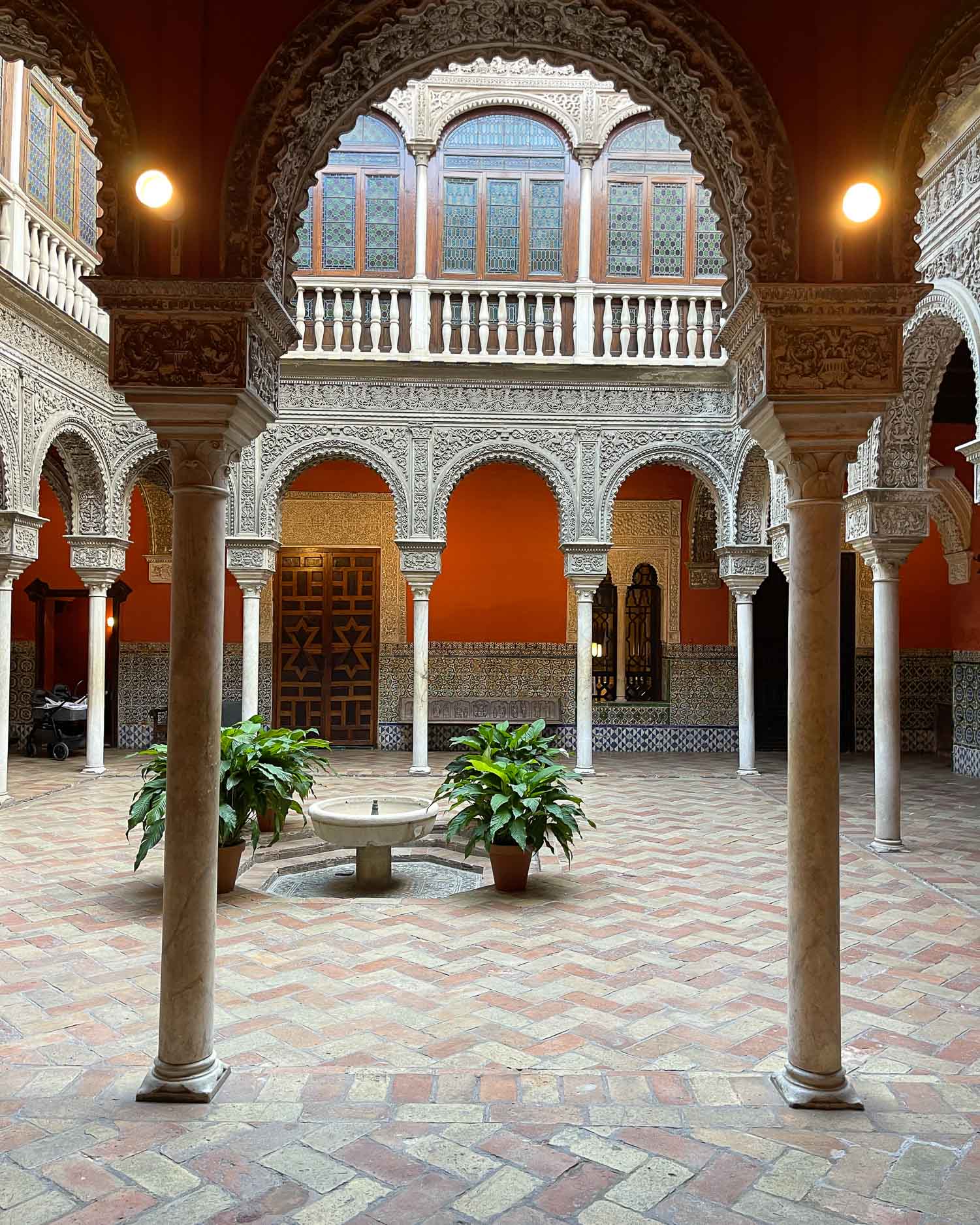
The house was built at the time when Seville was at the height of its power, with wealth built on a monopoly of trade from Spain’s conquests in the “New World”. The Salinas family who currently own the property acquired it in the early 20th century. They restored it to the original splendour while adding some modern conveniences and a collection of Roman mosaics and artefacts from nearby Italica.
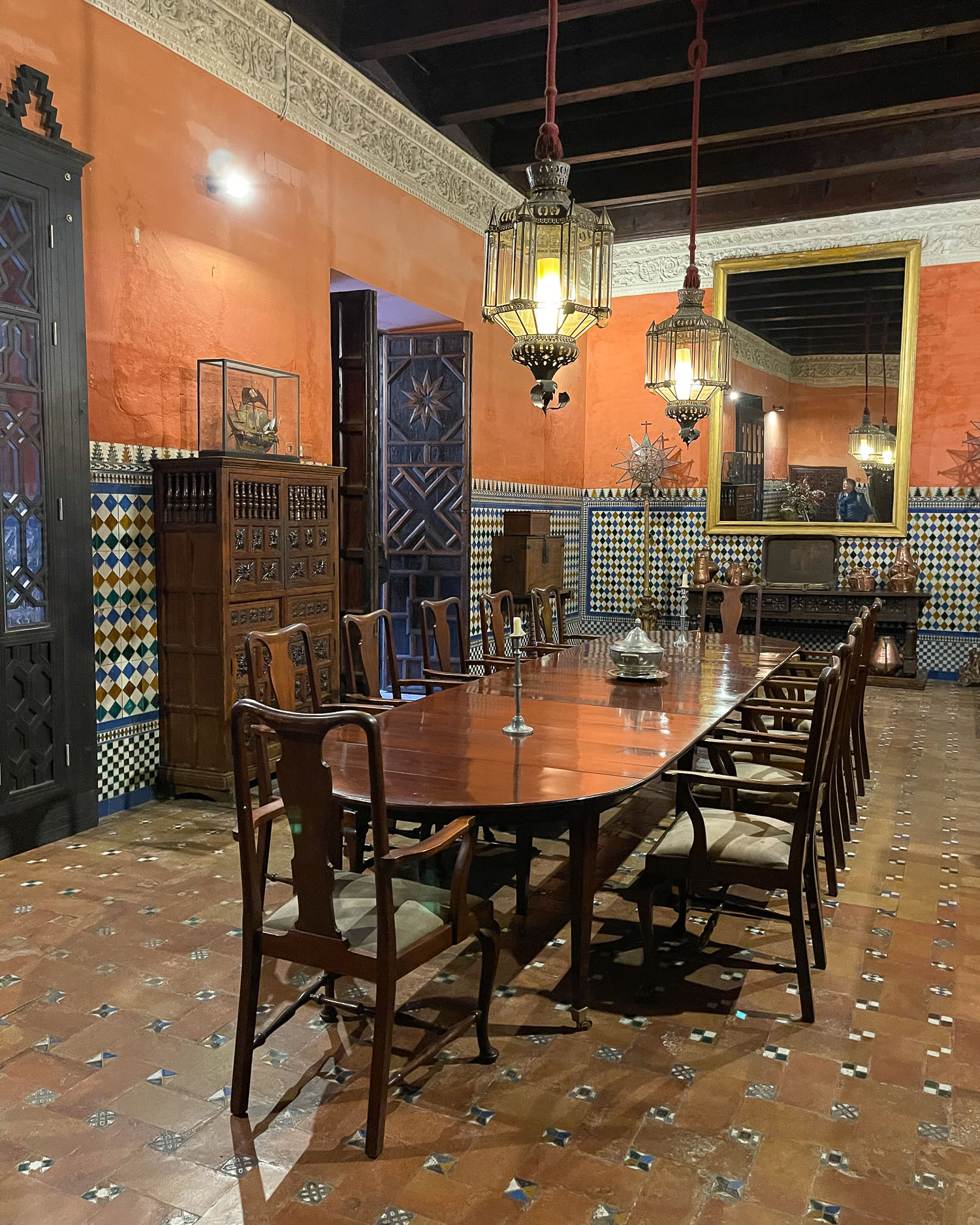
The ground floor that is visited during the tour is mainly used by the family in the summer months, while the warmer upper floor is where they reside during the winter. Off the central patio is a summer dining room with a huge dining table to accommodate the whole extended family, while a sitting room has an original coffered and painted wood ceiling.
Roman mosaics at Casa de Salinas
Original Moorish style tiles are combined with ornate plasterwork and rich red walls that are the traditional colour in Seville. Walking through to a second courtyard brings you to a collection of Roman artefacts, including a Roman mosaic floor that was brought from Italica, at a time when this was thought to be the best way to preserve such remains.
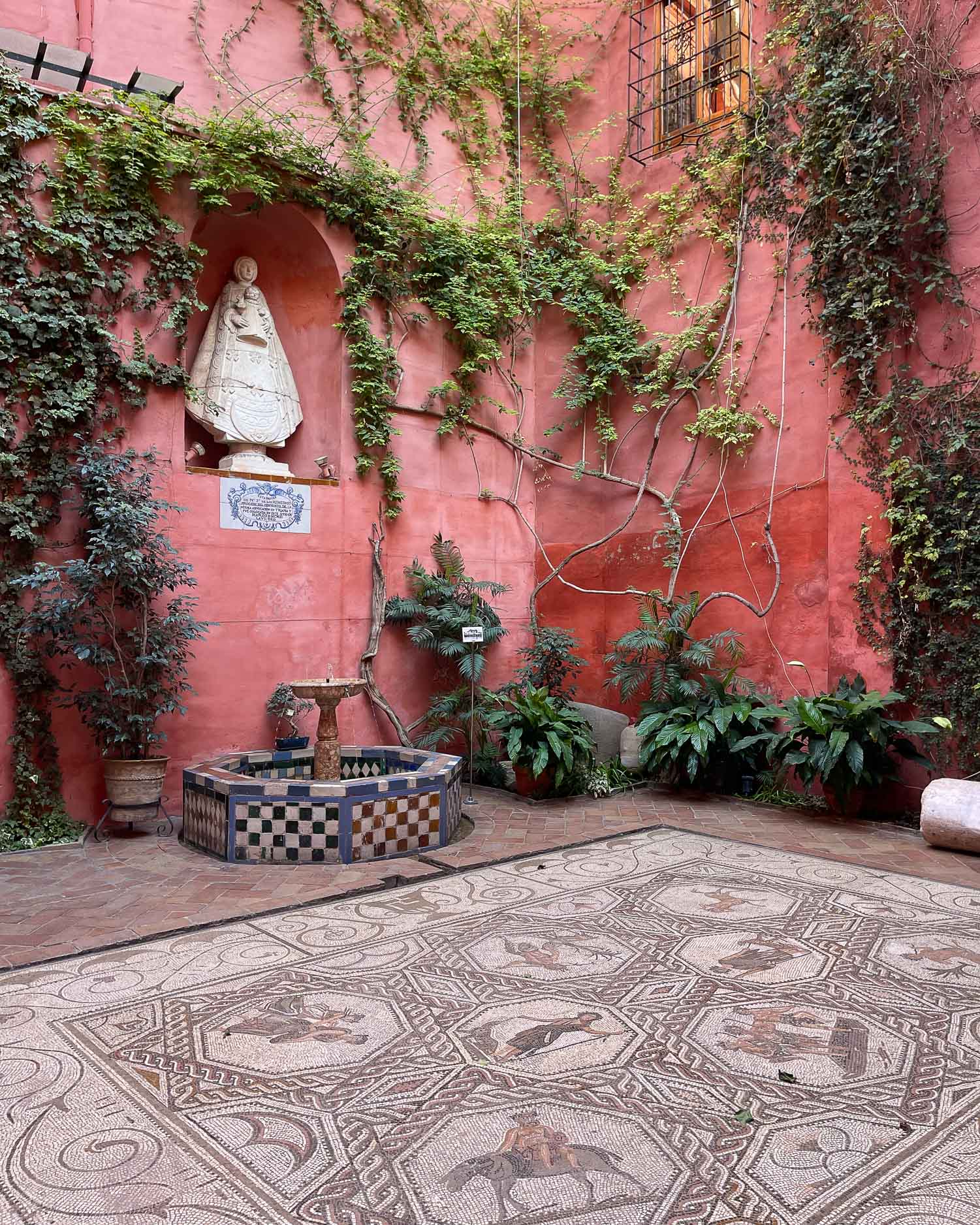
Although the 25 minute tour of Casa de Salinas is short compared to some other mansions in Seville, it feels charming due to still being lived in by the owning family.
17. Palacio de Lebrija
Located close to Las Setas, Palacio de Lebrija is a 16th century mansion that was bought in 1901 and restored by the Countess de Lebrija. While the structure and much of the decoration date back to the 16th century, the Palace was embellished with many other architectural items.
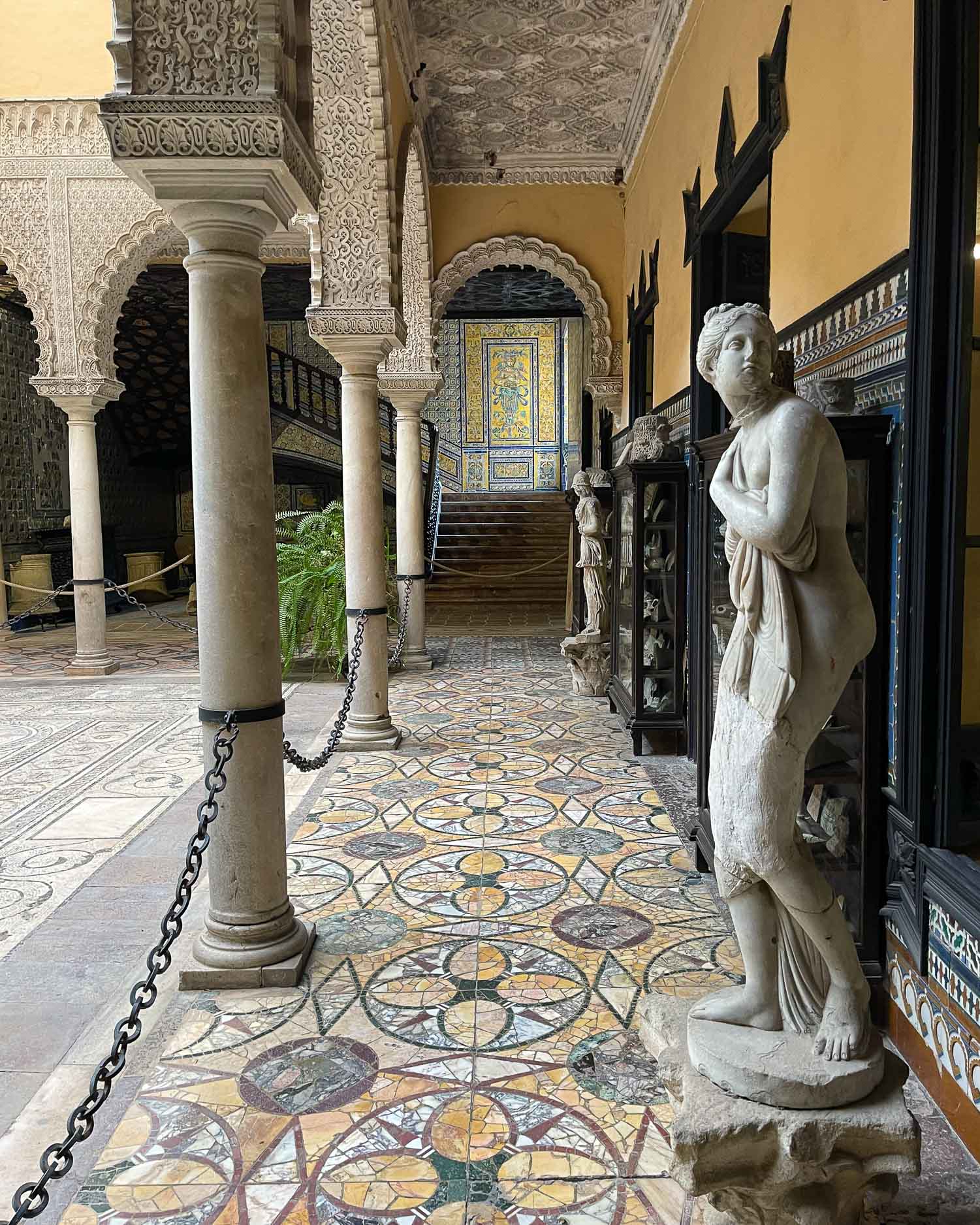
Antique tiles were bought from a convent being demolished and a wooden carved ceiling from another Palacio in Seville. Most notable are the numerous Roman mosaics that are used on many of the rooms on the ground floor, brought from the Roman remains at Italica.

Stay at Hotel Boutique La Prada del Marques in Seville
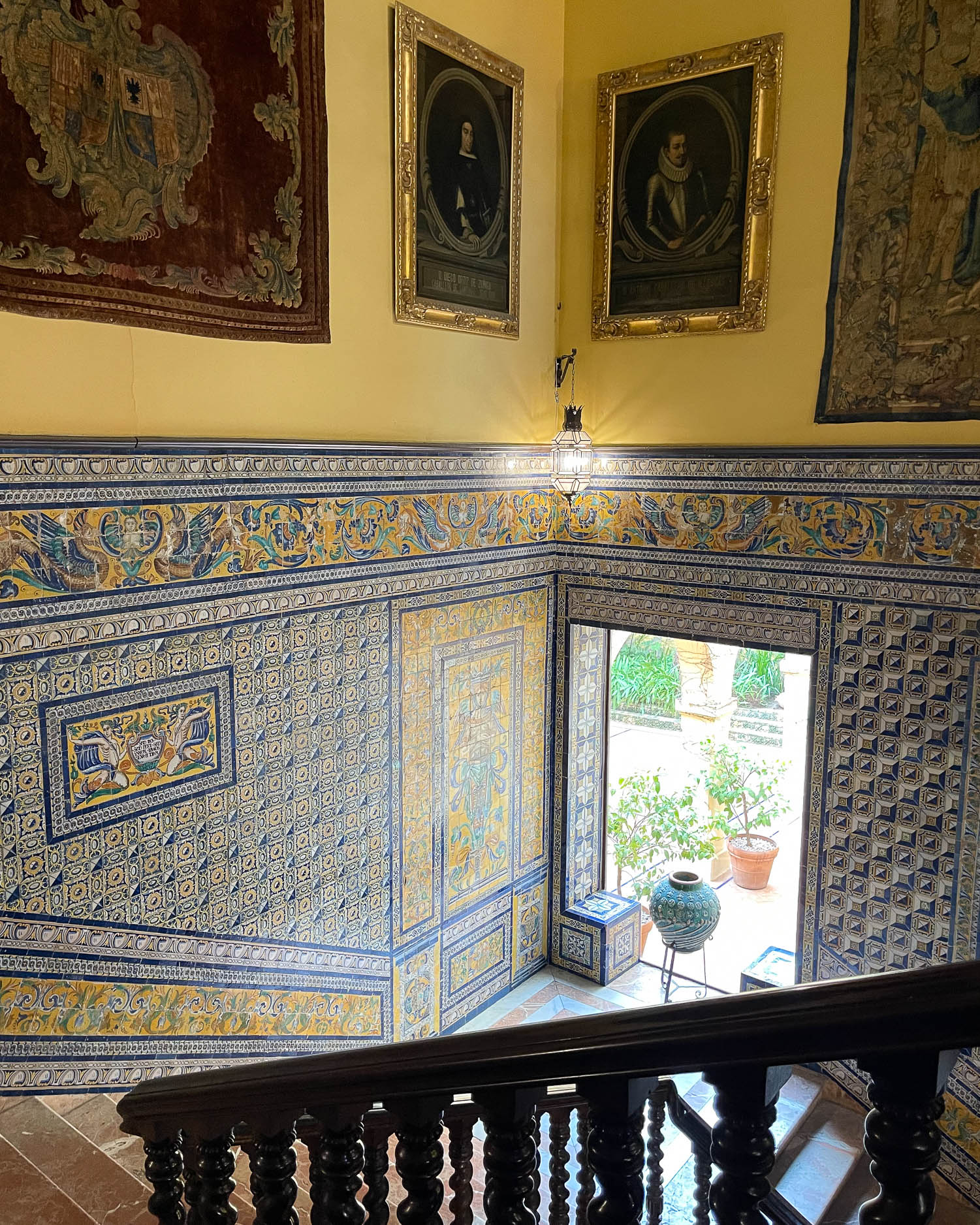
The Countess Regla Manjón was a cultured woman with an interest in archaeology and a member of several artistic academies and institution. After the death of her husband, she bought the house and indulged her passion for collecting furniture, artworks and classical sculptures that could be housed at Palacio de Lebrija.
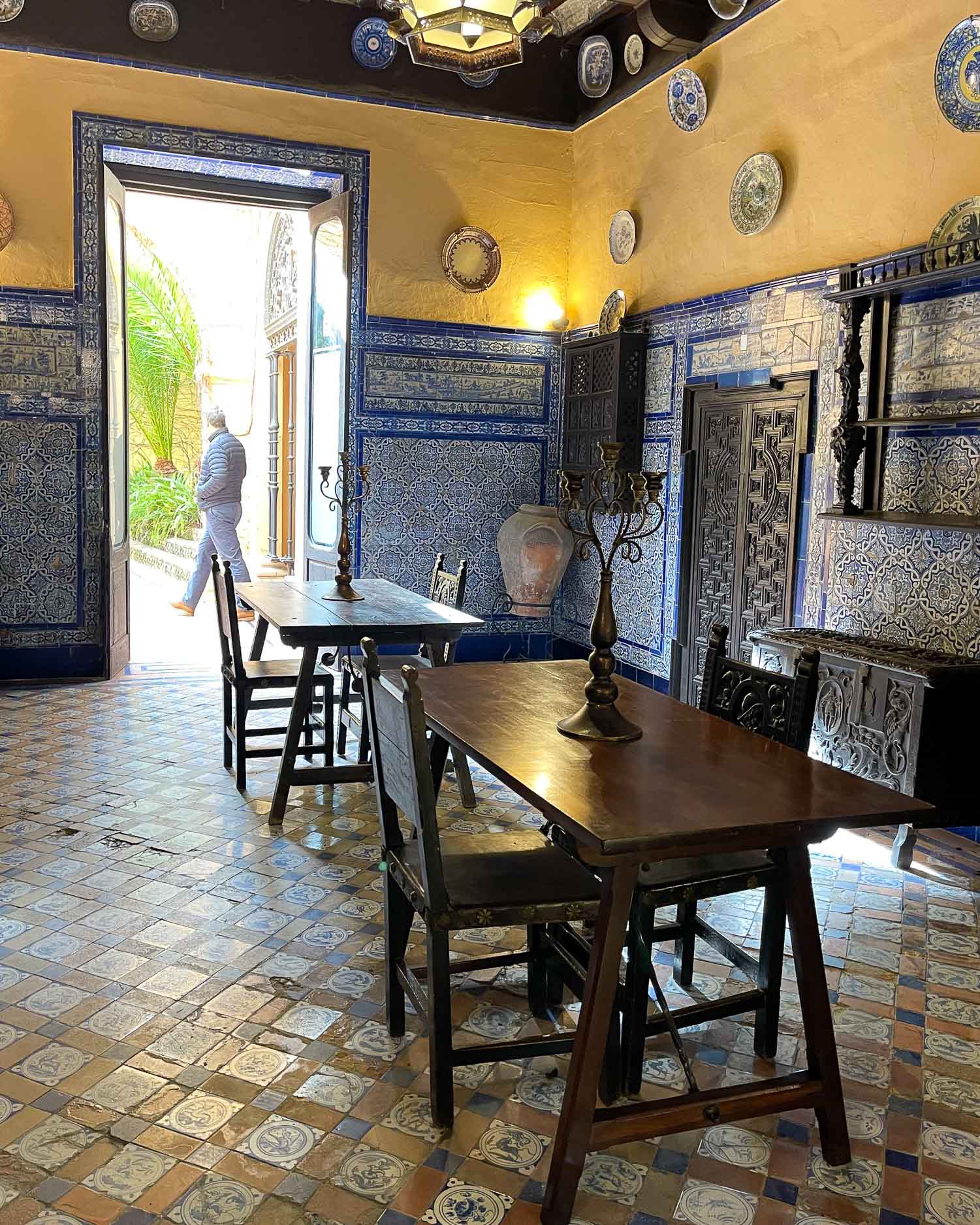
Tour of the upper floor
Visitors are free to wander the ground floors, but the upper floor can only be visited as part of a guided tour, included in the price of your ticket. The upper floor was where the family lived in the winter and is more cosy, with rugs, antique books and a collection of Moroccan antiques.
Photos are allowed on the ground floor but not on the upper floor. There are a couple of open courtyards, but as this is a townhouse there are no extensive gardens. We enjoyed seeing the wealth of antiques collected in the house and especially the magnificent Roman mosaics.
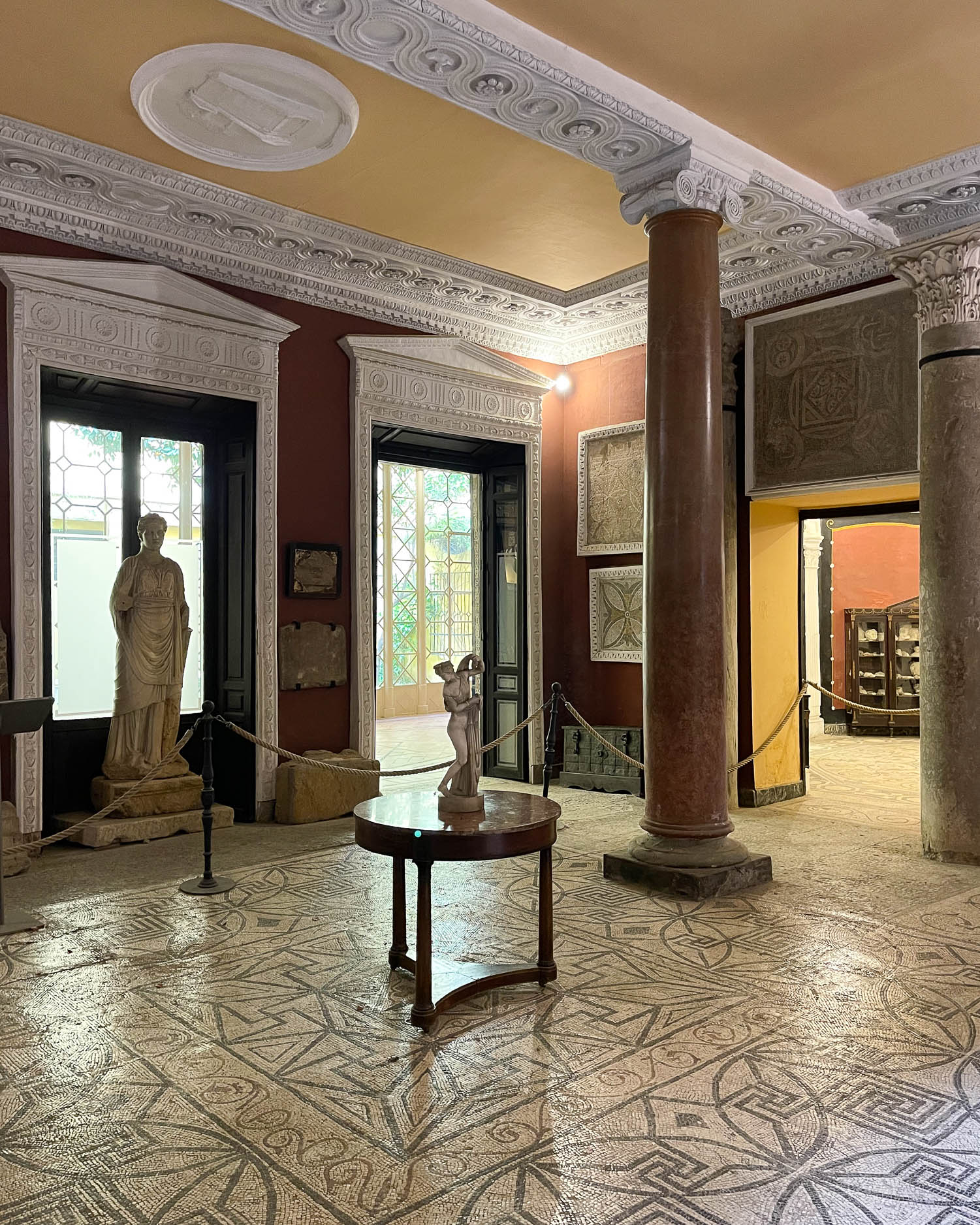
Palacio de Lebrija is close to the Casa de Memoria where we attended an evening Flamenco show and also Las Setas, so you might want to combine these other attractions with your visit.
18. Casa de Pilatos
Casa de Pilatos is owned by the Dukes of Medinaceli and was my favourite of the historic mansions that we visited in Seville, as the interiors and gardens are so beautiful. If you don’t manage to visit the Alcazar, this is like a miniature version but with a nod to the Italian Renaissance.
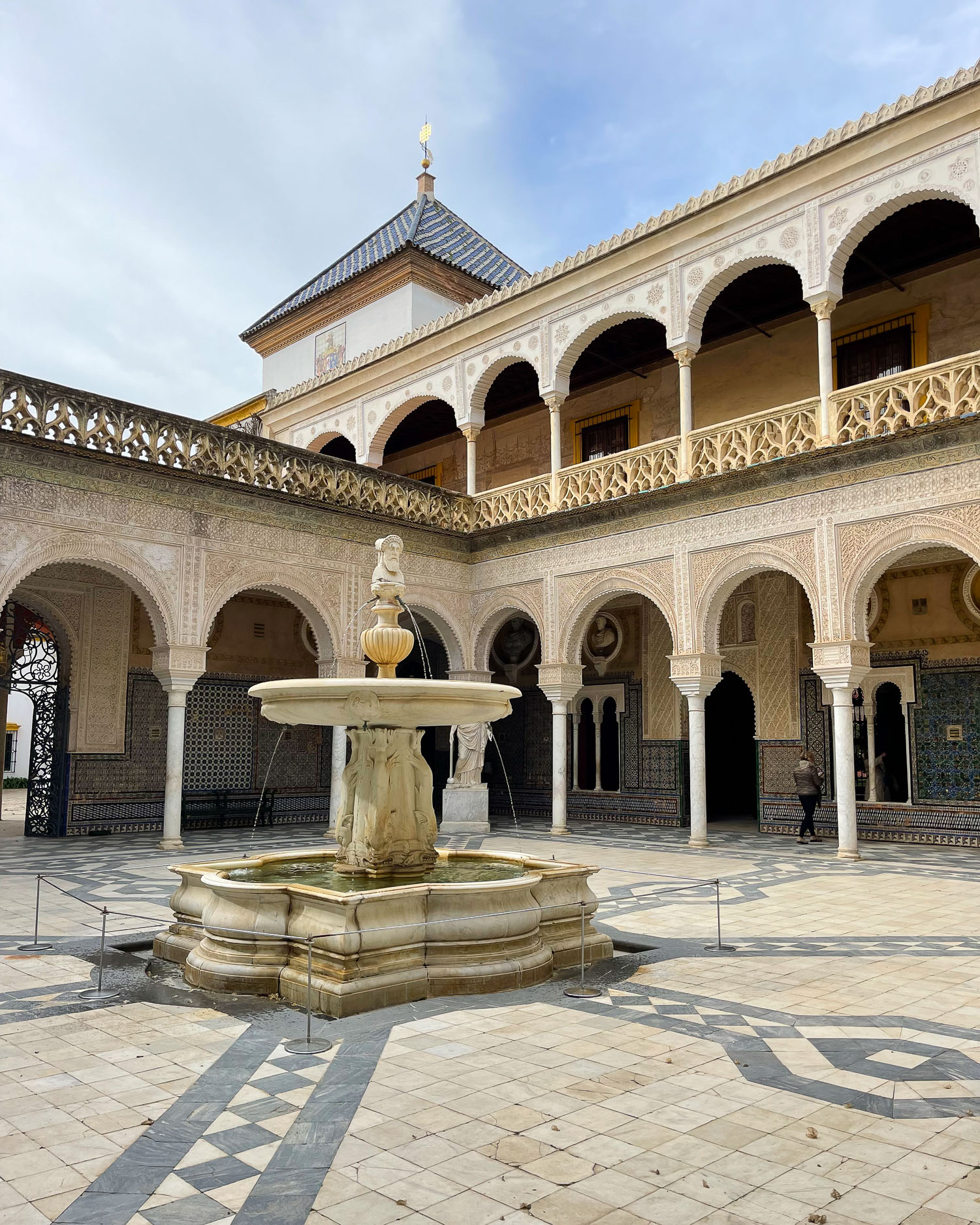
Built in the 15th century, the mansion took on its Italianate theme when the 1st Marquess of Tarifa took a pilgrimage to Jerusalem in 1518, travelling through Italy and bringing back a taste for Renaissance art and architecture. He became a collector of Roman statues and artefacts, many of which are on display in the formal gardens and in open rooms designed to display the Roman busts.
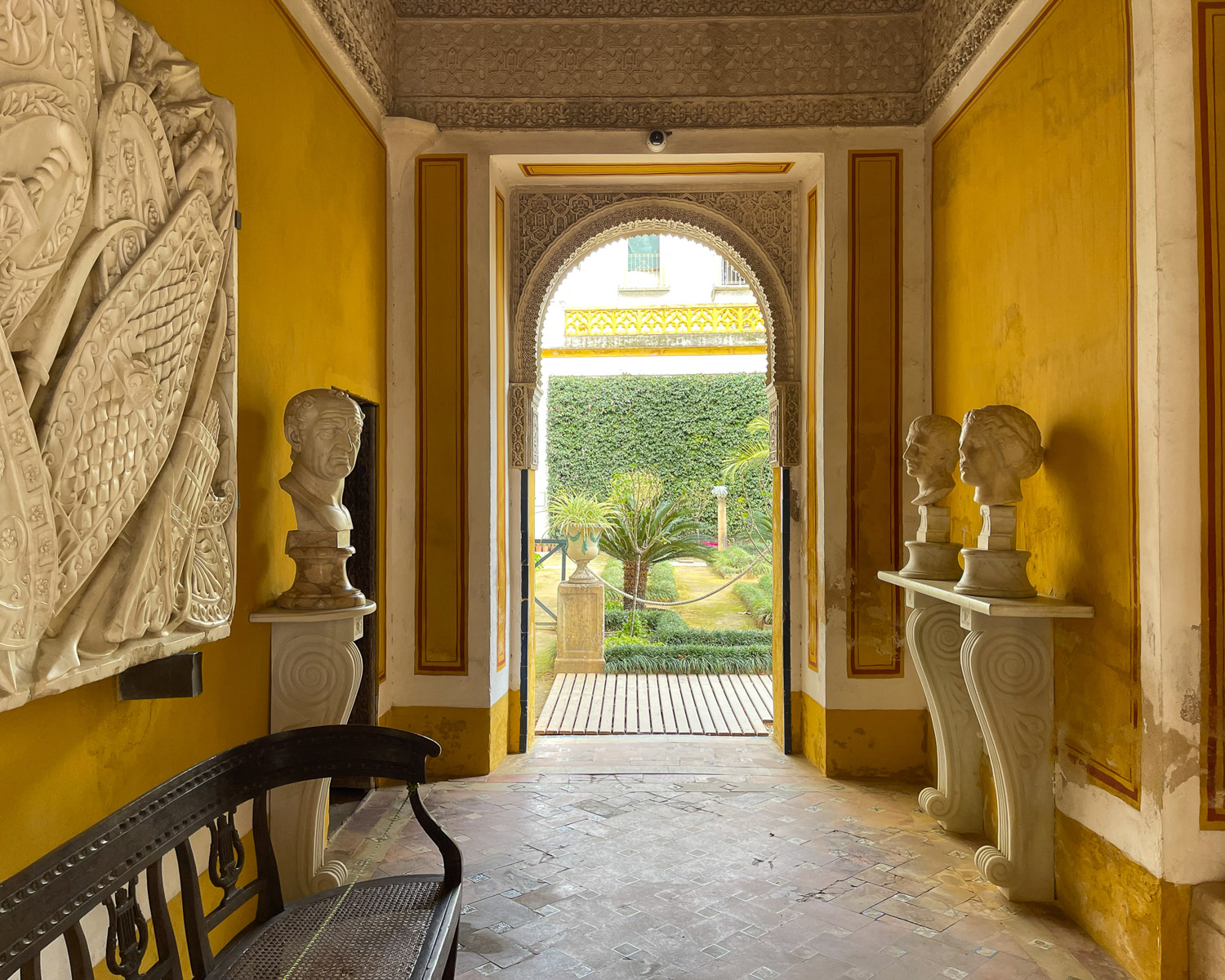
Gardens of Casa de Pilates
The Gardens of Casa de Pilates are especially beautiful, with green hedges and topiary framing the views of an Italianate style facade draped with fuchsia pink bougainvillea. The main courtyard of the Casa de Pilatos was also a film location for Laurence of Arabia.
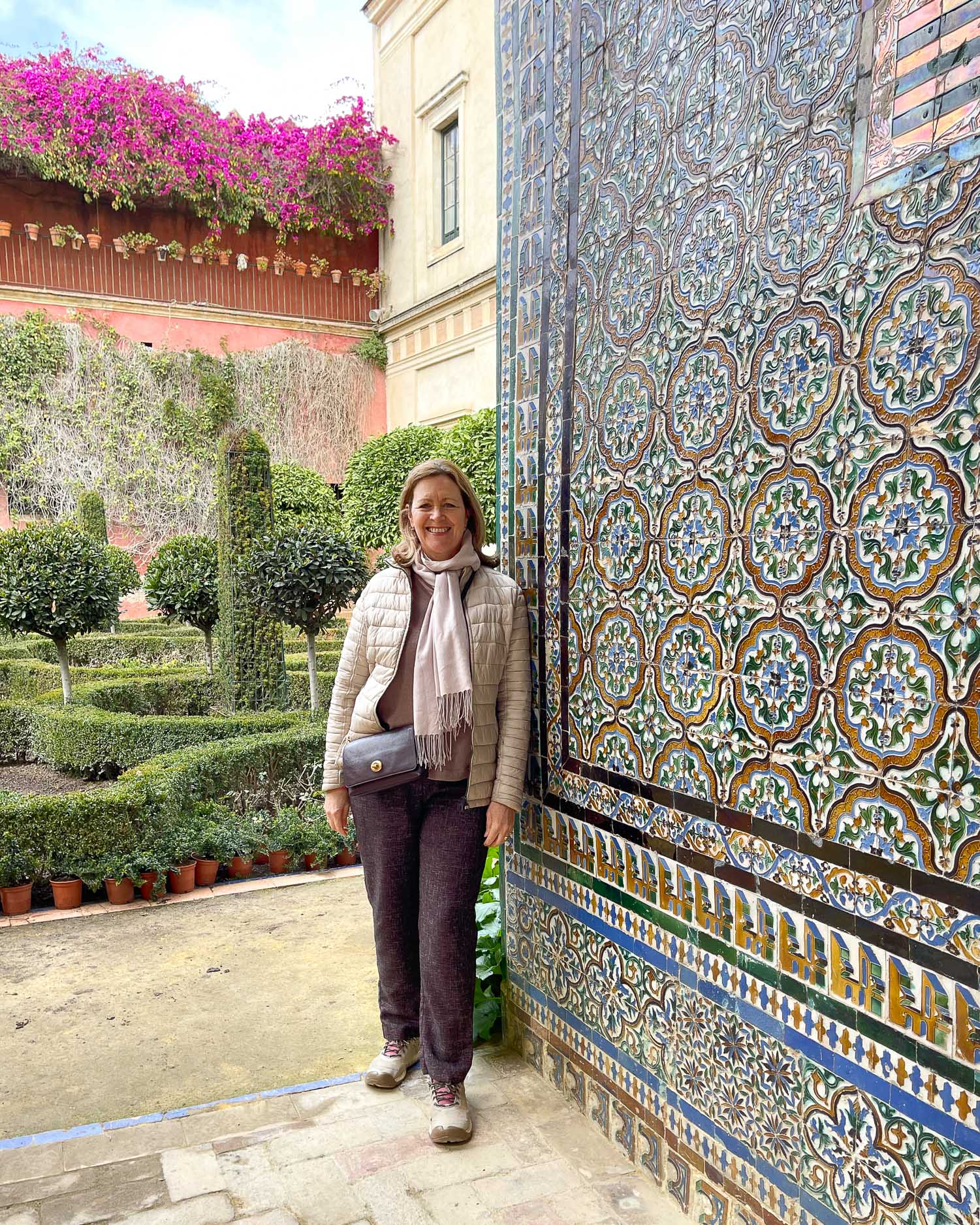
We had no problem buying tickets at the entrance but I suspect this is one of the more popular attractions in Seville, so in high season you may prefer to pre-book tickets with audioguide online in advance.
Top Tip: Across the road from the Casa de Pilatos is the Convent of Santa Maria de Jesus. In the mornings you can step inside the open arched doorway and find a glass window where the nuns will sell you biscuits and cakes that they have baked themselves. We tried some and they were delicious!
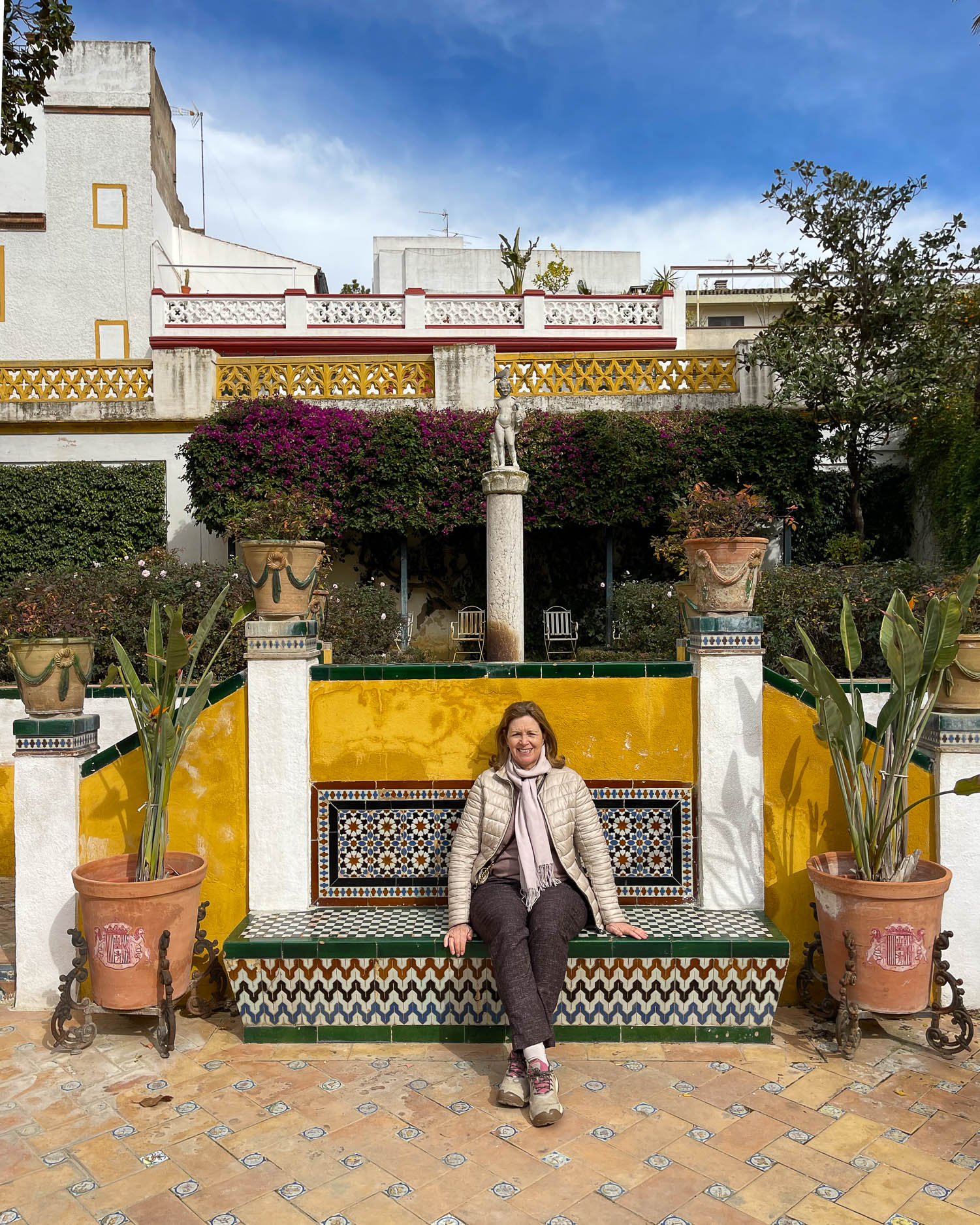
19. Palacio de las Dueñas
Just to complete the round up of gorgeous historic palacios in Seville, I’ll mention Palacio de las Dueñas which we didn’t have time to visit. It’s located in La Macarena district of Seville, not far from Las Setas so we recommend a visit if in the neighbourhood. The 16th century mansion owned by the Dukes of Alba is furnished with antiques and known for its beautiful courtyards and gardens.
20. Wander around trendy La Macarena
Head north from Seville Cathedral until you reach Las Setas and before long you’ll be in La Macarena, the northern part of central Seville. A neighbourhood walk through the areas is one of the more unusual things to do in Seville if you want a more local flavour.
Despite being something of a hipster area, La Macarena has a long history, being settled in the 12th century as Seville expanded beyond its old city walls. A market has been held on Calle Feria, the neighbourhood’s main thoroughfare for centuries, currently taking the form of the weekly El Jueves (Thursday) Flea market.
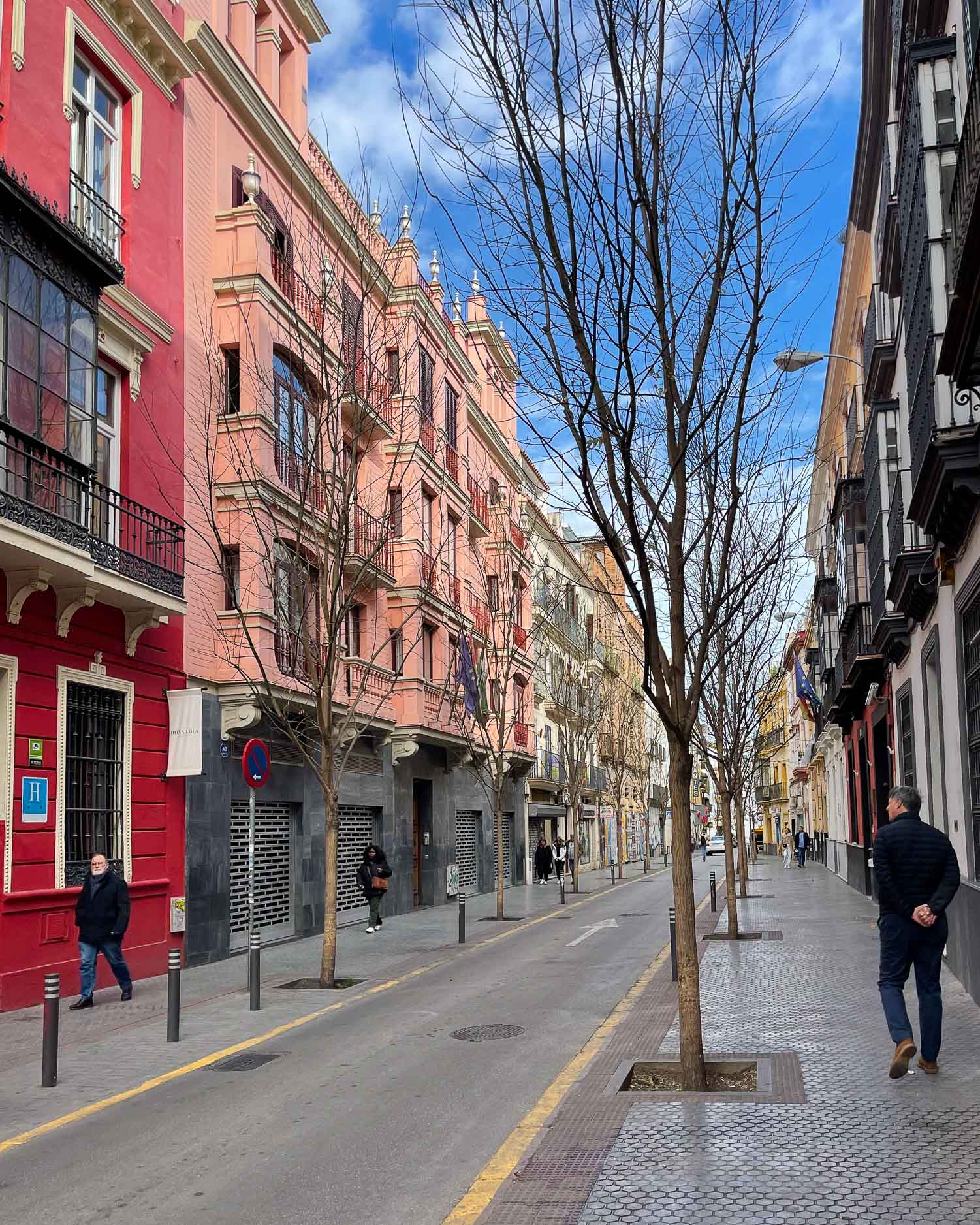
If you are not there on Thursdays or not interested in the contents of anyone’s attic, there’s also the Mercado de Feria, which is one of the oldest in Seville. Like all Spanish markets, most stalls will close after 2pm, so visit in the morning to see the best of the meat stalls, fresh fish hall and other stalls selling cakes and food to take away. Calle Feria and the surrounding streets are worth visiting in the evening when all the trendy bars and restaurants are open.
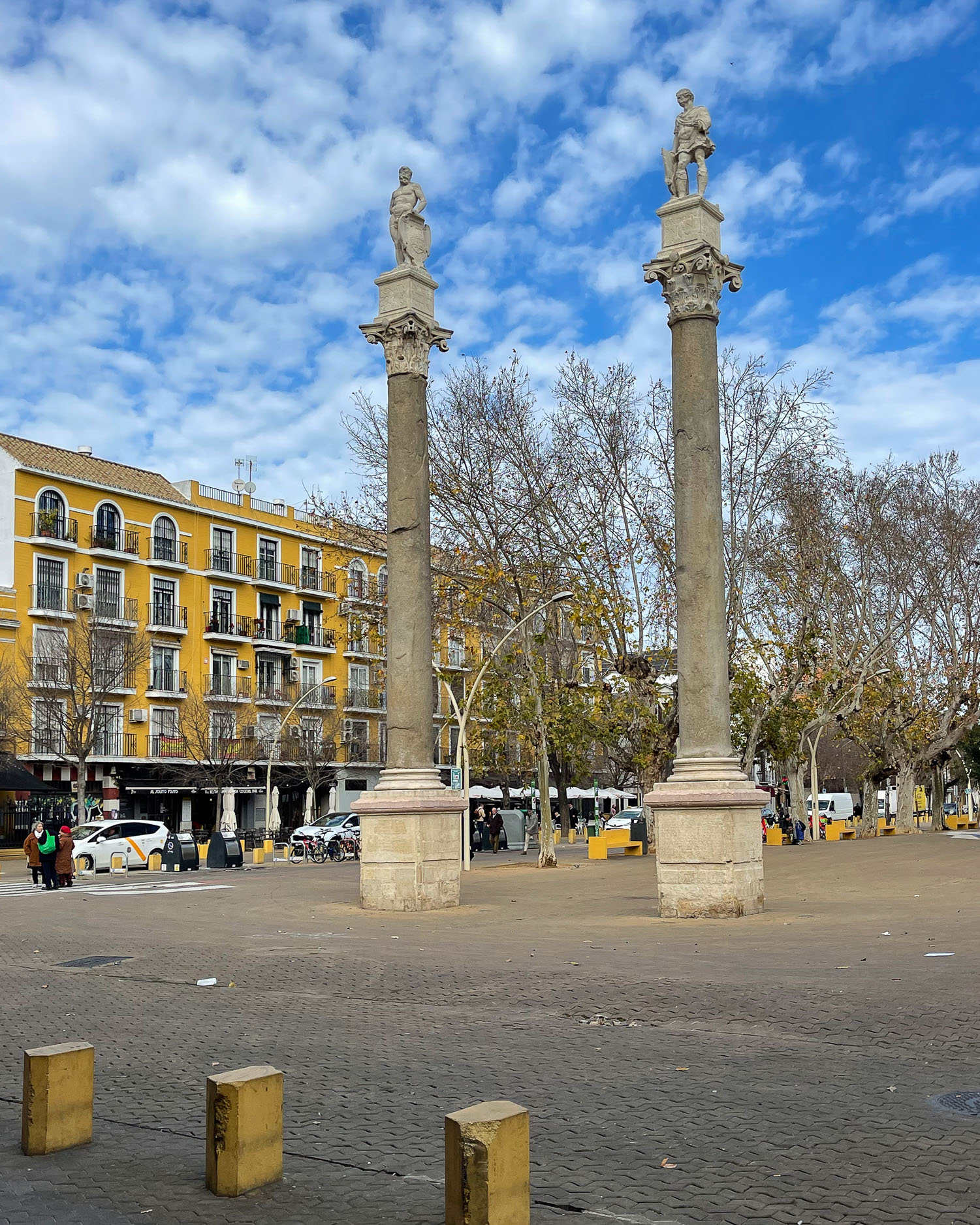
Alameda de Hercules
Another well known landmark is Alameda de Hercules, a tree lined boulevard that is marked by a pair of columns at either end. At the southern end the columns are topped with statues of the god Hercules and the Roman Emperor Julius Caesar, while those at the northern ends are topped with lions holding shields. Fountains sprout from the blue areas of paving on hot days for children to run through.
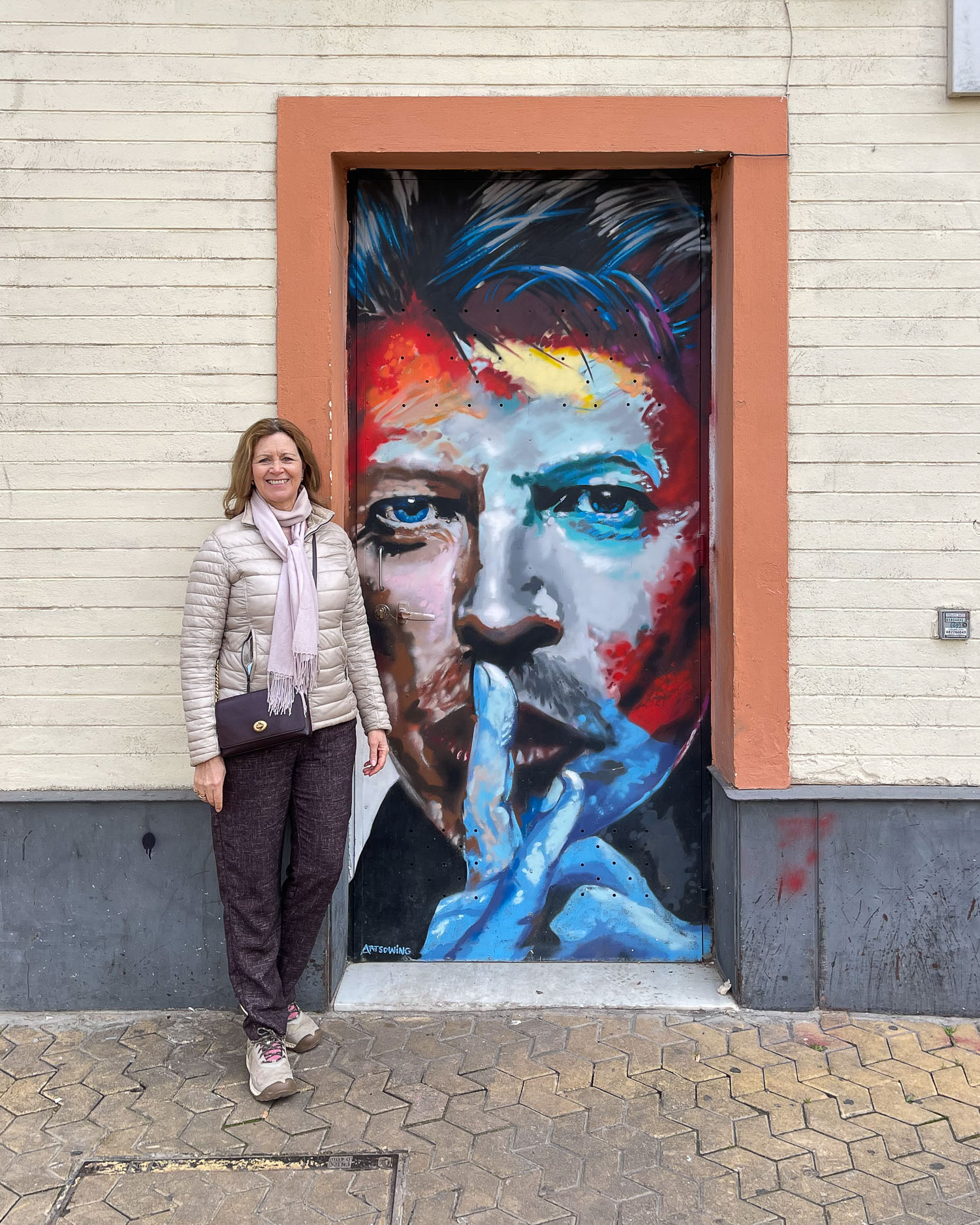
Since the plaza marks a branch of the River Guadalquivir that was later drained, the area was notorious in the past for flooding when the river got too high. The square is very lively in the evening, surrounded by bars and when we strolled through on a Saturday morning, a farmer’s market was in progress.
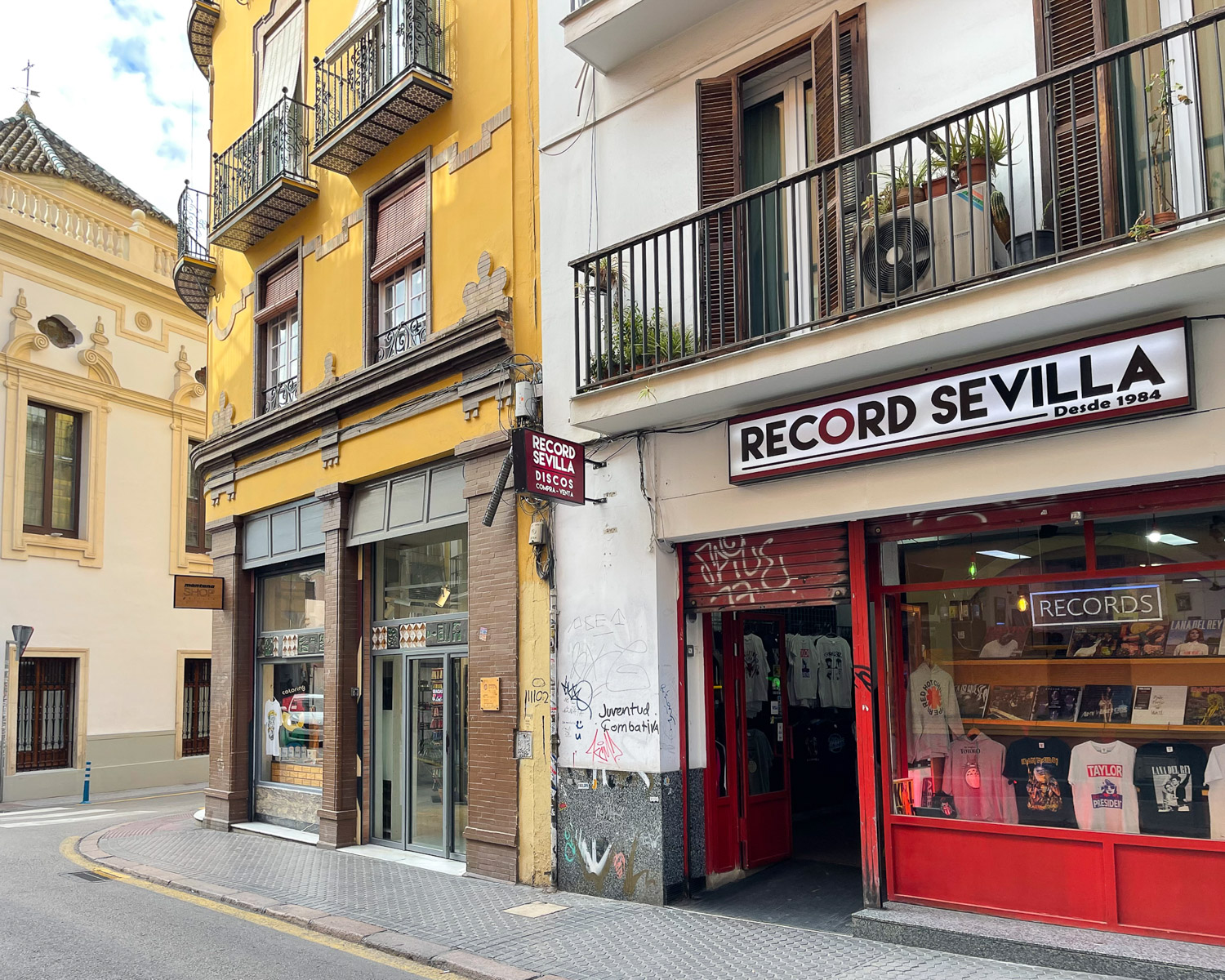
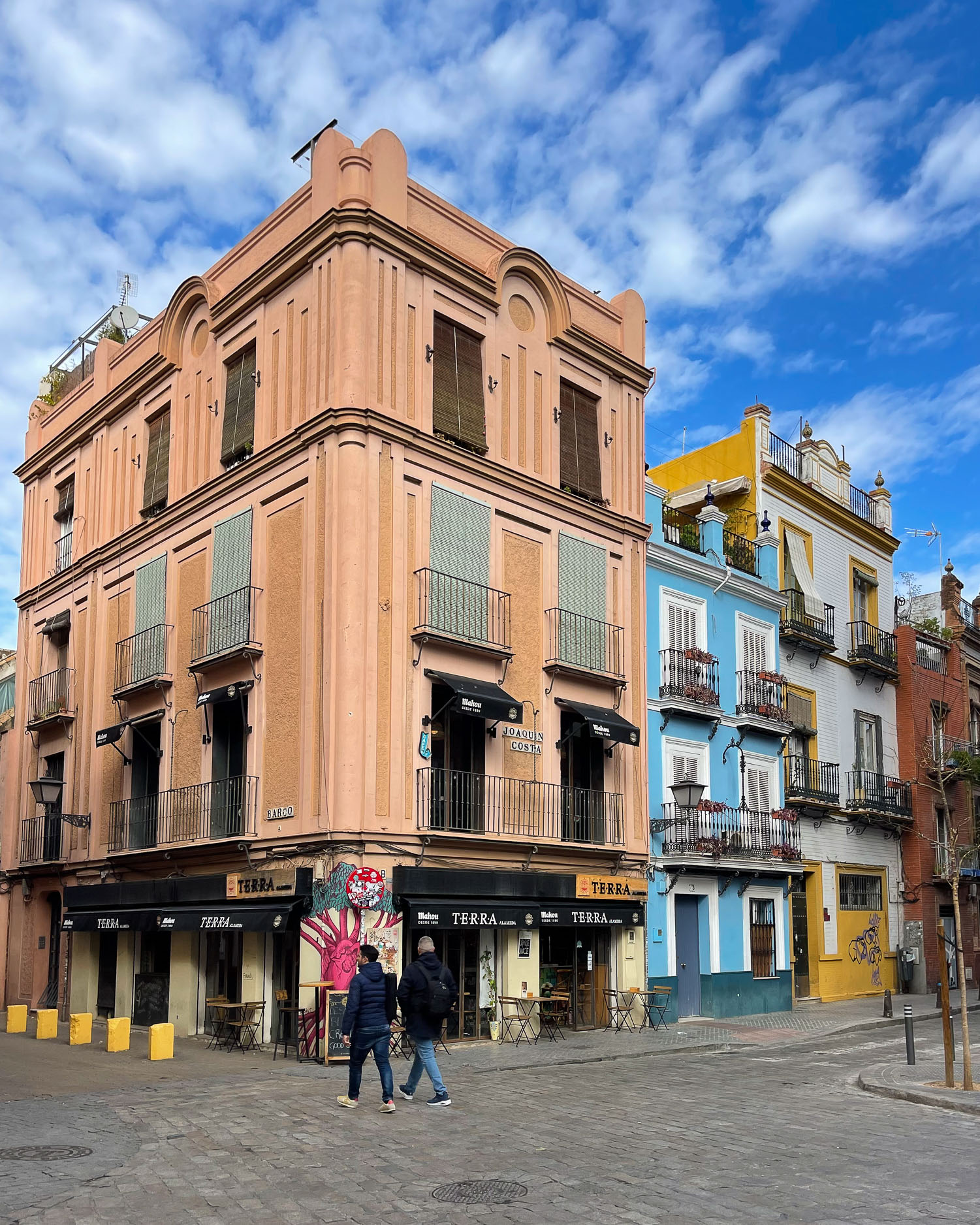
La Macarena has a rather boho vibe, the kind of places that you’ll spot vintage and vinyl record shops, with arty places selling crafts and jewellery. It’s also home to the most famous statue that is paraded during Semana Santa (Holy Week), of the weeping Virgen de la Esperanza Macarena, who is housed in the Basilica de la Macarena.
Also look out for the remains of the old city walls or Muralles that are be found on the northern edge of the neighbourhood, and the beautiful Palacio de las Dueñas, not far from Las Setas.
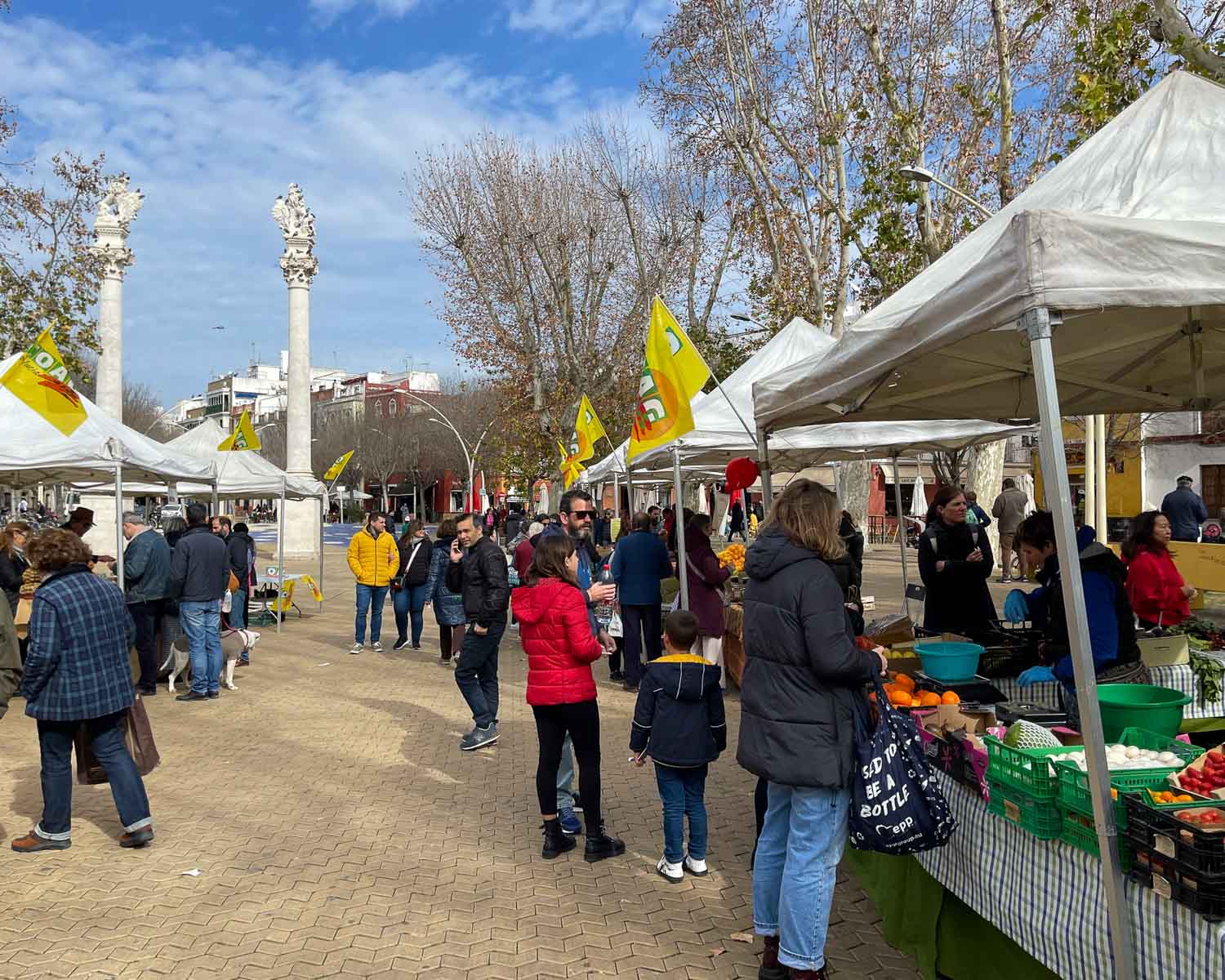
Best time to visit Seville
Seville has a fantastic range of attractions for those who want a mixture of sightseeing, great food and charming atmosphere. Personally I think the best time to visit is Winter, Spring or Autumn avoiding the hottest days of summer. We visited Seville in mid February and enjoyed bright sunny days and mild temperatures.
Winter in Seville
I think winter is a great time to visit Seville, especially if you enjoy culture, museums and sightseeing. Winters in the south of Spain are mild, with lows of 6-8 degrees C and highs of 16-18 decrees C. In December, the weeks of Advent offer a festive atmosphere with Christmas markets, lights and nativity scenes in all the churches.
January and February bring showers and cloudy days, but the trees are laden with oranges and there’s a good chance of blue skies and sunshine too. Most bars have outdoor seating with heaters, and if you are lucky you’ll be enjoying an al fresco lunch as we did in the February sunshine! However, do check that your accommodation has heating for the winter months.
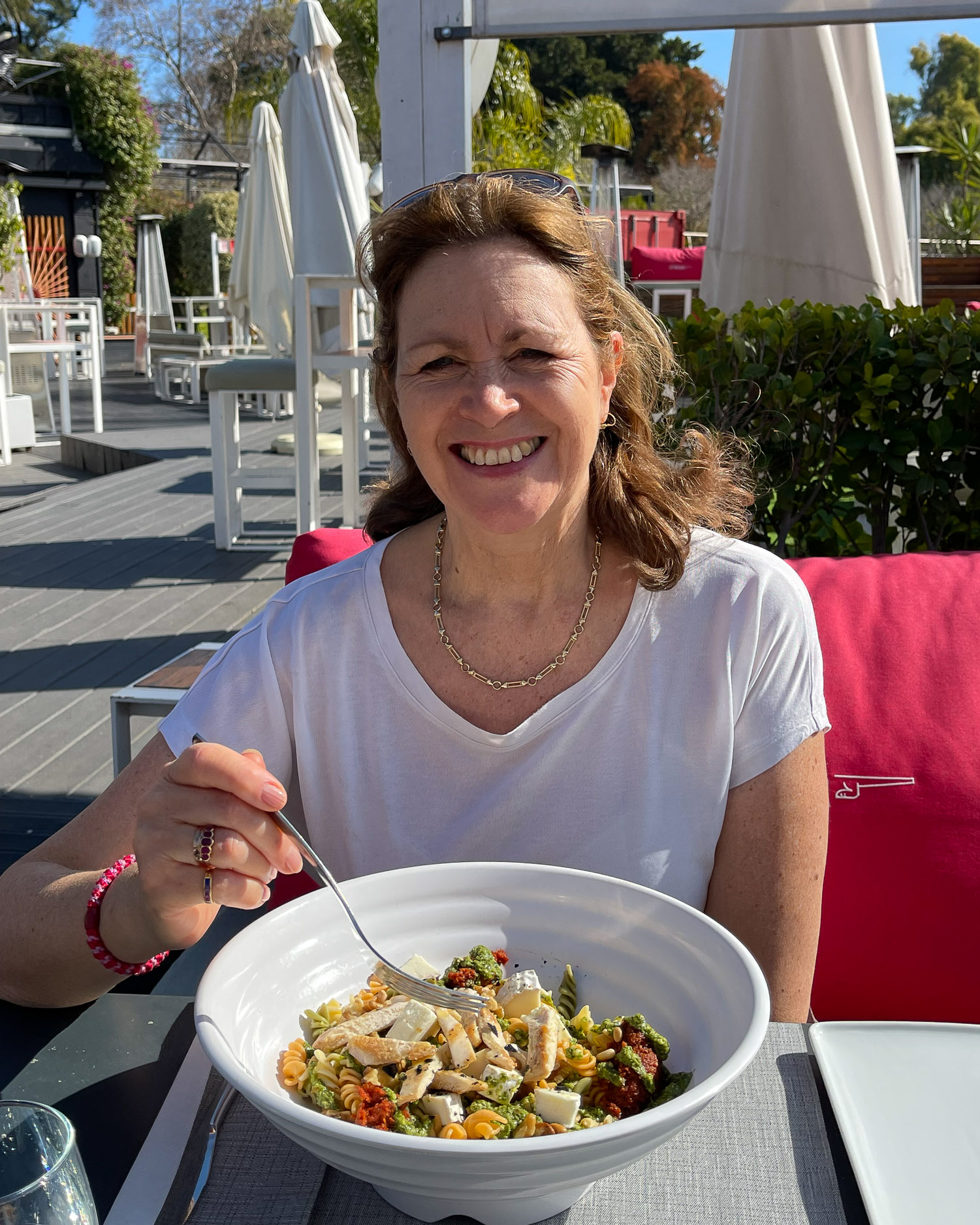
Spring in Seville
Spring is a delightful time to visit Seville and Andalusia, with temperature highs of 21-26 degrees C, warm weather and blue skies. However, you need to be aware of a couple of BIG events in Seville around this time.
Santa Semana – Holy week running up to Easter is the time of religious parades in Seville and throughout Spain. Each neighbourhood and church will parade their religious statue or icon around the streets creating a very special atmosphere. However, be aware that this is a very busy time in the city, so accommodation may be more expensive and the streets very crowded.
Feria de Abril – The April Fair takes place 2 weeks after Easter, whenever that falls, which is normally but not always in April. Large casetas or tents are set up on the Los Remedios fairground, which are used for eating, drinking and socialising by different groups and associations.
There’s also a funfair, bullfights, parades of carriages and horses, while all the locals dress up in their traditional flamenco style costumes. It’s undoubtedly a huge spectacle, but accommodation is more expensive and the city very crowded, so unless you are coming specifically to see the fair, I’d probably visit at another time.
Summer in Seville
Summer temperatures in Seville rise to a baking 35 degrees C or higher. Many locals flee the city in July and August for the welcome breeze of the coast, which is 1 hour away. Even in June and September, temperatures can reach low 30s C, so be aware of this if you visit, taking your time to get around and enjoying a few refreshment stops.
You’ll probably want to follow the Spanish customs of sightseeing earlier in the morning, taking an extended lunch or siesta around 2pm and eating at 9-10pm when things cool down. Due to the heat, summer is not the ideal time for visiting Seville.
Autumn in Seville
The autumn months of October and November offer warm sunny weather and highs of 20-26 degrees C. You may also have to deal with the odd day of rain or cloud, but in general it’s a great time to visit. Seville is an excellent city break destination in autumn, to escape the chills of Northern Europe or America and use as a base for touring Andalusia.
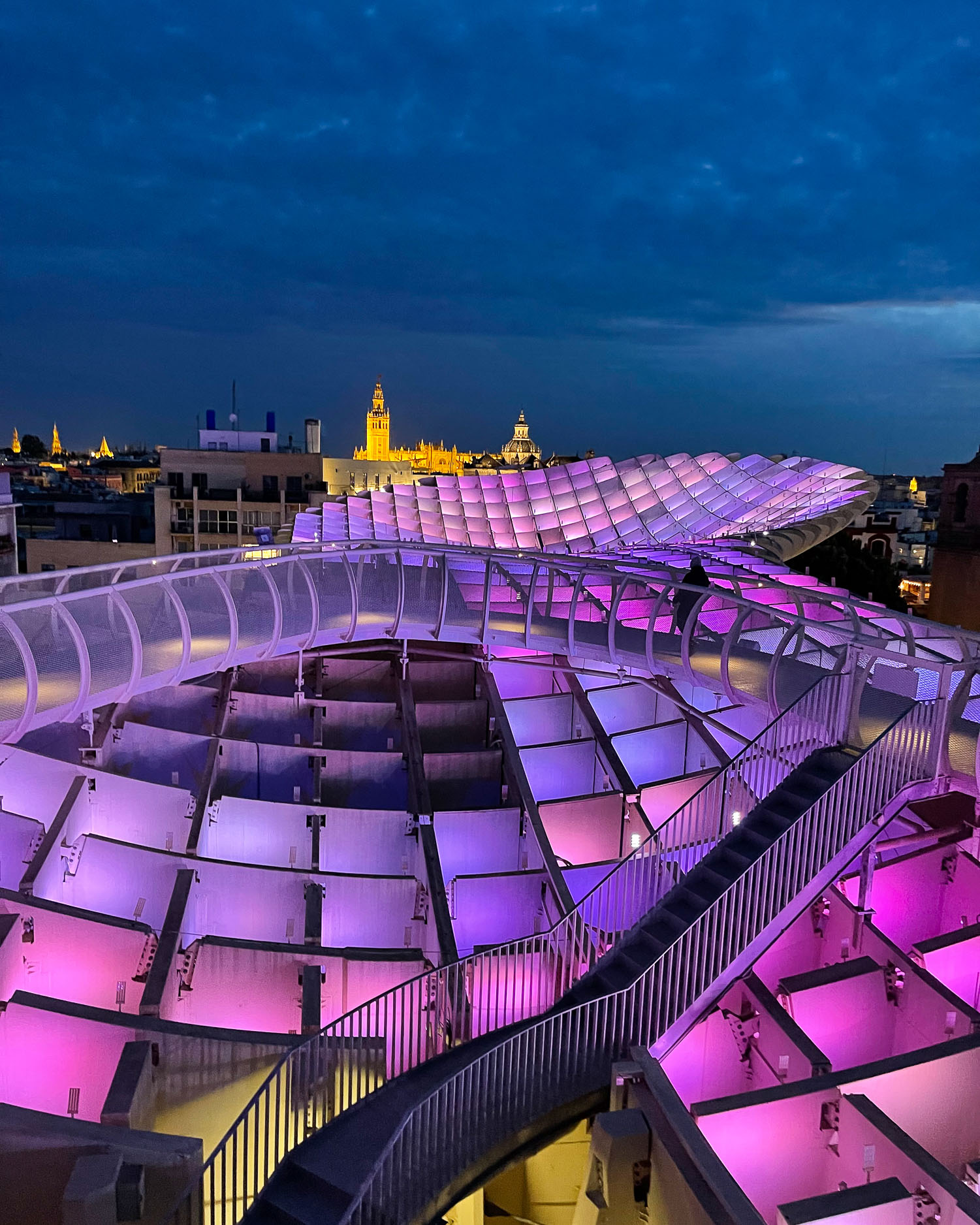
Where to stay in Seville
If it’s your first time in Seville, I’d recommend you stay fairly centrally, so that you can easily walk to all the major sites. For most visitors this will mean staying in the Bario Santa Cruz which is the old quarter close to Seville Cathedral, or the central historic area just north of it.
Another good area where we stayed is El Arenal, the neighbourhood closest to the river which is also an easy walk to all the main sites. If you don’t mind being a little further away (and saving money), you could also stay in Triana just over the bridge or La Macarena which is more of a hipster neighbourhood and around 30 mins walk to the main sites.
To help you decide I’ve also written a separate article on Where to stay in Seville – the best neighbourhoods, hotels and apartments.
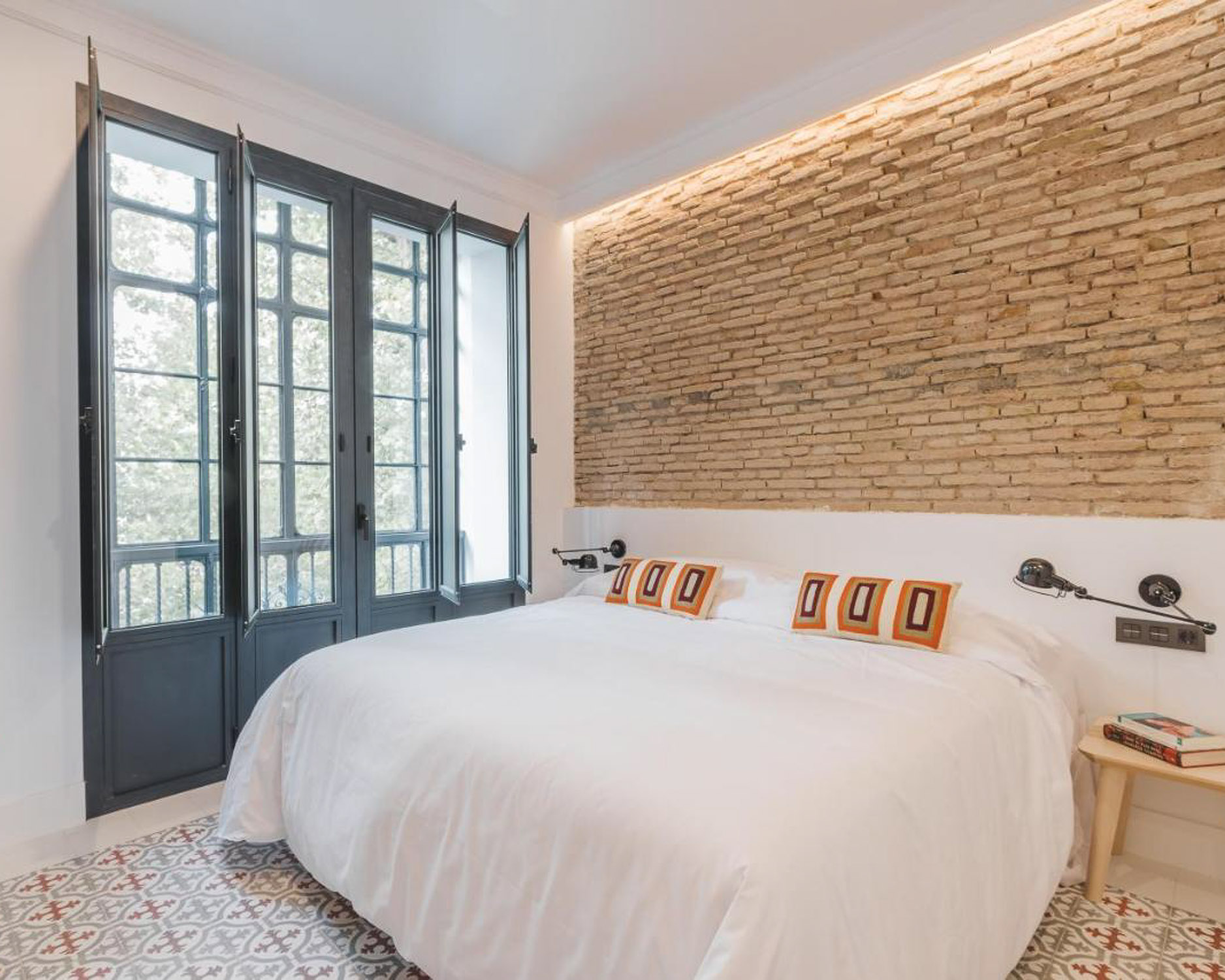
Our stay at Hotel Boutique La Parada del Marques
We stayed at Hotel Boutique La Parada del Marques which was a great little boutique hotel in the El Arenal area, an easy walk to everything we wanted to see. I can highly recommend the hotel, which is stylish and contemporary, with a sunny roof terrace, pleasant breakfast area where you can sit and get a free coffee during the day, and exceptionally friendly staff.
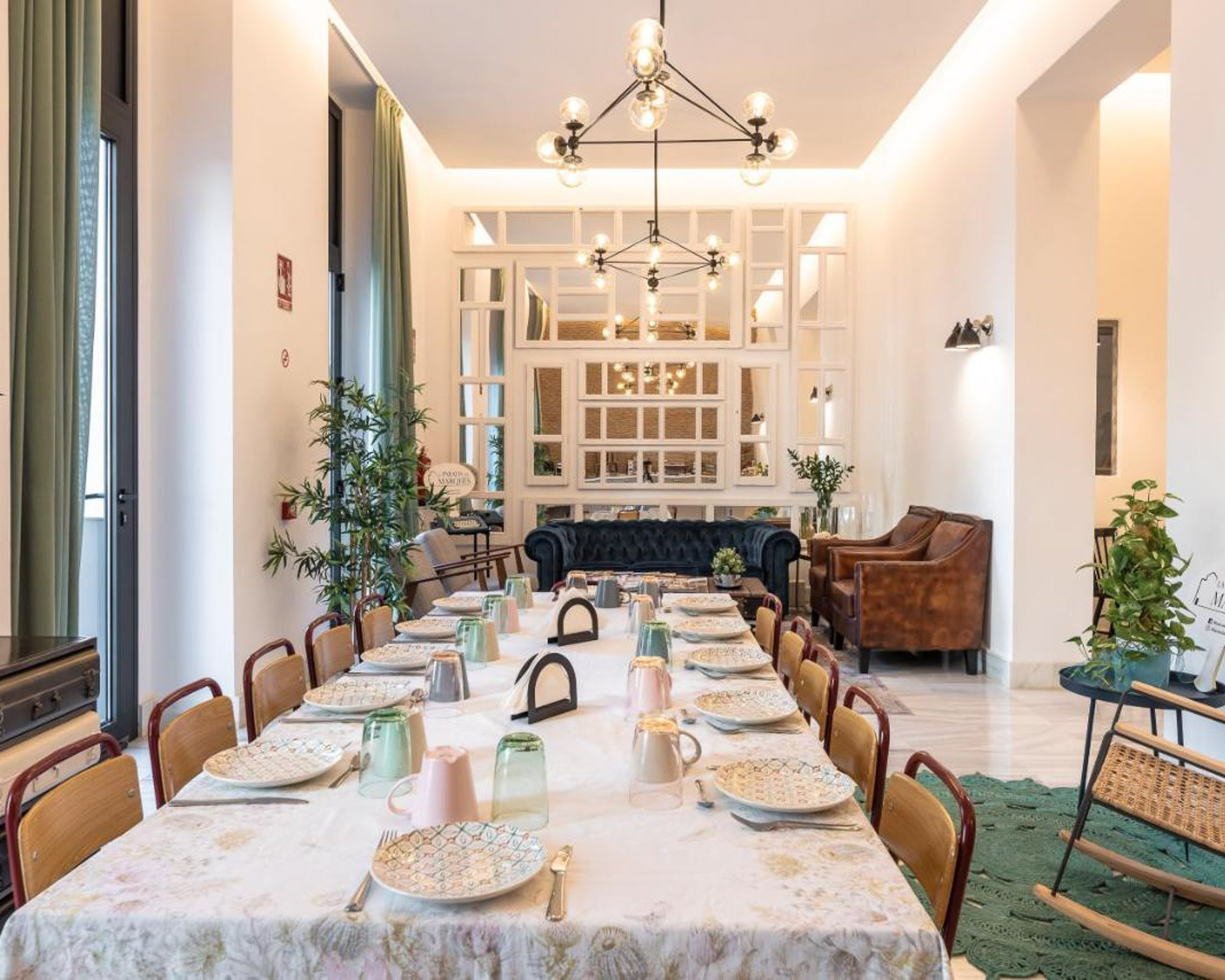
This is an ideal smaller hotel for couples or solo travellers. It’s located on quite a busy road but if you request a room at the back overlooking the courtyards and rooftops there’s hardly any noise.
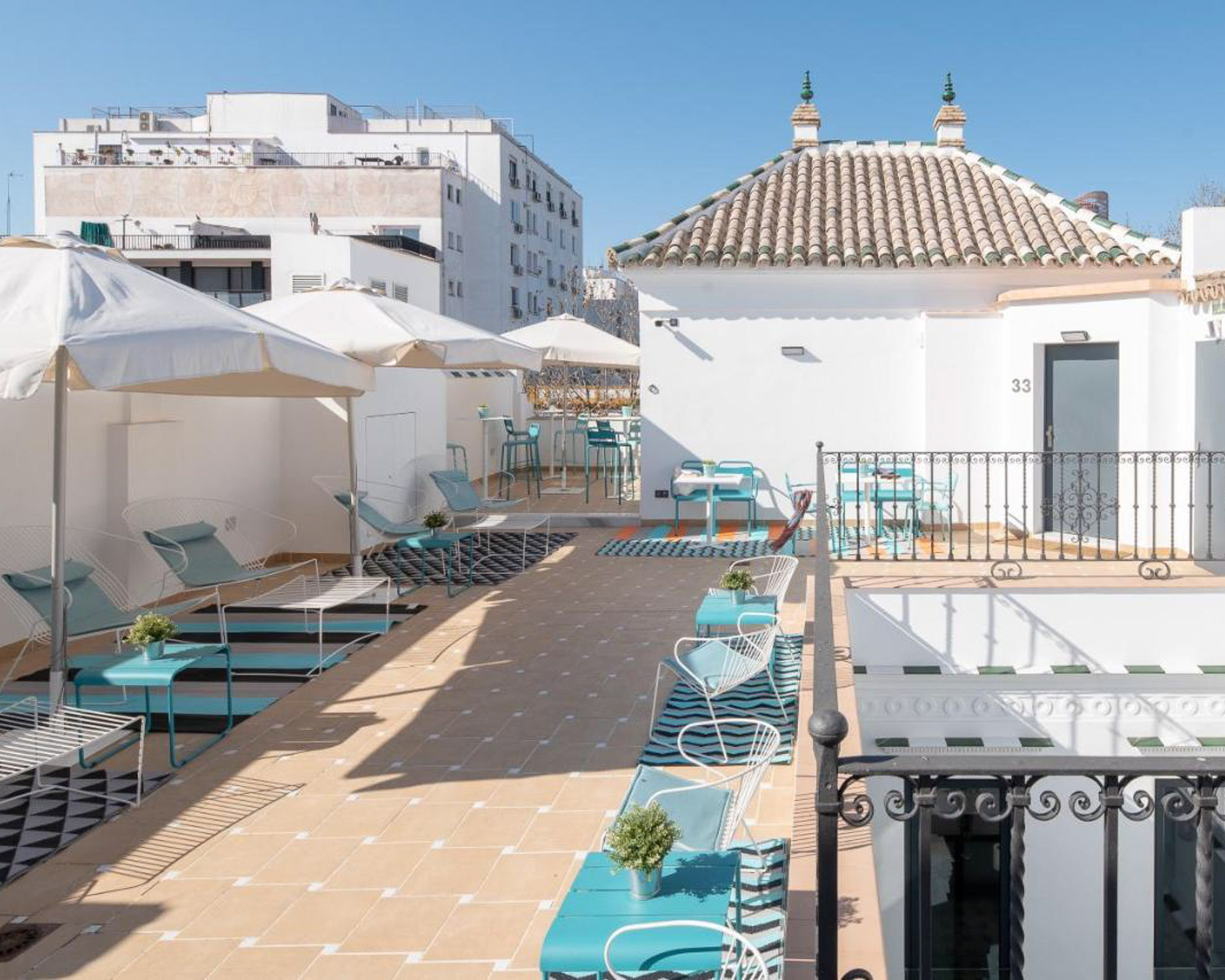

Stay at Hotel Boutique La Parada del Marques in Seville (where we stayed)
Day trips from Seville
If you have enough time, here are a few day trips from Seville that you might like to try.
Italica
The Roman remains of Italica are located to the north of Seville and can be easily reached by public bus. It’s a 30 minute bus ride from the Seville Plaza Armas bus station to the Amphitheatre that was used as a film location for Game of Thrones.
You can also take this 4 hour tour to Italica that includes a guide to tell you about the birthplace of Roman emperors Trajan and Hadrian, and a stop at a Medieval Monastery.
Ronda
You can reach Ronda in a 2 hour drive or 3 hour public bus trip from Seville. To make the experience more relaxing, we recommend this full day tour of Ronda and the Pueblos Blancos of southern Spain.
The trip includes a guide, with scenic views of the Pueblos Blancos (white villages) and national parks, stops for lunch, a visit to an olive oil factory and a guided tour of Ronda. This medieval city is known for its spectacular bridge across the El Tajo Gorge.
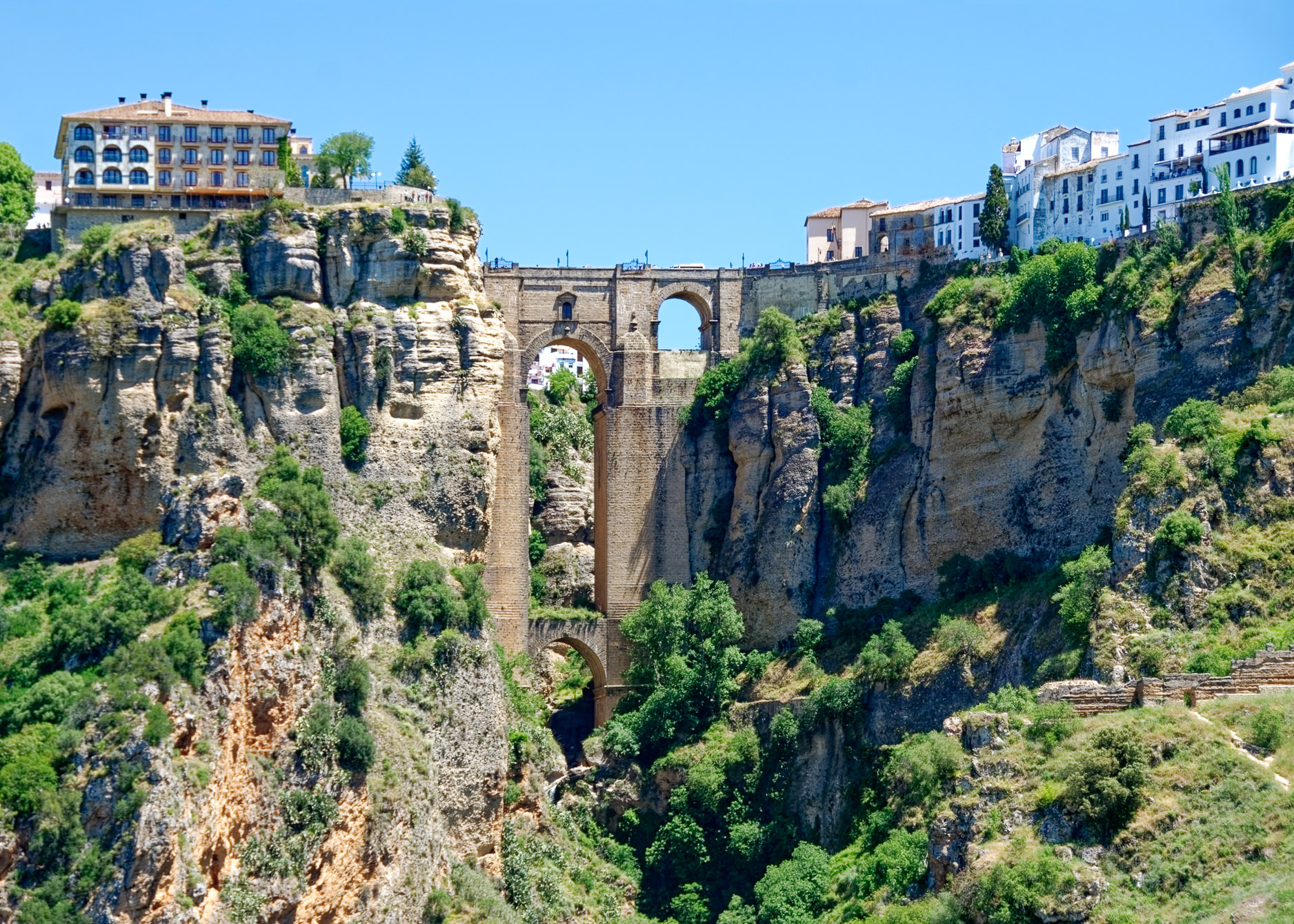
Cadiz and Jerez
The coastal city of Cadiz is 1.5 hours drive south from Seville, and if visiting it’s worth a stop at nearby Jerez, known for its sherry bodegas.
This full day tour of Cadiz and Jerez includes a tour guide and time to explore the seaside town of Cadiz with historic streets, sweeping bay and plenty of tapas bars. The tour includes a stop on the way at one of the bodegas in Jerez to taste some of the local wines.
Cordoba and Carmona
Cordoba is around 1 hr 40 mins from Seville by car or you can also take the high speed train for a 45 minute trip from Seville Santa Justa station. The UNESCO World Heritage city is known for the Mesquita mosque – cathedral, Roman bridge and historic Jewish quarter.
If you prefer to take a tour, we recommend this full day tour of Cordoba with a stop at the pretty village of Carmona, for views over Andalusian countryside.
Doñana National Park
If you are a lover of wildlife, the Doñana National Park is around 1 hr 40 mins by car from Seville. The natural reserve, close to Huelva is known for its marshes and wetlands that provide a habitat for flamingos, imperial eagle and other wildlife.
This day trip to Doñana National Park includes transport in a 4 wheel Drive vehicle and a guide to take you around the different areas and trails of the park.
Plan your trip to Seville
Check prices and book for Hotel Boutique La Parada del Marques where we stayed in Seville. Check for more apartments and hotels in Seville.
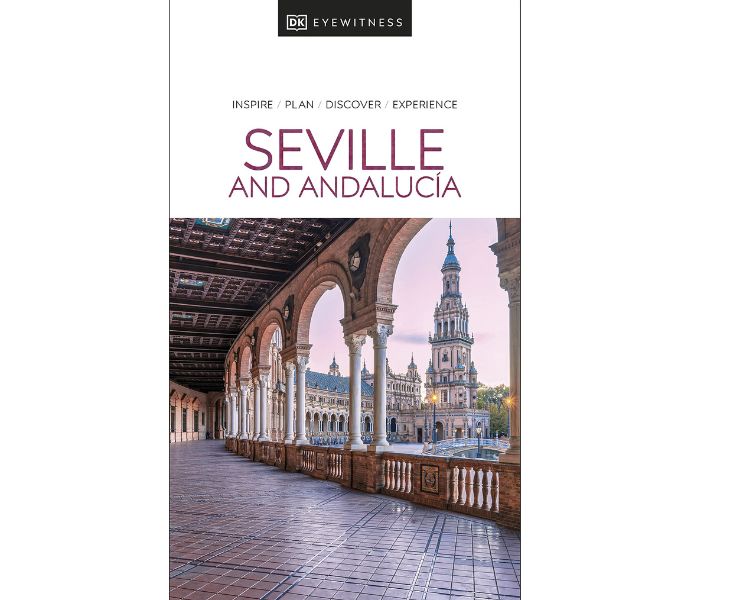
Need a guidebook for Seville? We recommend the DK Eyewitness Seville and Andalucia Travel Guide
This is the guidebook that I used on my trip and I love the picture guides of key sites and the recommendations of neighbourhood walks in Seville. It’s also handy if you are planning day trips to other locations in Andalusia.
For more resources to plan your trip to Seville, visit the official Seville Tourism Website.
Read Next
Discover where to stay in Seville – best neighbourhoods, hotels and apartments
Also check out my article from this trip on the Best Tapas in Seville – Tapas Bars, dishes and tours to enjoy.
More places to visit in Spain
Discover 10 fabulous things to do in Castellón, Spain
Explore 15 cool things to do in Madrid, Spain
Pin it
This article is originally published at Heatheronhertravels.com
Photo credit: Ronda Image by Makalu from Pixabay

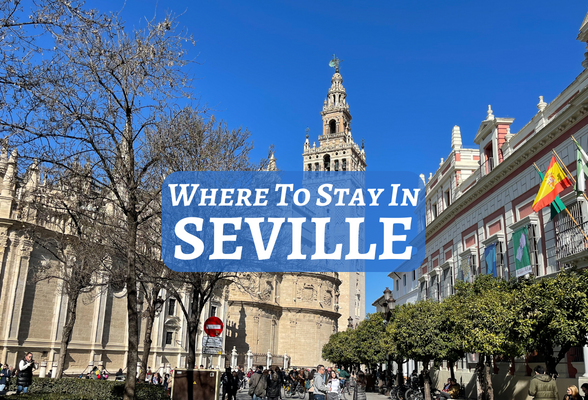

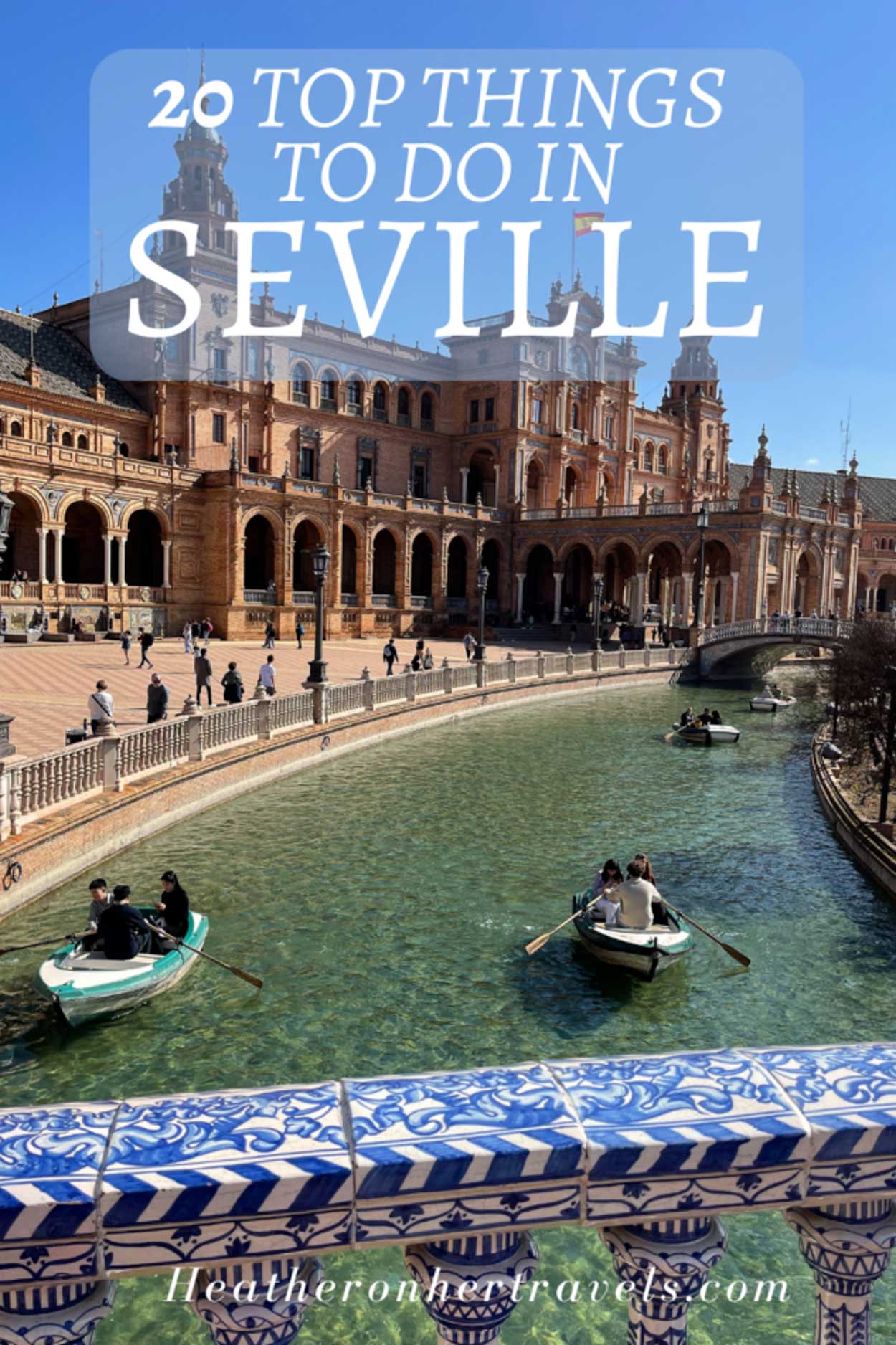
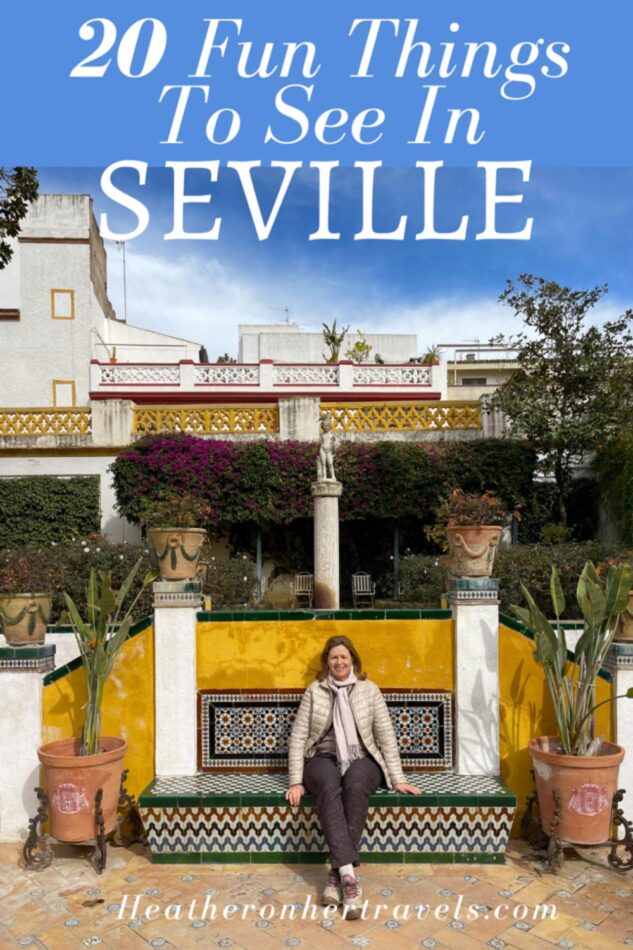

Er. Anurag Singh
Friday 7th of April 2023
I have gone through your blog. It was good. Reading about your blog related to Spain is informative and helpful. As Spain is a beautiful place to visit. Thank you for the article.
Heather Cowper
Wednesday 12th of April 2023
@Anurag Thanks for your comment, so pleased you found the article helpful
az2pt
Tuesday 28th of February 2023
We love Seville, can't wait to visit again this year. Great post and amazing pictures, thank you for sharing.
Heather Cowper
Thursday 2nd of March 2023
@az So pleased you found it useful